How to travel Europe in a campervan, motorhome or caravan
Travelling Europe in a campervan, motorhome, RV or caravan is really one of the best ways to see and experience the continent, but the idea can be daunting at first! If you’re feeling overwhelmed and unsure where to start, don’t panic. This article contains everything you need to know to set you in the right direction. We cover everything from organizing your campervan or caravan and finding places to stay, to the practical things like wifi and finding LPG gas. Keep reading and you’ll set out on your trip of Europe in a campervan or caravan with confidence.!
This article contains affiliate links. For more information, please see our affiliate disclaimer here .

Our story of travelling Europe in a campervan AND caravan
I remember flying to Europe in 2019 to begin our campervanning journey through Europe. We had just had an incredible 5 weeks campervanning around New Zealand and had fallen in love with the freedom and practicality of having our own little home on wheels! I loved the fact that we could pick up and drive off to where ever we wanted, whenever we wanted. We could visit cities, and head to tourist attractions without tours or public transport. We could cook our own meals when we wanted and we didn’t have to lug all our belongings around every where. It was liberating for a long term traveller.
We spent some time with Bens family in the Netherlands while we organised a campervan. He was an old Italian model and we named him Luigi. Luigi was fabulous as we crossed Europe and explored Croatia, Romania and Southern Hungary for the summer with our dog, Whiskey. He felt like home. For us however, there were a couple of key things that Luigi couldn’t offer us, and after a lot of investigation, we decided to try a caravan. This decision was purely based on our circumstances at the time. I’ll explain more in the section on campervans below because don’t worry, your circumstances I’m sure, are quite different.
With our new caravan we headed back to Croatia for the winter, and saw some of Bosnia Herzegovina and Montenegro before Covid hit and we had to return to the Netherlands. The end of 2020 and 2021 has sure put a damper on our plans but we’ve managed to (safely) take the caravan around the Netherland. You can’t keep a good couple, their dog and a caravan tied down!
Well, lets begin at the beginning, with the campervan or caravan. This is an exciting stage that requires a little forethought. You’ll need to decide
- Campervan, motorhome or caravan? Which should you choose?
- Buy or rent: Do you want to buy or hire your campervan, motorhome or caravan?
Motorhome, campervan or caravan – What’s the differences?
What is the difference between a motorhome or a camper van in Europe , I hear you ask? Truth be told, they are different, but you’ll often hear the words used interchangeably. I wouldn’t get too caught up in the wording, except that you’ll need to be quite clear about whether you want a motorhome or camper van when you begin looking to buy or rent yours.
General features of motorhomes, campervans and caravans
- Sleeping area – this will either be a permanent bed, or it will be a seating area that converts to a bed at night. Sometimes your vehicle will have both depending on the size.
- Kitchen facilities – The kitchen can be anything from a small sink and single burner cook top to a larger area with an oven, bench space and a decent sized fridge
- A dining area – A table and some seating
- Toilet – Unless you have a particularly small campervan, it will usually have a portable toilet as a minimum. Larger campervans, motorhomes and caravans will have a properly fitted toilet
- Shower – Large models will have space for a shower
- Storage areas – Excess space will be used to house storage areas in which to store your belongings.
Let’s quickly break down the differences between motorhomes campers and caravans and how they relate to the features you’ll have.
By definition, a motorhome is a larger vehicle that contains a sleeping area and storage space, built into larger van style bodies, trucks or buses. They look quite a bit bigger than say, the easily recognizable VW camper. There are positives and negatives to having such a larger vehicle.
Advantages to a motorhome are related to the size and comfort level of having so much space. The bed is a permanent fixture so you don’t have to put it together every night like you would a convertible seating area. Kitchens in motorhomes are often larger, containing an oven and fridge and adequate bench space for cooking.
There will be a larger, and probably more comfortable lounge and dining area with a fixed table and most likely a bathroom with a fixed toilet and shower facilities. It is also more common for motorhomes to have heating and air conditioning. Newer models may also have floor heating, which is useful if you’re travelling in winter. Nothing is worse than cold feet!
Disadvantages to campervanning Europe in a motorhome funnily enough are also related to the size. The larger your motorhome the more difficult it can be to maneuver through small streets. This can be avoided by sticking to main roads. You may still, however have some issues with parking at camping spots as some do not have spaces large enough for very big motorhomes. Standard sized motorhomes shouldn’t have a problem though.
The other issue with motorhomes comes if you want to visit cities. Especially some of the old cities of Europe. You’ll have a hard time parking anywhere. This can be negated by taking bicycles with you, or towing motorbikes on a trailer behind you. Of course, if you’re staying out of the cities then that solves that problem all together.
If you’re thinking a motorhome sounds like something you’re interested in, don’t be discouraged by the issues, there are thousands of people who get by just fine. Just know that you’ll need to do a little extra planning.
As mentioned, many people these days use the terms motorhome and campervan interchangeably, however by definition, a campervan, also known as a camper van, or camper, is essentially a van that has been fitted out in a more conventional van size.
Advantages of travelling Europe in a campervan include the fact that it is smaller, so it is easier to drive. They handle and move more like a big car. Of course there are variations in the size of campers. The smaller they are, the more true the above is. Parking is also much easier in a smaller campervan, both in cities, at tourist sites and at camping places in most countries.
Disadvantages depend on the overall size, they may have a permanent bed, or seating that needs to be converted. The kitchen is often smaller, with a smaller fridge and limited bench space. Seating and table space will also shrink as the size of the campervan gets smaller.
These are not necessarily all bad things, just make sure you choose an option that suits your needs. If you cook for example, a kitchen with a larger kitchen but smaller seating area may be preferred to a larger seating area with a smaller kitchen. The campervan layout is the most important thing.
I don’t think it needs to be explained that a caravan doesn’t have an engine. It needs to be pulled by another vehicle. The advantages and disadvantages of a caravan are the same as those for motorhomes and camper vans in relation to size. The bigger the caravan the more space and the larger the facilities and storage. The smaller the caravan, the easier it is to tow and the less space you’ll find inside.
The main advantage to a caravan over a campervan or motorhome is that you now also have a separate vehicle. You don’t have to pack everything up every time you want to go somewhere, you just lock up the caravan and drive away. You’ll also never have a problem with parking, unless of course you’re dealing with normal city traffic.
If you’re trying to decide between buying a motorhome or a caravan, we’ve had both and have written a complete comparison article to help you choose what’s right for you.
Which is better – campervan, motorhome or caravan for travelling Europe?
This is quite a personal question and I would encourage you to think about the following things
- How long do you intend to travel?
- How confident are you driving a large vehicle or towing?
- What is your daily/weekly/monthly budget?
- Do you want to stay at caravan parks or in the middle of the forest?
- How much space do you need?
- Are you able to buy a caravan and a car in Europe?
- What kind of places do you plan on spending most of your time? For example old European cities, or out in nature?
The reason we swapped our campervan for a caravan
Our campervan to caravan journey was actually a three step process. In New Zealand we had a small camper. We then upgraded to a larger campervan for Europe. Then we decided on a caravan. Our reasons were the answers to the above questions.
We intend to travel long term. For us that means that we want to be comfortable as it is an ongoing situation. We personally had two problems with Luigi, our large campervan. The first, was that we love old cities, and we sometimes had a hard time driving around and parking him. Others get around this issue by taking bicycles or motorcycles. They leave the campervan somewhere and they bicycle to the attraction, or to the supermarket even. This wasn’t an option for us as our dog Whiskey was old at the time when we switched to the caravan. He has since passed.
Based on our needs we felt a car would be useful for us.
We also needed more space and obviously getting an even larger motorhome wasn’t on the cards for the reasons above. If however, you’re travelling for a month or two, or without a dog, then less space is perfectly manageable. We had no issue in New Zealand with our smaller camper for 5 weeks.
Many, many people travel Europe in a campervan with no issues at all and we were very sad to see Luigi go. Just know, however, that a caravan is a genuine option.
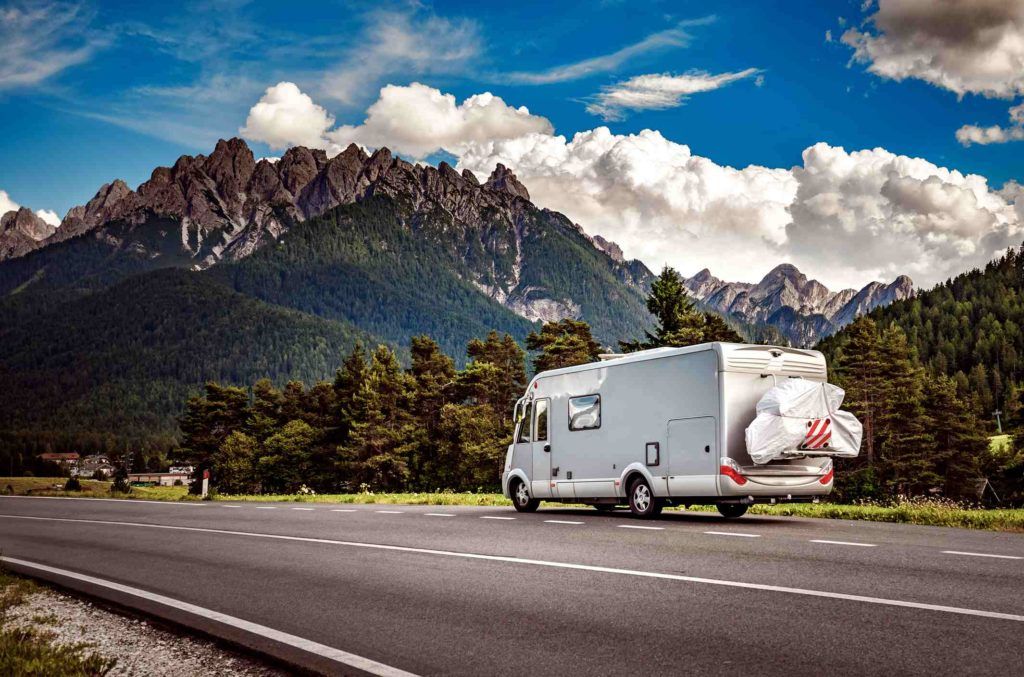
Campervan layouts – some things to consider
Before you begin looking at campers or motorhomes to hire or purchase, it helps to have a bit of an idea about the layouts and what is best for you.
The sleeping situation
Campervan beds can either be fixed beds, or seating that can be made into beds in the evening. Not only that, they can also be high with a ladder, like a bunk bed. For example the bed may be on top of the drivers compartment, as in the photo below. That window is where the bed is.
If you’re young and agile then climbing the ladder into bed is not so difficult. However if you’re not…
The size of the beds is also important. Ben is a big guy. Not only that, he overheats at night. Our beds in Luigi were too narrow for us both to comfortably sleep. Our campervan had a second ‘bunk style’ bed at the back and I slept in that one. When we decided to sell Luigi, we knew that we wanted a bigger bed that we could share.
Cooking in a campervan
So, I cook. I like cooking, we eat pretty healthily, it’s important to me. When we campervanned around New Zealand, our campervan fridge was so small we had to shop every second day. Luigi had a bigger fridge but it still wasn’t ideal. When we upgraded to the caravan, a big fridge was a must.
Cooking in a big campervan or motorhome is much easier than cooking in a small one. That doesn’t mean though, that cooking in a small campervan is impossible. You find your own tips and tricks and ways of making it work. You will however have to get used to going back to basics, as in a smaller campervan there is not a lot of room for a variety of pots and pans and certainly none for different kitchen equipment and things like blenders or slow cookers. Even if you had the bench space, you won’t have anywhere to store them.
Privacy.. what’s privacy?
The smaller your campervan the less privacy you’ll have. Conversely, the larger your campervan or motorhome, the more privacy you’ll be able to niche out. If you’re travelling with friends, go bigger.
In a very small campervan you won’t have any room division. If you have a toilet, it will most likely be a cassette toilet, which is like a small box that has a hole with a seat around it. With no division of the room, peeing becomes a pretty public act.
The larger you go in size, the more likely it is that you’ll have a separate ‘toilet’ room. So that’s something. You may also have a door or divider that breaks the camper into smaller sections. Our caravan now, for example, has the main living space, then a sliding door that closes off the bedroom and bathroom together.
Heating and air conditioning – yes!
If you’re travelling Europe in the shoulder seasons than maybe you can get away without heating or air conditioning, but in the height of either winter or summer, you’re going to want them, trust me.
We were in Croatia in the height of summer with our air conditioning free campervan. There was literally a night that all 3 of us (including our dog Whiskey) slept outside because it was so, so hot. 2 days later we left Croatia for Romania which is a few degree’s cooler during the day, but much cooler overnight.
Our caravan now has both good heading and good electricity. Having done two winters in the caravan I’m confident saying that you won’t survive a European winter without heating.
After campervanning around New Zealand we wrote an article on things to consider when choosing a campervan , have a read and it’ll help you to think about layouts and facilities that are important to you
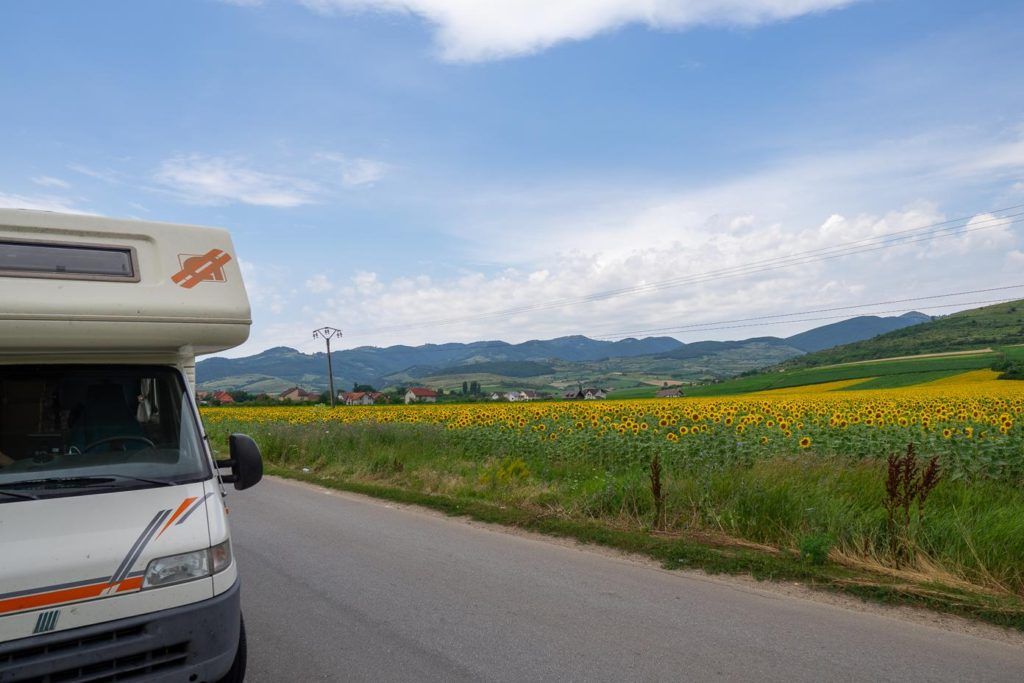
Buying or renting a campervan, motorhome or caravan in Europe
Hiring a campervan in europe.
Advantages of hiring or renting a campervan to travel Europe
- Quick and efficient, faster and easier than buying
- Everything is taken care of for you
- Easily available to non EU citizens
- Comes (almost) fully stocked
- A great way to try different models ‘before you buy’
- If you breakdown or have an accident the company will help you
- More convenient for a short trip
- Renting a more luxury model for a shorter time is cheaper than buying a brand new luxury motorhome
Disadvantages of hiring or renting a camper or motorhome
- The primary disadvantage is the price as it will be more expensive in the long term.
Expert tip : We always use Motorhome Republic to hire our campervans. It’s a great platform listing all the companies and their available vehicles so you can compare and find the perfect motorhome for you.
Buying a campervan in Europe
If you’re a European citizen you should have no problem buying a campervan or caravan in Europe. We’d recommend doing your research and possibly hiring a campervan for a smaller trip before you commit to purchasing one, just so you can really test it out. You may find something is important to you, when you hadn’t thought about it previously.
If you’re not an EU or UK citizen, it can be more difficult to buy a camper van as you’ll need a fixed address somewhere in the EU or UK in order to have the vehicle registered and insured. The good news is that there are ways to do it and we’ve met people on the road who successfully managed it.
I have to confess we’ve never had a problem buying our campervan or caravan in Europe as Ben is from the Netherlands. Obviously then, I haven’t had to use any of these services. I’ve done my best to research this section for you and point you in the right direction but I can’t make any personal recommendations as we haven’t done it or dealt with any companies relating to this.
For a complete guide to buying a motorhome in Europe as a non resident , you can check out our complete guide.
3 ways to buy a campervan in Europe for non-EU or UK residents
- Purchase your campervan in the UK using a relative or friends address.
Apparently the UK is the most relaxed country in Europe when it comes to registering vehicles for non-UK residents. You will need a UK address, however this can be a friend or family member. If you buy a camper direct from a dealer, you may be able to use their address for the registration of the vehicle.
Be aware that if you buy a vehicle in the UK it will be a right hand drive. This is different to the rest of Europe who drive on the left hand side. It’s not only the steering wheel that is different. The door to the campervan or motorhome will also be ‘on the wrong side’. If you stop your right-hand drive car on the side of the road in mainland Europe, you’ll likely be stepping straight out into traffic.
2. Buy your camper in the Netherlands or Germany
Campervanning and motorhoming are HUGE in the Netherlands and Germany, as it is in most of Europe. Both countries have businesses that will act as ‘middle people’ in the sale process. Some of the businesses will sell their own campers. Other businesses operate a sort of ‘fixer’ type situation. If you find a campervan online that you like, for a fee, they’ll go and inspect it for you. They’ll help to handle the sale transaction, the registration and insurance. Of course you pay for all of their services.
3. Buying a campervan in France.
Euro Camping Cars in France have established a unique and perfectly legal system for helping non-Europe residents buy a campervan or motorhome in France. Again, I haven’t done it, but it is legal, and many people have had great success. Their website explains everything you need to know about their services.
Consider looking for companies with buy back schemes
You’ve found a way to legally buy your campervan or motorhome in Europe as a non-resident. You’ve travelled around and loved every minute of your road trip. Now what? What do you do with your camper when it’s time to go home?
Firstly, you will need to sell your camper in the same country from which you purchased it. This will save you a lot of hassle. Secondly, how do you sell it quickly and easily so that you’re not sitting for another few months waiting to get your money back?
A buy back scheme is a great option. It simply guarantees that the place where you purchased your campervan, will buy it back from you at the end. They will obviously pay a reduced price. The longer you drove it, the more kilometers you did, the less money you will likely get back.
In which country should you hire or buy your campervan?
If you intend on buying, then obviously you’ll be restricted to the options and countries in the section above.
When you hire a campervan you’ll have plenty of options and can essentially hire a campervan to be picked up in any country. Consider your road trip itinerary before you make any decisions. You’ll want to know where you intent to start your trip. Also be aware that in most instances, you’ll need to return your camper van to the place where you picked it up. This means your trip will need to be a loop, or a general shape with a last minute dash for the starting place.
Insurance is necessary to travel Europe in a campervan
Insurance is mandatory in all European countries, and it’s the best thing you can pay for and not need. When you hire you campervan you can be assured that the company will offer you proper insurance for the vehicle.
One thing to take note of are the countries that are covered under your insurance. If you get your insurance in a Schengen country, the Schengen area is covered. However not all non-Schengen countries are covered under every policy. You’re best to confirm this when you get insurance otherwise your insurance card will tell you. Most western European countries use insurance cards that look like a credit card with your details on it and these will be valid in all countries except the ones that have a little x through them on the card.
If you try to enter a country outside of the Schengen area that is not covered by your insurance, you’ll simply need to ‘buy’ insurance at the border.
Be mindful that a little dent in a campervan, however unlikely, can quickly result in a very high repair bill. Be sure that you either buy the insurance excess, pay the excess upfront or you have coverage through your travel insurance to avoid huge issues in case of an accident.
Road side assistance
If you’re hiring your campervan, your hire company will usually assist you with any issues such as breakdown or accidents. If however, you have purchased your campervan and it’s insurance, you’ll usually deal with the insurer for damage and road side assistance if you break down. And trust me, road side assistance is helpful.
When we hit an enormous pothole in Romania and Luigi (our campervan) totally shut down on the side of the road, we were grateful for the road side assistance who found the nearest garage for us and organised someone to come and help. When they couldn’t fix him, they loaded Luigi onto the back of a flat bed truck, with us and our dog Whiskey still sitting inside! It was a slightly nerve wracking drive as we swayed and bounced our way into the nearest city on the back of the flatbed truck. An hour after that we were on our way again. Everything was handled by road side assistance.
Make sure you have refillable gas bottles, and enough of them, to get you through a decent period of time. Gas can be difficult to find, especially in some countries, so don’t let your bottles get completely empty before refilling them. If you have a lot of your items running on gas it’ll obviously go faster.
In the summer months, we only use gas for cooking and for our fridge while driving. A bottle can easily last us a few months. However our heating in the caravan runs on gas. Last winter, we sat for a week in -14 degrees. We obviously had the heating on the whole time and a gas bottle would last us 3-4 days! We would change it every 3 and run a full one overnight so we knew that it wouldn’t run out while we were sleeping. In the morning we’d reconnect the almost empty one to use the last of the gas when we were awake and could notice the heating was off.
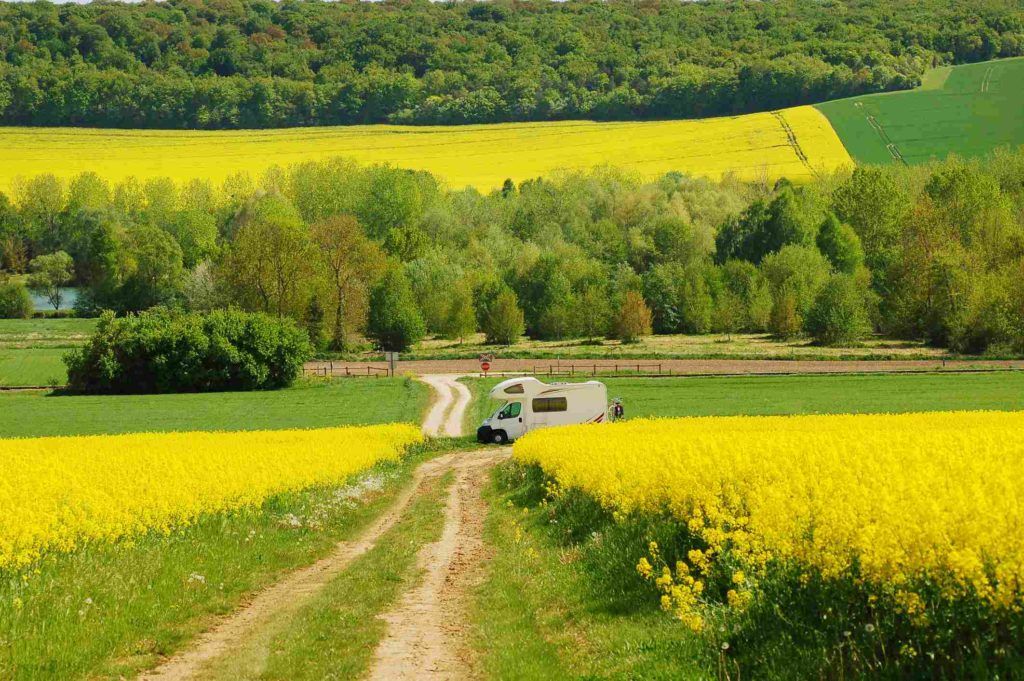
Gadgets and helpful items for Campervanning in Europe
Having a good navigation system is really helpful in getting around. It’ll save you a lot of time and effort in doubling back and getting lost. Not only that, the larger your campervan or motorhome, the more helpful a sat-nav can be. Get one where you can enter the dimensions of your campervan and it will (for the most part) avoid sending you down narrow one way streets.
Of course you’ll still need to use your own judgement and common sense. Look out for sign posts and information and change your direction early if you think you’re heading somewhere where you’re not going to fit!
12V USB Port Adapter
You’ll need to be able to charge your phone and/or sat-nav while driving. This adapter goes in the old cigarette lighter hole and will keep everything charged while you’re navigating. There’s nothing worse than running out of battery half an hour before you’re supposed to arrive at a new destination.
An inverter
If you have electronic devices such as laptops and camera’s you’re going to want an inverter. An inverter takes the energy from the campervans engine and converts it to electricity you can use to power your devices. You’ll especially need this if you want to stay off the grid and wild camp.
Motorhome, campervan or caravan awning
An awning is really useful on a nice day to protect you from the hot sun. Many campervans will come with a built in awning that you roll out. If you hire a campervan it may come as an add on that you’ll need to rent separately. When we bought our caravan there was no awning, so we simply purchased one that slides onto the caravan and can stay there permanently.
A water filter
We had travelled for quite a while without a water filter and it didn’t seem to bother us until we spent a few weeks in Istria, Croatia, and the water tasted horrendous. We have refillable water bottles we take everywhere, rather than buying plastic, and we were really having a hard time drinking the water there. At the time, as a quick solution we bought a cheap small filter which helped… enough.
Bicycles come in handy when you’re campervanning in Europe. It’s much easier to jump on a bicycle and cycle to the shops than it is to pack up the whole camper or motorhome and go. Bicycles are also a great way to get into a city or a green zone. You can park the campervan somewhere safe and easy and ride the bike in. It’s really common to see motorhomes with bicycles on the back for this reason.
The Gross Vehicle Weight of your motorhome or campervan
Aside from the dimensions of your camper, you’ll want to take note of the gross weight of the campervan or motorhome. It will have a maximum weight that you’re allowed to carry. The more ‘stuff’ you load in, the heavier you’ll be. When you’re working out what to pack, try to remember that just because you have some space doesn’t mean you should fill it. Leave some space so you can collect things as you go.
Essential Apps to download to your phone
Apps to find camping places.
Park4Night ( park4night.com ) an app that is fantastic for helping you find free overnight parking near you.
Apps to make life more enjoyable on a road trip
- The Kindle App will allow you to download books so that you’re not having to try and buy them as you travel
- Borrowbox is an app that is used by some libraries, it allows you to borrow E-books for free
- Audible – You pay for books you download on audible but you own them
- Spotify – It’s worth the small monthly investment to have some good road trip music
Connectivity and WIFI throughout Europe
Let’s face it, life is a lot easier if you have internet. Especially when you’re heading into new countries and unknown territory. It’s also helpful if you want to keep in touch with loved ones. I remember solo backpacking in Cambodia and my dad freaking out because I wasn’t replying to his text messages. I was at Angkor Wat at the time and 1000 year old temples don’t often have WIFI. Needless to say, I bought a sim card the next day.
If you stay at camp grounds they will often have internet although how good it is will vary considerably. If you need good internet, I’d recommend getting a dongle and using pay as you go rechargeable data like this. Three is a fantastic company with good reception throughout a lot of Europe.
Campervan and motorhome security – How to keep your belongings safe
Generally speaking, I would say that when you’re travelling in Europe, your at no greater risk for theft or a break in than you are in your home country. That being said, we’ve never had any problems and maybe someone who has experienced a break in might disagree. As everything you presumably want and need is inside the campervan, it’s understandable to be worried.
I was never really worried in camping places, but I was more concerned when we had to park the campervan in an isolated place. This happens say, when you’re going hiking and you drive to a remote car park, or, it happens when you want to see an old city and you can’t get parking so you end up parking down some random backstreet. It’s the only place you’ll fit.
There’s different strategies and tips, and everyone’s opinion differs. Some say leave all your blinds open so everyone can see if someone is in there. Others say leave them closed so the potential robber can’t see whether YOU’RE in there or not.
At the end of the day, I always carry our most valuable items on me. Passports, laptop, camera, phones etc, all go in my day bag if we leave the campervan in a remote place.
The other option is to purchase additional door and window locks.
Driving in Europe
Driving is different in Europe in that you’ll be driving on the right hand side of the road. Other than that, it’s not that dissimilar to driving in countries like America and Australia.
In western Europe in particular, the roads are pretty good and you shouldn’t have any issues, however the further east you move, the worse the roads become, I think I mentioned the pothole in Romania that stopped our camper in it’s tracks.
Do you need an international driving permit?
Anyone who’s drivers license has been issues outside of Europe should get an international driving permit . Although it’s not mandatory in all European countries, some countries do require it, alongside your normal drivers license.
Green Zones
Green zones are environmental zones, usually in cities, that restrict entrance to cars that do not meet emission requirements. Some places ban diesel vehicles all together, others may allow you to drive there provided you have received a green sticker indicating you’ve past an inspection. The reality is that if you’re in a large diesel motorhome, you’re probably not allowed in the green zone, and even if you were, you’d never be able to park in there.
As a general rule, avoid green zones, or park the camper somewhere safe and ride a bicycle or take public transport into the city if you want to go.
Petrol/Gas stations
By far the most expensive place to buy fuel is along the highways. If you need to fill up, go a little further in to a town, away from the motorway and you’ll find it to be a lot cheaper.
I’ve said it a few times already, but trying to park a large motorhome can be stressful. Some tourist sites will have large carparks, catering to the community campervanning Europe, but not all of them will. It is difficult for anyone to park in a city, let along a vehicle that’s twice as long as a normal car.
Reverse parking, or even just reversing a large campervan or motorhome can be difficult and many people find a reversing camera to be of great use.
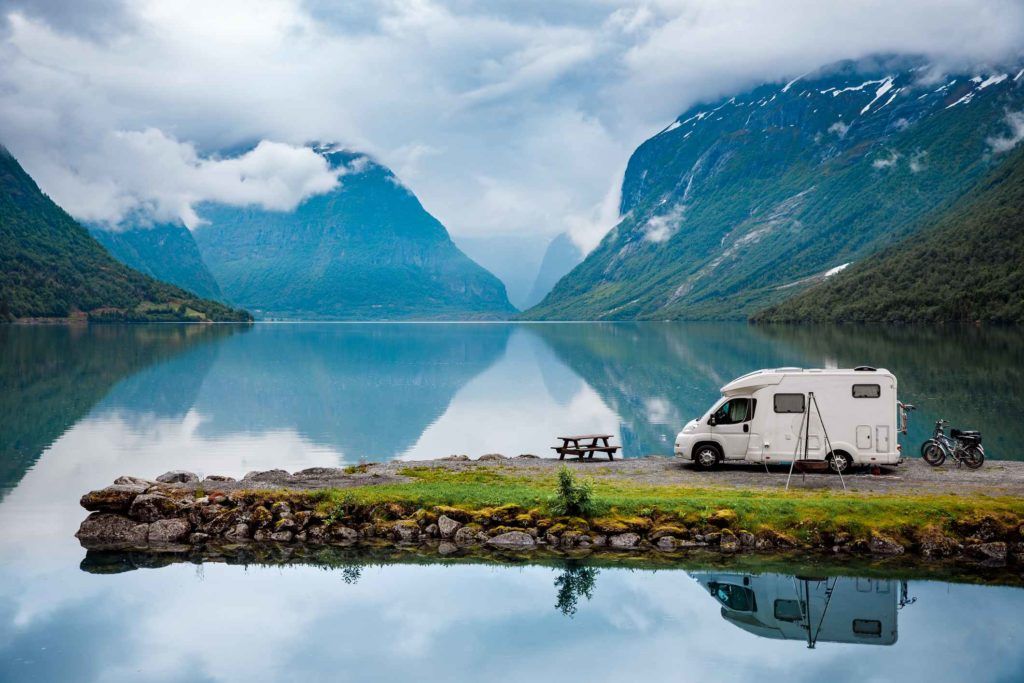
Other factors to consider when travelling Europe by campervan
Road and safety equipment.
Most European countries have mandatory safety equipment that you’ll need to carry on you at all times. If you hire a vehicle, make sure that they supply you with everything you need such as fleurescent orange vest and safety triangles. Winter tires are a legal requirement in most countries during the cold season. You may also need snow chains if you plan on going into the mountainous areas in winter.
If you buy a campervan you may need to source the safety equipment for yourself if you didn’t receive it.
Vignettes and road taxes
Vignettes are stickers that you add to your windscreen in certain countries to show that you have paid for the privilege of using their roads, mainly highways. The countries that use vignettes are
- Czech Republic
- Switzerland
You can usually buy a vignette at border crossings or at petrol stations close to the borders. You must have one or you can be fined.
Road tolls and a toll pass
Many countries have tolls their motorways. If you’re spending a decent amount of time in a country that has tolls, and offers a toll pass, it can be an easy way to avoid the long lines that sometimes occur at the toll way.
Security, Safety and emergencies
To be perfectly honest, we’ve never felt anything other than safe and secure in Europe. The only concern we ever really had was when we couldn’t find anywhere decent to park the campervan. It was sometimes necessary to park in places that we were unsure about. Other than that, most countries in Europe are safe and other people at the campervan sites are just doing what you’re doing and trying to enjoy life.
If however you have an emergency, the emergency number in Europe is 112.
Winter in mountainous regions of Europe
If you plan on driving in the mountains in winter, you’ll probably require snow chains. Make sure you know how to fit them properly. If you’re hiring a campervan, the hire company should show you how to do this.
Blood Alcohol Concentration
It’s important that you know the legal Blood Alcohol Concentration (BAC) for each country that you go through as it varies between them. While some countries have 0.05, others have a legal BAC of 0, meaning you can’t drink at all before driving.
These are really the main things that you’ll need to consider when planning to travel Europe in a campervan but don’t let it stress you out. Make sure you cover the basics and the rest you can deal with as you go. You’ll love the freedom, I promise.
Where to stay with your caravan or campervan in Europe?
Campervan parks.
There are quite a few options for places to stay overnight with your campervan. We stay at campervan parks, also known is holiday or vacation parks. Here you have access to facilities such as showers and toilets, and washing up and laundry rooms. It is possible to find some incredible campervan parks throughout Europe.
Overnight parking places
Many countries have over night parking places where you can stop if you’re just driving through. While some are nicer and designed for tourists, others are essentially truck stops, but will do the job. They’re free if you don’t want to pay. You can find these on the park4night app that I mentioned above.
In France you’ll find Aires de Service, or aire de camping car, which are places that you can stop for the night. They cost anywhere from free to €15. For an extra fee you may be able to dump your grey water and fill up your fresh.
Wild camping
Wild camping, known as freedom camping or free camping in other places, is not so common, but fairly easy to do in Europe. This is where you stop somewhere that is not a designated camp site, for example, in the forest. To do this you’ll need your campervan to be fairly self sufficient. You’ll also need to check the laws of the country you’re in as it is illegal to wild camp in certain countries.
ACSI card for discounted camp grounds
If you’re travelling in Europe in the off season, this card gives motorhomers, campervanners and caravaners great discounts on campsites and is well worth getting. As mentioned, only if you’re travelling in the off season.
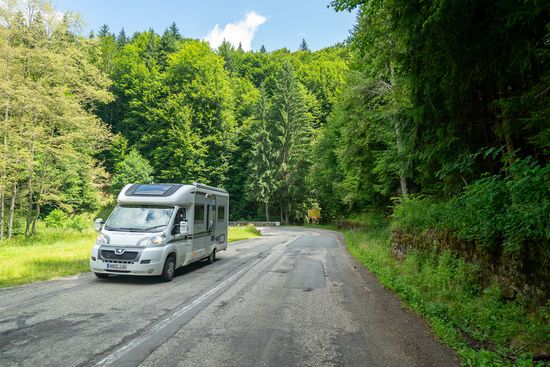
Where can I travel with a campervan in Europe?
Everywhere! In reality, you can travel across most of the continent in a campervan, motorhome or caravan. Europe has open borders so you can freely move throughout the region. Once you’ve crossed the border into one country, you’ll need to abide that it’s rules and regulations. I’ll cover that more below.
Europe by campervan: Travel Routes and Itineraries
Where to begin your road trip, or hire your campervan or motorhome.
Where you begin your trip and collect your camper is up to you. It makes sense to fly in to Europe and collect your camper from the same place. The exciting thing is that the best place to begin depends on your itinerary. Where do YOU want to begin your European adventure?
How to plan a European Campervan Route or Itinerary
Planning a route or itinerary for Europe, or for any road trip is quite a personal experience. You can either plan everything out, from where you plan to stop, what you plan to see and how many days you intend to stay. Or, you can leave it fairly open. I prefer to leave it open and really just plan the main stops. With plenty of space to move in between.
Before you leave home you’ll probably want to have at least a general route or itinerary planned.
European seasons
Europe is huge and the climate varies greatly across the continent, but also across the seasons. You’ll definitely want to factor this in during the preparation phase.
Cooler seasons
November to April are the winter months. These can be difficult for campervanning due to snow and ice on the roads. Not to mention that the temperature can get well into the minuses. It is possible, however you’ll need to be prepared.
If you want to travel in the winter, there are a few countries more suitable. For example, the south of Spain and parts of Croatia, Montenegro and Albania have a milder winter. Whereas central Europe, the Scandenavian Countries and those to the far west have bitterly cold winters. Not ideal for a campervan.
When campervanning in Europe in the winter, you won’t have as many accommodation options as many camp grounds close for the season. Those that remain open will usually have less facilities available.
Warmer seasons
Generally speaking, most people will campervan Europe during the warmer months. May to October are great months, with June, July and August being peak season.
From mid spring to mid autumn, the weather vary’s from balmy to hot, making the summer peak seasons for travellers. The coastline along the bottom of the European continent is buzzing as thousands flock to coastal towns.
Although it’s a great time of year to travel, summer in Europe poses it’s own challenges. The coastal areas of all countries are incredibly busy with both overseas and European travellers alike. Prices are also their highest at this time.
For motorhome or campervan travellers, you’ll need to consider whether you get air conditioning. Our first campervan in Europe did not have air conditioning. At the height of summer, on the Croatian coast, Ben, Whiskey and I all slept outside on the ground. It was just too hot to bare. Two days later we left Croatia for Romania which is a few degree’s cooler over night.
Peak periods
Europe is home to some of the worlds largest events, think Tour De France, the Dutch Keukenhof, or Germany’s Oktoberfest. Thousands of travellers flock to these area’s in the lead up to these events. You’ll need to be prepared if you want to join them. Otherwise you’re probably best to stay away from those areas at those times.
Another issue can be the ‘school holiday’ period, during summer in Europe. Popular campervan parks can book out months in advance.
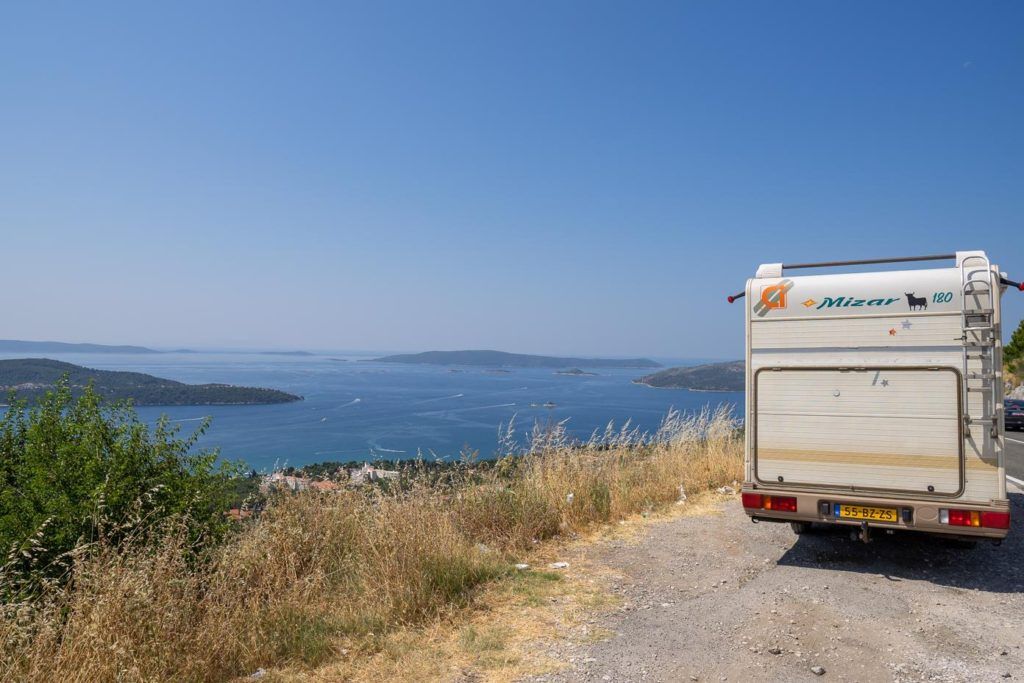
Using ferries on your European road trip
A great way to get from A to B without driving the long way, or simply to get on and off an island, like England, Ferries are part of most peoples campervanning experience in Europe. Connecting countries like the UK with France, Spain and the Netherlands, and Italy with Greece, Turkey or Croatia, it’s a fast and efficient way to travel.
Depending on the size of your motorhome or campervan and the distance you need to travel, you can pay anywhere from a €200 to €1000 euro per trip.
Using google maps to plan your European Campervan adventure
Get comfortable using google maps route planner when you’re planning your trip. I really like it because it gives me distances and times for travel. For example, I might decide to leave one place and drive to the next, The distance always looks so small on the map but google maps says it’s a 9 hour drive! Then I can try to find a place to stop in between for the night or find something that we might want to see or do for the day.
You can also download offline maps which helps if you think you might be going somewhere with no internet access.
It’s a really useful tool.
Costs and budget for travelling Europe in a campervan
Ultimately your budget will reflect your personal travelling style. It is heavily influenced by how many attractions you visit or how often you eat out compared to cooking in the campervan. Accommodation costs will vary from person to person, for example staying in high end campsites every night will be more expensive than wild camping, which is free. Your campervan hire or purchase price will be your most expensive initial outlay.
Some necessary and regular expenses are
- petrol or diesel for the campervan
- campervan site fee’s
- Admission fee’s to tourist attractions
- Gas for gas operated cook top or heating in the campervan
- Laundry facilities (sometimes you have to pay at the camp sites)
- European road tolls
- European Vignettes (see below)
- Public transport if you leave the campervan at the campsite
Apps for tracking your spending
It’s really helpful to keep track of how much money your spending. It disappears so quickly when you’re paying little bits out here and there. Petrol, gas, the camp ground for the night. Keeping track as you go means you’ll make it comfortably to the end of your trip rather than running out half way through.
Two great apps you can download to your iPhone are Trabee Pocket and Trail Wallet. They are both pretty similar and will help you keep track of your spending in each country. You can also track in that countries currency AND your home currency. This is really useful if your mental conversion is not so good, like mine!
Transferring Money
If you’re needing to transfer money around, make sure that you either have your own wifi device, like a dongle, or you use a VPN to protect your banking data.
What do you mean some countries don’t take Euro’s?
Yep, just to confuse things, some countries in Europe don’t take Euro’s. This is easy enough to deal with as simply going to an ATM or taking a small amount of the other currency with you, will solve the problem.
Countries that don’t accept euros are
You’ll need to organise these things before you leave for Europe
Your passport and any necessary visa’s.
Your passport itself is fairly easy. You just need to have one, and it needs to have more than 6 months validity, and enough pages to be stamped.
Visa’s can be a little bit more tricky depending on what citizenship you have, and how long you intend to travel. Make sure you check your visa requirements and organise your visa in advance.
Read : Passports and Visa requirements for campervan travel in Europe
Drivers licence
It seems only logical that you’d take your drivers to Europe if you intend to drive a campervan, doesn’t it? Make sure to check that your license is sufficient though. You may find that you need to obtain an International Drivers License before you go. And if so, you’ll need to have that on you too.
Travel Insurance for travelling Europe in a campervan
Travel insurance is one of the things that we never, ever leave home without. It’s really easy to have the ‘It won’t happen to me’ attitude, but the reality is that ‘it’ can happen to anyone.
Make sure that you book good travel insurance before you leave. We always use World Nomads. We’ve dealt with them personally, when I fell sick in Vietnam and needed treatment in Cambodia and then also in Thailand (very long story there!).
World Nomads were fabulous and we were really impressed with their service and speed. They called a couple of times just to check up on me and make sure we were ok. They also paid out almost all of my medical expenses, despite the fact that we were really delayed in sending them all the information. I mean, we literally sent the bills months after the event. I was convinced at that point that they wouldn’t pay, but voila. We’re very happy with them.
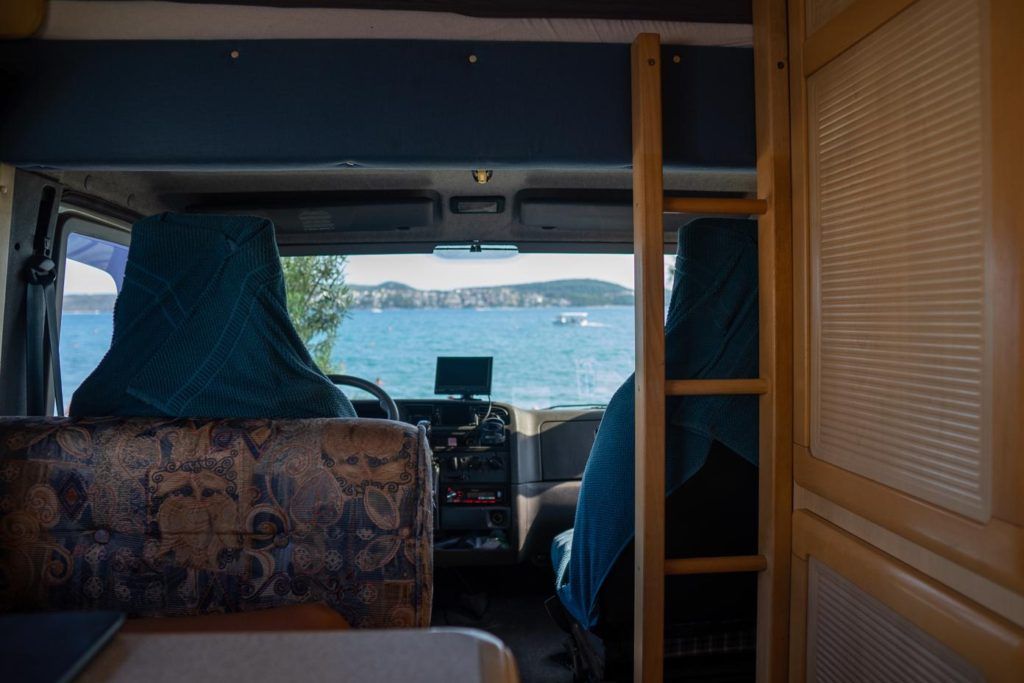
Paperwork that you’ll need to carry with you
Before you set out, you’ll want to make sure you have copies of all necessary paperwork. This includes
- Campervan or caravan and car insurance paperwork. Make sure you have the original, some countries won’t accept copies or photos from your phone.
- A rental contract or purchase contract proving your right to the vehicle
- Your travel or health insurance information
- your original birth certificates and marriage certificate. These are not so easy to get on the fly if you need them
- your drivers licence
- Your pets health check certificates and proof of rabies vaccination. You’ll need this even if you’re from a country that doesn’t have rabies. If you enter a rabies risk zone your pet won’t be allowed back into the rabies free area without one.
- Details of anything you’ve booked in advance including campervan parks, tours, tourist sites or public transport.
Van life – What’s it really like?
We absolutely love the freedom and sense of adventure that comes from living life in a camper. The idea that you can pick up and go anywhere. That you can see something new and different. We’ve been able to see some incredible places and have wonderful experiences. Not to mention adopting our dogs from Croatia. We wouldn’t have been able to do that if we didn’t have our own home on wheels.
The challenges of van life
That being said it’s not always sunshine and rainbows. There are challenges to van life as much as there are to any other lifestyle. Adjustments need to be made to how you life. The smaller the camper, the more adjustments are required to make van life enjoyable.
It involves some downsizing
You need to get used to public toilets, the occasional cold shower and cooking with minimal equipment. Packing everything away every time you move can be a bit annoying but you do get in a good rhythm with it. Forgetting to lock a cupboard door is fun when stuff flies out while you’re driving. Generally, if you’re a minimalist or can get buy without ‘all the stuff’ then you’ll have no problem.
I love our life in our little home and I have absolutely no problem what so every with living in a smaller space. I have everything that I need and the space doesn’t bother me at all.
It can be tiring constantly moving
We sometimes struggle between moving and staying still. If you find a really good camping place it’s really easy to settle down for a while as opposed to keeping moving.
When things go wrong there’s no escape, your camper is your home AND vehicle
There are times when things go wrong with the camper. Like the time our wheel bent, yes, our wheel bent. We were about to leave Romania and head back to the Netherlands. We decided to make a push for it but the vibration got worse and worse. The first night we stopped in Hungary for the first night, then in Germany, and then made it home, but oh wow did we have headaches.
You may have the odd sleepless night
And, as much as we like to think they are, motorhomes and campervans are not sound proof boxes. There’ll be the occasional night you don’t sleep because the people next to you have music playing, or are sitting at their table outside your window talking. We were at a campground just outside Bucharest. Which, unbeknownst to us, was right beside a large venue which was holding a wedding reception. Hardcore dance music blared inside the campervan, it was so loud we couldn’t have heard our own music if we’d put it on and turned it right up. Everyone was in the same boat because we were packing up our campervan at 6 am, and so were all the others. No one had had a wink of sleep.
The other side to this is thunderstorms. Heavy rain or wind on a campervan or caravan roof can sound thunderous. Sleeping during really big storms can be difficult. And if a huge storm hits during the night and your awning is out, watch out!
How do relationships survive van life?
To be honest I think that depends on what the relationship is like to begin with. Ben and I have travelled together for years so we’re used to always being together. We don’t really have any issues with being together all the time. That being said, sometimes it’s nice to have some privacy, or a moment to yourself.
Our main arguments these days are about the toilet. After all this time he still argues every time I tell him that the toilet needs to be emptied. E-V-E-R-Y time. You know in relationships you have your roles. There are certain things one person always does and certain things the other always does. He always does the toilet, its just the way it is. The thing is, I always have to tell him it’s full. He never just notices and empties it. I notice it and I tell him. This is what we argue about!
Other ways van life can affect relationships
As a little side note, it’s important that you factor your relationship in when you choose a campervan. With our first campervan we had to sleep in separate beds because the beds were too narrow for us. We also had a fairly small table that had two bench style seats opposite each other. The seats were not wide enough for us to sit comfortably side by side. I mean, we could, but we were bumping elbows a lot.
Not only were we sleeping separately, we were always sitting opposite each other. It didn’t really do a lot for the romance.
When we bought our caravan we knew we wanted one with a big bed, as well as a larger seating area where we could sit side by side.
In conclusion
So, that’s a lot, right? While there’s a lot to know and certainly to do before you leave on you camper van or motorhome road trip around Europe, once you set off, it gets a lot easier. After a week or so the day to day basics become routine and you’ll find your rhythm.
I want to hear from you
Don’t be shy. If you’ve made it to the end of this guide on campervanning Europe then you’re ready to go. Drop a comment and tell me your plans. Also feel free to ask any questions you might have. You never know, maybe they’ll help someone else too.
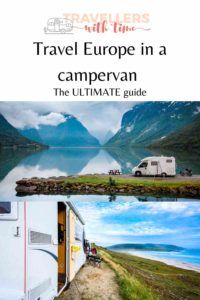
About Christine
Christine and her partner Ben have spent the last few years traveling through New Zealand and then Europe by campervan. They travel with their dog Alisa, who they adopted in Croatia. You'll find them exploring old cities, hiking through National Parks, and taking unforgettable road trips.
2 thoughts on “How to travel Europe in a campervan, motorhome or caravan”
Hi! Can you park for free-boondock with caravan? Im from Croatia and i see motorhomes park in city centar regulary im in Istria,but never see caravan park like that.I see them only in supermarkets parking or shoping centar parking. But can leave caravan somewhere in Forest and leave with you car is this possible? Sorrry abou my English! Thank you!
Hi Daniela, I’ve never tried it in a caravan so I can’t be sure, but I think there would be some problems with boondocking in a caravan. Some of the issues I can think of are – Safety and security – You’d need to make sure that the caravan can’t be stolen – you could use a Hitch lock, which prevents someone else from connecting their car to your caravan and towing it, there are also wheel locks, and then things like extra door locks and alarm systems – Leveling a caravan is more difficult, so if you want to camp in the forest you’d need to find a place that has flatter ground from the start – It will be more difficult to move a caravan if you need to make a quick exit – either for safety reasons or because you’ve been asked to move. – You probably don’t have a waste water tank so you’d need to find a way to collect your waste water so that it doesn’t flow out into the environment.
Those are just a few reasons I can think of. Maybe some of our readers have more experience with boondocking in a caravan?
Leave a comment Cancel reply

Travelling through Europe in a motorhome: How to plan your European itinerary
When you make purchases through links on this website we may earn a commission. Read more .

Travelling through Europe in a campervan or motorhome
Travelling through Europe in a campervan or motorhome is one of the best ways to see these beautiful countries at your own pace. So if you’ve been reading my detailed motorhome articles, you should now be well and truly prepared, and “in the know” to get yourself ready for your big trip.
Many people have commented on the level of detail in these articles, and the amount of planning that goes into it. To be honest, we’ve done it so many times now, that it hardly seems like onerous planning. We intuitively do this stuff. However, if you are a first-time hirer, owner or driver of a motorhome, it pays to be well prepared.
If you are new to the world of campervan hire, however, the details and the pre-planning will be what could ultimately save you from a disaster. The last thing you need is an administrative issue threatening your plans.
Once we have done all the upfront planning, it’s freedom from then on. From the moment we pick up the campervan, there are no real plans or rules. There are just places to go, experiences to be had, and plenty of food and beverages to be consumed.
There is nothing quite like the freedom of slow travel, travelling wherever you like and staying for as long as you like. If we love a place, we’ll stay longer. If we don’t, then we simply move on.
You can read all about our campervan and motorhome road trips in Europe here >> Motorhome and Campervan travel

Planning a motorhome travel itinerary for Europe
The level of detail that goes into planning an itinerary will depend largely on the amount of time you have to spend. It’s kind of done in reverse. If you are only spending a short amount of time in the campervan or motorhome, then the level of planning is usually considerably more, so as to ensure that you git in as much as you can, or want. I will stress though, that on paper, Europe can be ever so enticing.
It’s easy to get over-excited and want to cram as many of those beautiful cities and areas in as possible. If you are new to motorhome life, or to driving a motorhome, it might be best to limit the amount of driving. Big days, day after day, of driving can be incredibly exhausting and opens up room for driving error, irritability and a general loss of enjoyment.
It is also worthy to note that distances and times given by apps such a Google Maps should only ever be used as a guide. Notwithstanding traffic issues or events such as protests that are a constant part of the French landscape, driving always takes longer in a motorhome.
If you are driving on the autoroutes, your trip time will be considerably less, but possibly more expensive where tolls are involved. If you are on the country roads, the time taken to travel is much longer than the app will ever tell you.
The mapping apps don’t take into account the size of the vehicle you may be driving or the level of confidence or experience of the driver. All of these factors will impact the speed at which you can drive. Add in some mountain ranges and steep roads where you are driving close to the edge and I can guarantee you that you won’t be driving fast.
Tip : Always add additional time to your driving route to ensure you don’t become stressed or frustrated at the driving time.
Europe is an amazing place to road trip in a motorhome and it’s quite simply why we keep coming back over and over again. The (current) ease of crossing many of the country’s borders without any regulation makes it easy to pop in and out of countries. Do note however that you need to be aware of where and how you might cross a border and ensure that you do have the appropriate paperwork if necessary.
Some travellers have very clear ideas about where they want to start and end their trip, others less so. As a starting point consider the following when thinking about your itinerary. If you own your own motorhome and time isn’t an issue then planning will be more flexible. However, if you are hiring, these kinds of questions should be considered before you actually hire, and pay for, a motorhome.
We’ve put together a comprehensive guide of all the questions you should think about and answer before hiring a motorhome in Europe. Read our beginners guide to campervan hire. It will help you with the above questions, and so much more. CLICK HERE
Should you hire or buy a motorhome?
There’s so many things to think about here. If you are not sure about what choice to make, head on over to our very detailed article on how to buy a motorhome in France for non-EU residents. Whilst this is the best guide for those who want to buy a motorhome, we go into all the specifics about when hiring vs buying (or vice versa) is a better choice.
In summary, key things to consider are:
- Duration of your trip – Generally if your trip is over three months, buying would be the best option (from an economic sense)
- Time of year – the cost of hiring for longer periods of time during peak season might outweigh the purchase cost of a small campervan
- Ability to sell at the end of your trip
- Financial capability to outlay a large amount of cash at once
- Where to store if not using it continuously
- Vehicle preference – including configuration, size and transmission
- Maintenance (if you own) vs maintenance-free (if you hire)
Tip : If you are a non-EU resident and considering buying, please read our article noted above. It will save you money in the long run, save you being ripped off and buying a vehicle that you can’t own legally, and allow you to sell it to recoup your money. Avoid buyback schemes too.
If you are thinking about hiring, we recommend France Motorhome Hire, who operate from a depot south of Paris. It’s an easy location to get to (via fast train from Paris) and makes driving your motorhome for the first time much easier given it is not in a big city. We’ve been using FMH since 2012 and now start and finish all of our trips here, whether we stay in France, or go further afield into Europe. It takes all the pressure of trying to muddle through all the hiring companies. We trust these people and the level of service and vehicles they provide. See our promo code in this article for €50 off your hire!
Before you make a hiring decision, read our Ultimate guide to hiring a motorhome in Europe . It’s a comprehensive guide to all the questions you need to think about prior to making the decision to hire.
If you aren’t sure what size motorhome you might need, take a peek inside a campervan to get a feel for the amenities and space.
There are even more tips here in our article on how to ensure you have a successful campervan pickup. Most people don’t even think about what might be required until they arrive at the depot. Depending on who you hire with and the time of year, this process can be chaotic and the end result will be you getting rushed out the door without having checked over the vehicle properly. That’s why it is important you have a checklist in your head before you arrive.
If you are hiring, check out France Motorhome Hire. We use and recommend them. Use our promo code BEERCROI when doing your online quote at France Motorhome Hire for €50 off your next hire!
Our 2017 Europe motorhome itinerary
To give you a sense of just how much European countryside we covered on our trip in 2017, I’ve put together a map. It might seem like a lot of driving but it was not onerous for us. As you can see from the detail further down, we averaged about 100km a day, over a 42 day period.
Remember, I’m an Australian and 100km for us to drive in a day is not considered much at all. This is probably why so many other Aussies love driving campervans! The distance you go depends completely on your personal plans.
As I noted above, thinking about the distances you want to drive is important. Where possible, if you can have at least one additional driver, it will make a huge difference to the trip for all involved. We usually start off our overall planning with an old fashioned atlas . It allows us to get a good view of the countries on one page, and then some of the more detailed information as well.
From there we will get onto the laptop and start using Google Maps. We also use My Maps (Google) so we can plot more locations and save planned itineraries, which you can’t do on the general Google maps. We will research other destination blogs for possible ideas and also check out the various travel guides that we have at hand.

How much does it cost to drive a motorhome around Europe?
I get many questions about the cost of running campervans and motorhomes, particularly as it relates to fuel and camping costs.
Of course, everything is relative, and everyone has a very personal opinion on what represents good value and what is expensive/inexpensive. Ultimately, it all comes down to personal circumstance and where you see the value.
What I constantly remind myself of is that I can’t expect everything to be the same as it is at home, and that goes for cost. Things are going to cost more or less wherever I travel. Often my own currency is not strong against the Euro or the US dollar either. What I use as a comparison however is the cost of alternatives.
So, in this case, the alternatives are the cost of hotels and other accommodation, car hire or other transport. I have mentioned before that a campervan is our accommodation, our transport and often our restaurant, so I am sure to benchmark accordingly.
One of our motorhome trips, lasting 42 days, cost us on average, €133 per day. This is inclusive of our campervan hire, fuel and camp fees. I have not included food as this is highly variable, and we eat and drink very well when we are travelling. On average, we would spend a lot more on food, wine and beer than a lot of people would.
We are not budget travellers so I can honestly say that we have certainly paid this amount (and more) for a hotel room before, and then had to add everything else on top.
For those that love the detail (and I know there are plenty of you), the following provides you with a snapshot of where we drove showing how easy it is to get to some really great places without having to drive all day.
Campervan running costs
There’s no getting around this cost. If you hire a campervan and drive it, you will eventually need to refuel. But, surprisingly, it never feels as though this is a constant activity. Given the size of the vehicles, they are very efficient.
It is important to note that the price of fuel can differ broadly from country to country, area to area. Fuel costs have also seen increases of about 20% on average over the past four years. Fuel is also more expensive on motorways than in the small towns. Always only use these as a guide as prices are always subject to change.
If you are hiring a motorhome, this is the main running cost. Other costs such as replacement gas or toilet chemicals are usually relatively small in comparison.
Cost of campgrounds for motorhomes
The type of camping spot dictates how much you pay.
We generally travel in the campervan during off-peak times, meaning we worry less about where we are going to spend the night and whether we need to book a campground. Note, there are always exceptions to this depending on the location/country you are in.
Many people will only ever camp in official campgrounds for reasons of safety, convenience, camaraderie and services. Others will use a blend of these campgrounds and also use a selection of aires and programs like France Passion.
Then, there are travellers like us who are comfortable in our motorhome and in our skills and abilities to choose appropriate (and safe) locations that are not at campgrounds. We prefer to stay for the night in quieter spots, not crawling with people and not parked right next to someone. We also love to give money directly to local people, hence why we use and prefer France Passion.
Read about the French Aires de Service program. Or, read about France Passion and some of the best France Passion locations we’ve stayed at in France .
As an example, back in 2015, we stayed at a blend of campgrounds, Aires and France Passion locations. Whilst we prefer not to be in campgrounds, there were plenty of occasions in Italy, Switzerland and Luxembourg where we had no choice but to do so. The detail below shows our costs. It was a rough 50/50 split between paid sites and non-paid, bringing the average down significantly. In 2017 and 2018 however, our trips saw us avoid campgrounds completely, so our camping costs were zero.
Note: We are responsible motorhomers who only ever park our vehicle where it is safe and appropriate to do so. Networks and associations that bring us services like France Passion, Aires, Home Camper and Bienvenue a la Ferme help keep costs down when staying in a motorhome in Europe. They also highlight locations you might not otherwise see and allow for wonderful interaction with locals.

We are passionate about travelling through Europe in a campervan. We’ve had so many wonderful experiences over the years that keeps us coming back for more. We always save money by travelling this way, but more importantly for us, it offers us enormous freedom to do whatever we choose. I know it’s not for everyone, but if I could convince those who have been thinking about it to give it a go, my job would be done!
READ MORE OF OUR MOTORHOME ARTICLES HERE
For all the latest tips, advice and hints for how to make the most of a motorhome trip through Europe, we've got you covered. Plus we've got some amazing short and long-term itineraries, videos and amazing photos to make you want to go on a road trip right now.
Read all of our motorhome guides here .

Rent a motorhome in Europe with Anywhere Campers
We use and recommend Anywhere Campers for motorhome hire in Europe. They are also one-way hire specialists.

Driving a motorhome in France safely. Our best tips to keep you safe.
All the best general tips for driving in France from expereinced motorhome travellers.

What is really inside a campervan: A look inside a hired motorhome
If you've never hired a motorhome before it can be hard to know what they look like inside. Read our guide which shows you the room your can expect, storage space, bedroom configuration, size of bathroom and more.
Looking to do a road trip in the USA? Here’s some more detail on how to get yourself ready for your big trip .
Join our community of motorhome owners and hirers on Facebook. Click on the imager below or search for Motorhoming in France.

Please note: Beer and Croissants provides accurate information at the time of writing but makes no representations or provides any warranty or coverage of liability for bookings made with France Motorhome Hire or any other hiring company.
In the spirit of full disclosure, any bookings made through Beer and Croissants with France Motorhome Hire will generate a small commission, but will not cost you any more. In fact, by working with this company, we hope to bring you special offers from time to time. We do, however, always pay the full hire of any of our FMH hires ourselves.
About The Author
Kerri McConnel
A former corporate business executive, Kerri is the content creator for Beer and Croissants, a trusted source of detailed guides on motorhome travel, road trip itineraries, and destinations.
Together with Stirling, they are motorhome experts, having independently road-tripped their way across much of Europe, Australia, and New Zealand since 1995. Back home in Australia, they own their own motorhome and can always be found on a regional road trips, taking in towns that often no one has heard of.
They are responsible travellers; long, slow trips in motorhomes, spending time in small regional communities where the tourists usually don't wander, and spending money in their small economies. And where possible, they travel in shoulder and off seasons, so they don't add to the tourist rush.
As an Honorary Barge Lady for Barge Lady Cruises and a regular on European Waterways vessels, Kerri is also an expert on luxury barge travel in Europe, having completed five barge cruises in France and Scotland.
Kerri is a Digital Travel Publisher Member and former board member and treasurer of the Australian Society of Travel Writers (2020-2023).
Everything written and produced on this site is our own work. there's no AI and if we've written about it, you can trust we've been there, done that!
Read more about Kerri here
59 thoughts on “Travelling through Europe in a motorhome: How to plan your European itinerary”
Hi Craig, the great thing about motorhome trips, especially in Western Europe is that you can do great ones in a few weeks as well. We quite often just take them out for a few weeks. Perhaps you could start a bit smaller and only do one or two countries to get the hang of it first? If you go to the social media sharing buttons at the bottom of the article you will see a print button, but just mind that it’s a long article and will print images etc. If you are thinking about hiring in France, don’t forget to check out France Motorhome Hire. If you use BEERCROI as the promotional code, you will get €50 off your hire.
Great read, looking at getting a van early next year. Would love to do something as big as this but not sure it would be possible due to work commitments. How do I get a printable version of this article
Hi Kamran, there’s plenty of info on the camper we used and who we rented it from here https://www.beerandcroissants.com/category/plan-with-me/motorhomes/ . We use France Motorhome Hire and highly recommend them. You hire these out of Sens (about an hour and a bit by train south of Paris. There is an enquiry form to get more details and a quote directly from them here https://www.beerandcroissants.com/campervan-hire-in-europe/
Where did you rent the camper. We are planning to go in August and looking for tips on where to find good deals on renting campervan
This is such an adventure! I love the freedom of it. I’ve never traveled like this but I was jealous of the people in Iceland that were doing the trip in a camper van. They had so much more freedom than us!
Yeah 100km for us is nothing at all. We can quite easily do 1200km a day without it bothering us but I know not everyone is like us. We can still match it with the best of them on an autobahn, although we tend to sit at the 110km. They are big rigs and don’t pull up fast.
That would have been a little squeezy. Thanks Adonis.
I did something very similar in the summer of 2013. I didn’t hire a camper van but a Renault sedan. It’s not as comfortable to sleep in but I’m used to camping in my car. If I was to do over again I’d do it with a camper van and with a partner like you guys did. Very informative post. Thanks :)
100km isn’t too much. I drive that much everyday to/from work but I’d rather do this for sure! But for a campervan it must be difficult. What’s the top speed on that? I mean how fast do you guys go?
I believe it’s one of the best ways to travel Gina.
I hope you get there someday.
it certainly is Vyjay
Thanks Natasha- and I know you will get there too :)
wow tht’s some travel goal Izzy ! thanks so much for your inspiration too :)
yes this type of travel is for at least a month I think !
Holy cow, this is pretty sweeeeet! I would love to do this eventually… one day… currently have zero vacation hours and for this to work I would want to stay for a month or so… One day…
Those excel sheets are everything! Seriously, you need to package this up and present this to a tour agency. They will love the transparency and the tried-and-tested nature of this program. These are travel goals right here! Maybe one day instead of a wedding i’d get a wedding-honeymoon 2-in-1 campervanning around Europe and getting married off in a rando church :P Thanks for the inspiration!
This is incredibly helpful and so detailed. I would love to do this someday — not sure I’d be able to do 43 days quite yet at around $150 US but maybe once I get my business going more :) You’re right about hotels quickly adding up! Looks like a really unique experience. Thanks for sharing!
That sounds an epic trip. Europe’s countryside is so lush and beautiful. Camping where the mind wants to seems like a great experience.
Wow. That is a great way to travel. Full of adventure on the road and i love that. I wish to do that as well even once in a lifetime.
I never thought to take a camper van through Europe! It must give you so much freedom to go wherever you please since you’re taking your bed with you. It was super helpful to see the chart of what you spent and how you spent it!
Wow! This is really insightful. I guess I thought taking a campervan would make the budget more manageable, but this is actually quite pricy!
It’s my dream to become a grey nomad and retire with a camper van. I can’t wait. Really useful info thank you!
yeah we think it is !
Oh wow– this is awesome! You guys got to see so much! I thought the costs would be higher. It ends up being pretty reasonable.
Yes and if you didn’t need electricity or wifi, we would have stayed in even more of them :) thanks Toni !
Thanks Kayla. Always here if you need it x
Thanks so much Simon
Thanks Thuymi
yeah it sure is Monika
This is definitely one of my dreams: to travel in Europe in a campervan! It must be good to travel with your home :)
Wow this is great I am so envious of you! Great breakdown of your costs too! Bookmarked!
This looks amazing! It would be such a dream to travel Europe with a camper van. You covered so much countries in such a good time! Wonderful!
What I love about this article is the details. I love how you give a breakdown of the fees. It is another alternative and I guess the choice is up to you. I definitely think I could give using a campervan a try as it has its benefits.
Oh my god, this seems like a great trip. So many places you have been to – I would love to do such a trip as well but am scared of driving a bigger car in some streets. This itinerary however looks ideal to me :)
Wow Kez, great post! You are so informative and efficient! I haven’t yet had the pleasure of experience any where in a caravan or van but boy is it a dream of mine! Will hit you up when the time comes :) Love and light beautiful lady xx
We love camping and caravanning so I’m loving the detail in this posts. To be honest I hadn’t considered doing it around Europe before, mostly because I have all those narrow lanes in my head but of course that isn’t everywhere. One thing that surprise me is the quantity of free camping you managed to achieve, almost half your trip which is a great cost saver.
I can understand that about the Germans. We noticed too that most of the fuel stations were on the borders of Luxembourg, which said to us that this is exactly what the other country people did – drive to Luxembourg for cheaper fuel.
Perfect thanks Bryanna. If you’ve done it before you are mostly there. Hopefully just a few Euro specific things to watch out for.
how cool was she!!! Love it.
Thanks Heather, love the analogy…..100km gets us nowhere here so we do get used to it. Hope you get to try it out some day.
Thank you so much, I really appreciate that. If you, or anyone you know ever needs help, please don’t hesitate to ask.
Thanks Laura….
Great, thanks Fiona.
Thanks Anda, that’s why I decided to publish this as I know people don’t always have visibility on costs.
Thanks Danik.It certainly was great.
What a great detailed and informative breakdown of your trip! We RV in the US and want to do it in Europe in the future and this is a perfect post to help us understand how it would work in Europe.
I like your posts about campervanning ! Especially as they are really specific. If we will set up for this kind of trip we will definitely ask you for an advice! And 42 days is a big number :) Hope you Guys enjoyed every single day of it!
Great post. :) lots of interesting facts on here as well. Never done europe in a campervan and for that long as well. Amazing trip!
Wow, this is so much more affordable than moving from hotel to hotel and eating at restaurants. Thanks for sharing the costs with us. I’d love to drive all around Europe. There is so much to see and do there. I’d never get bored.
I’d love to do this! What a fab adventure!
Very comprehensive. I’ll pass this on to my brother who lives in Scotland and has just bought his own campervan with a view to travelling..
What an amazing itinerary! My father-in-law is thinking of buying a campervan so he can do an epic road trip through Europe – I’ll make sure to show this to him :-)
Such an extensive accounting of the trip! I wish I could also do likewise here in Asia. Anyway, I appreciate sharing this article as it gave me an idea of how to organize my future travel and vacation annotations and expenses :)
Wow, what a comprehensive post, and such an epic trip (even if you are an Aussie and eat 100s kms for breakfast!). We’d love to try campervaning next year and Europe seems a great place to start, thanks for the tips!
Very detailed and informative. Breaking down the costs certainly helps for anyone wanting to travel with a specific budget in mind. Thanks!
Oh, wow, this looks like an epic road trip! I love driving, but I feel a campervan would be a bit hard for me to handle (too big). Would still love to try it at some point in the future. You’ve been to some amazing places. Also, I see things have hardly changed over the past 5-6 years and Luxembourg is still in the lead with the cheapest gas :D I have friends in Germany who’d rather drive 40 kilometers to Luxembourg to refuel there than buy the gas locally.
That is definitely a different way to see Europe and have your hotel traveling with you, sounds like a fun way to experience different areas.
What a cool way to see Europe! My grandmother actually did something similar when she was in her 70s! Hired a campervan with her son and travelled around Europe!
Leave a Comment
Your email address will not be published. Required fields are marked *
16 Best Campervan Journeys In Europe
Renting a campervan and hitting the road is one of the best ways to explore Europe on a budget. These routes leave lasting memories.
Read update
Best Routes For A European Campervan Journey
- Campervan journeys in Europe offer a low-cost way to explore scenic destinations and beautiful landscapes, away from the city streets.
- Routes like Slovenia & Croatia, Transfăgărășan Highway in Romania, and the Wild Atlantic Way in Ireland are worth adding to your European itinerary.
- From the French Riviera to the North Coast 500 in Scotland, there are plenty of options for campervan road trips that provide flexibility, affordability, and unforgettable experiences.
While the “Vanlife” craze is taking off in North America, campervan journeys around Europe have been a popular way to see the continent at a low cost for years. Spend 1-2 weeks or a couple of months roaming Europe in a cozy campervan while taking in the beautiful landscapes travelers often miss when sticking to the city streets.
UPDATE: 2023/08/22 12:29 EST BY NICHOLAS MAYAMBA
Europe is home to numerous scenic destinations worth checking out, and campervan journeys present an exciting option to explore them without breaking the bank. In this updated list, find out more road trips worth adding to an adventurer's to-do list during a European itinerary.
Related: Road Trip Enthusiasts: Here Are The 10 Countries With The Best Road Trips In The World
16 Slovenia & Croatia
Slovenia is overlooked by many travelers in Europe in favor of nearby Croatia or Austria. However, Slovenia and Croatia together are the perfect route for a European road trip with beautiful historic cities and beaches on the Adriatic Sea. For a 10-14 campervan journey, pick up a vehicle in Dubrovnik and spend three days on the coast , appreciating the scenery and exploring filming locations for Game of Thrones . Then, drive north to Split and Zadar before continuing to the scenic Plitvice Lakes National Park.
Cross the border into Slovenia and explore the Julian Alps and scenic Lake Bled. Rent a canoe in the early morning and paddle out to the center of the lake for the best views. Finally, explore the capital of Slovenia, Ljubljana.
15 Transfăgărășan Highway, Romania
Romania doesn’t get much attention from international travelers, but it should. This vast Eastern European country has a beautiful capital city but also expansive, lush green landscapes and highways that are easy to travel to. Rent a campervan for pickup at the Bucharest airport before embarking on the epic Transfăgărășan highway drive. This road takes travelers through the Carpathian Mountains. The road is nearly 100 km long and is one of the most iconic in Europe, twisting and turning through the rolling terrain of Romania. Plan to make stops at Balea Lake, Capra Tunnel, Vidraru Dam, and Poenari Citadel along the way.
14 Wild Atlantic Way, Ireland
The Wild Atlantic Way is Ireland’s most famous driving route and can easily be driven in 5 days to 1 week, starting from Dublin. However, for travelers who want to take their time and spend more than one night at a destination along the way, turning this into a 2-week adventure is a more relaxing choice. The route is 2500 km from County Donegal to County Cork and takes travelers along the best sights of Ireland’s West Coast, including the Cliffs of Moher, Kylemore Abbey, and Slea Head.
Related: 10 Places You Should See In Ireland During A 7-Day Trip
13 The Fairy Tale Road, Germany
Germany is one of the largest countries by area in Western Europe, so exploring it in a campervan is a great way to see the natural beauty usually missed when sticking to cities like Berlin or Munich. Rent a campervan and drive the Fairy Tale Road in Germany, which starts in Frankfurt. The quiet road runs through the countryside and charming German towns like Steinau, Marburg, Kassel, Gottingen, Hamelin, and Bremen. From Bremen, travelers can easily continue onto Hamburg and venture north to Denmark.
12 The Ring Road, Iceland
Iceland’s Ring Road is the best drive in the country, taking travelers around the island’s perimeter in just 7-10 days. While it’s possible to do this trip in a rental car and book Airbnbs or hotels, choosing to do the journey in a campervan offers the flexibility to stop at any campsite and stay immersed in the otherworldly landscapes of the Land of Fire and Ice. Top sights to see along the way include Skogafoss, Jökulsárlón Lagoon , and Diamond Beach.
Related: The 10 Most Beautiful Stops Along Iceland's Ring Road
11 The French Riviera, France
Get away from the busyness of Paris and embark on a romantic campervan journey through the South of France on the French Riviera. In just one week, travelers can easily stop at beautiful cities like Nice, Eze, Cannes, Cote d'Azur, Monaco, and Antibes while spending the night in their campervans to save money on accommodation. This is a fantastic way to see the South of France on a budget and with the freedom to wake up in a new spot every morning.
10 The North Coast 500, Scotland
The North Coast 500 is named for the 516-mile route around the Northern coast of Scotland. It’s possible to drive this route in just five days but lengthening the trip permits travelers to make more stops and appreciate the scenery in various parts of the country. Some top spots to pause along the way are Falls of Shin, Coldbackie Sands, Smoo Cave, and Handa Island. The route is so popular it has attracted more than 29,000 visitors since its inception, but there’s still plenty of room for everyone on the road.
9 Algarve Coast, Portugal
Travelers looking for a budget-friendly campervan trip in Western Europe can skip Italy’s coast and head to the South of Portugal instead. Most international travelers will arrive in Lisbon, where it’s easy to pick up a rental van from the airport. Then, drive south on the E1 to Lagos, which takes between 2.5 and 3 hours . From Lagos, travelers can choose to spend time camping and swimming along the Algarve Coast for a few days before continuing the drive to Faro. If time permits, cross into Spain and spend a few days in Seville before returning to the campervan and heading home.
8 La Route Des Grande Alpes, Switzerland
This route takes travelers through the French Alps between the French Riviera and Lake Geneva. Visitors will drive their campervan through the Alps from North to South or South to North, depending on which side they start the route from. The road has 16 passes, some of the highest in the Alps and spans 684 km from Thonon-Les-Bains to Menton. The journey takes at least 2-3 days by car, but travelers can spend much longer exploring the historical monuments and Alpine villages along the way.
7 Whitehaven To Silloth, The Lake District, United Kingdom
There are plenty of scenic road trip routes through The Lake District in the UK, but travelers who want to drive their campervan along the coast will love the journey from Whitehaven to Silloth. The drive is 26.7 miles long and follows the A595 and A596 along the Solway Coast from Whitehaven. Travelers will pass through the quaint town of Maryport and can stop off at the picturesque Allonby's Beach before arriving in Silloth.
6 Finland Up To Nordkapp
One of Europe's most scenic caravan journeys is arguably traveling up through Finland to Norway. This route takes one through the boreal forests of Northern Europe and even through Santa's North Pole Village in Lapland . Along the way, visitors see sprawling forests where the roadsides are populated by reindeer as one penetrates north into Lapland. Mountains don't appear until one approaches the northern border with Norway, and from there, one can keep on going to Nordkapp - the northernmost point of Europe .
5 Travel Down The Coast Of Norway
Norway is arguably the most stunning road trip possible in Europe. Travel down Norway's pristine and stunning coastline and explore many of the world's most picturesque and dramatic fjords. Keep in mind that Norway is expensive, but it is also legal to camp almost wherever one likes (if one would like to save on camping fees). Be sure to detour to see Troll's Tongue while traveling in Norway .
4 Andorra & The Pyrenees
The Pyrenees are one of the great mountain ranges of Europe, and they form the border between Spain and France. One of the fun things to discover while exploring the Pyrenees is the tiny alpine country of Andorra (it is basically a country that is a collection of ski resorts). The Pyrenees are not as dramatic as the Alps of Switzerland, France, Italy, and Austria, but they are stunning and should be on anyone's bucket list.
Turkey is sometimes counted in Europe, and it is a top destination to go for a campervan journey. The country is just bursting with attractions to see and explore (think about endless Roman ruins, ancient Greek ruins, Pamukkale, crusader castles, some of the Mediterranean's best beaches, and some of the oldest manmade settlements known. Turkey has a great highway network and is a very rewarding place to explore.
2 Switzerland & Northern Italy
Starting in the mountains and ending at sea, this lovely European campervan journey takes travelers through exciting destinations. From Switzerland's biggest city, Zurich, drive through the country to the towns of Lucerne and later Bern before crossing to the Italian city of Turin. Admire the impressive architecture in the city and sample its eclectic cuisine, then continue with the journey to the fashion capital of Milan . Find something cute to buy and drive off to Bologna's historic town before wrapping up the trip in Venice, where so many attractions await .
Related: 10 London To Rome Road Trip Stops That Reveal Ancient History And Breathtaking Scenery
1 Italy Roundtrip
Italy's is among Europe's top destinations, and going around the country explores campers to beautiful cities with a rich history, unique culture, and exotic destinations. Starting in Milan, this exciting road trip will last 2 to 3 weeks, depending on how much there is to see and do along the way. Drive the van to Genoa, check out the beautiful harbors, then head to Pisa through Cinque Terre. Continue towards Florence to admire its majestic art pieces, continuing to Siena and Rome. Afterward, he's to Naples and cap off the Italian itinerary on the Almafi Coast.
Join our Adventure: Get all my insider tips for motorhoming & road trips
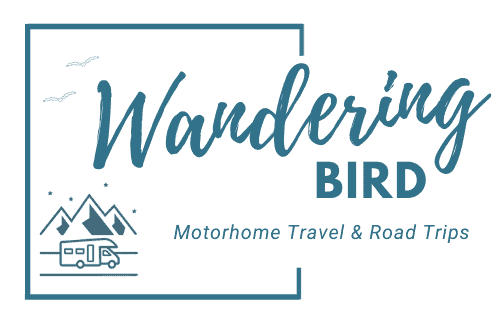
How to plan epic Motorhome trips- 10 essential tips to make it easier
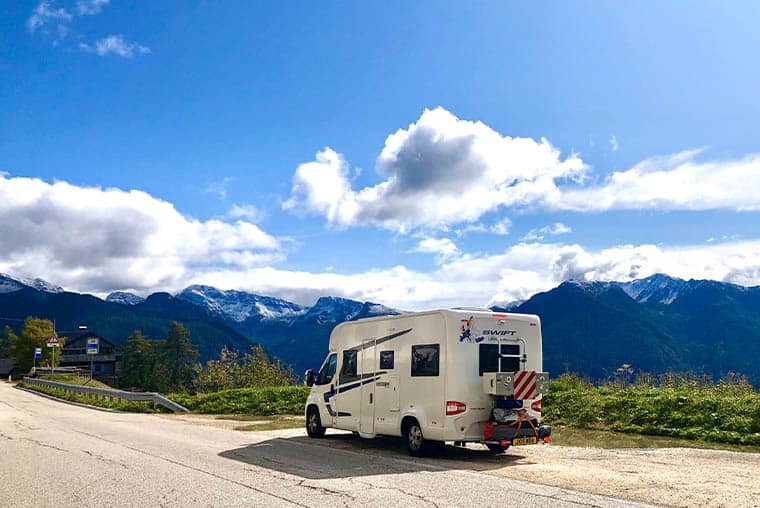
Planning a Campervan or Motorhome trip? Confused about route planning, how to choose where to go and all the other things you need to know/ organise? Here’s everything you need to know to make your motorhome trips a success.
Travelling in a motorhome, RV or camper is one of my absolutely favourite things- and I LOVE planning our next motorhome trips. There are so many incredible places to go, see and explore.
JUMP AHEAD TO...
Planning Motorhome Trips
I know everyone reading this has different requirements. Some of you can only travel in school holidays (man, I do NOT miss those days).
Many of you have only a few weeks holiday from work and want to make the most of them. And some of you have as much time as you like- but can’t decide where to go or how to plan a route.
Yet, despite these obvious differences in situation, there are MANY similarities on the steps you need to take when you plan a road trip with a motorhome or camper. And that’s what we’re going to walk through today.
Before we start, be sure to grab your FREE printable road trip planner – you’ll find it incredibly useful so you can start organising your trip and keeping everything in one easy-to-find place. Also, if you don’t already have your own vehicle, why not book a camper, RV or motorhome rental for the trip.
Make planning your next road trip EASY (& fun!)
When you’re planning a road trip, keeping track & organising all your ideas is often the hardest part. Fix that TODAY with our printable pdf road trip planner. Grab yours FREE now
This form subscribes you to our mailing list. We share tips, itineraries, stupid mistakes and guides like this for road trippers and motorhomers.
We never spam (yuck) and you can unsubscribe at any time.
*We work hard to make this the best motorhome travel blog and road trip website possible, full of helpful content for you. The website is supported by our readers, so if you buy through links on this site we may earn a commission- at no extra cost to you. All opinions remain our own .
If you find this post useful, you can also treat us to a coffee – we promise to enjoy it while creating more useful content like this- we might even indulge in a biscuit (or two!)
Planning a Motorhome Road Trip – where to start?
Believe it or not, I get asked this question a LOT. You are not alone in your overwhelm. Just the basic question of WHERE to go can be too complicated for many, especially if they’ve never planned a motorhome trip before.
NOTE: For the ease of writing, I’m going to pretend you’re planning a trip from the UK to Europe, BUT these steps can easily be applied to any and ALL motorhome trips, anywhere in the world.
Getting Started
So, here’s a little guide/ checklist to help you figure out where to start your planning:
- Are you happy to go to a foreign country? Driving on the wrong side, speaking a foreign language, eating foreign foods? Not everyone is, and that’s ok. Better to figure that out now, rather than later!
- How long do you have for your trip?
- How long do you want to drive for?
- Are you happy to drive on motorways/ toll roads (ie- you can go further, faster) or do you only want to drive on smaller/ free roads (or a mix of the two?!)
- Do you want to see/ do something specific?
- What sort of weather do you hope to enjoy? (Warmer or colder)
Once you’ve answered those questions, you should have a rough idea on the radius of the area you can reach in your time frame- assuming you have a timeframe of course!
Example destination route planning in Europe
As an example, let’s pretend we’re planning a trip to Germany for next April. We have two weeks (Easter School Holidays) and we are happy to drive on motorways/ toll roads and then take back roads to explore the area once we arrive.
We want to see castles, ruins and some waterfalls. And we most definitely want to go to a foreign country.
With these parameters, most of Western Europe is open to us. One other criteria (criterion??) we have is we want to go somewhere we haven’t been to before
So we assess our options, have a good look on Instagram and Pinterest and decide to take go to Germany, with specific focus on the Black Forest and Bavaria in Southern Germany.
It could easily have been Holland, France, Austria, Northern Germany, Belgium or Denmark… all of those fit within our parameters. In the end, sometimes you just have to pick one!
If you ARE planning a motorhome trip to Europe, don’t forget to grab your FREE Europe travel checklist – it contains EVERYTHING you need to bring!
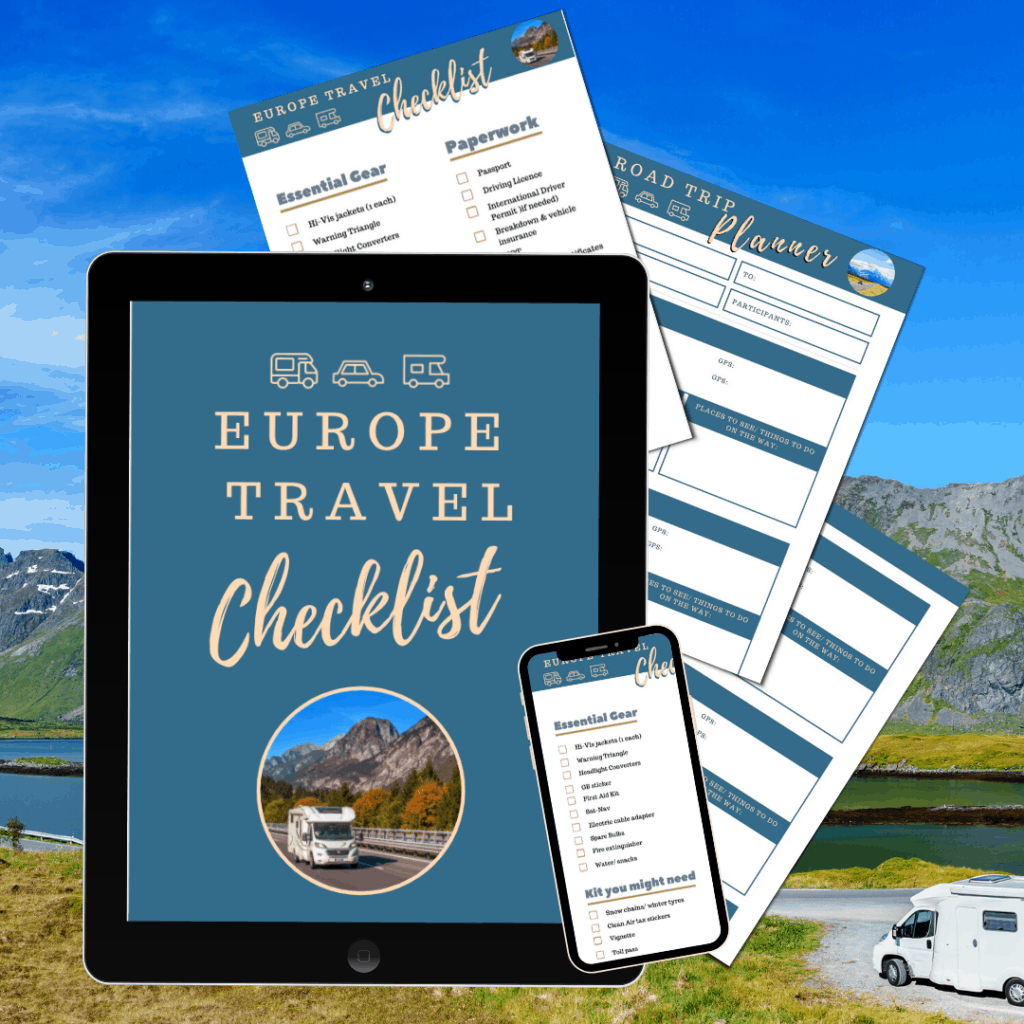
Want to head to Europe with your motorhome?
Grab your FREE (printable) checklist and discover 25 things you NEED to take with you when you travel in Europe. Make your life easier today.
Motorhome Trips planning- narrow the options
Ok, so you’ve picked a rough area or country. Awesome! Now let’s narrow it down a little for you.
Once we’ve decided on a rough area/ destination, we start researching specific things to do/ see once we’re there. Literally, I Google “Best things to do in_______ (in this case, Southern Germany)”
Invariably 100 million results will be returned, but everything you need will normally be on the first page of Google. Something like a Tripadvisor ‘Best of’ Board or a Tourist Information website is perfect to get you started.
The other place to look is Pinterest. Seriously, it’s BRILLIANT for finding itineraries, ideas and cool places to see. (You can follow us on Pinterest here)
This will give you a list of places you want to visit on your trip. They could be famous, like these incredible historical sites in France , beautiful (like the Dolomites- totally worth a trip to the Dolomites with a motorhome , FYI) or you might want to find the warmest places in Spain to visit in the winter.
Whatever your goal, keep that in mind whilst you’re looking for places to visit. There’s no specific number of places you need to find- just educate yourself on the best things to do in that region so you don’t miss out AND so we can start planning a route very soon.
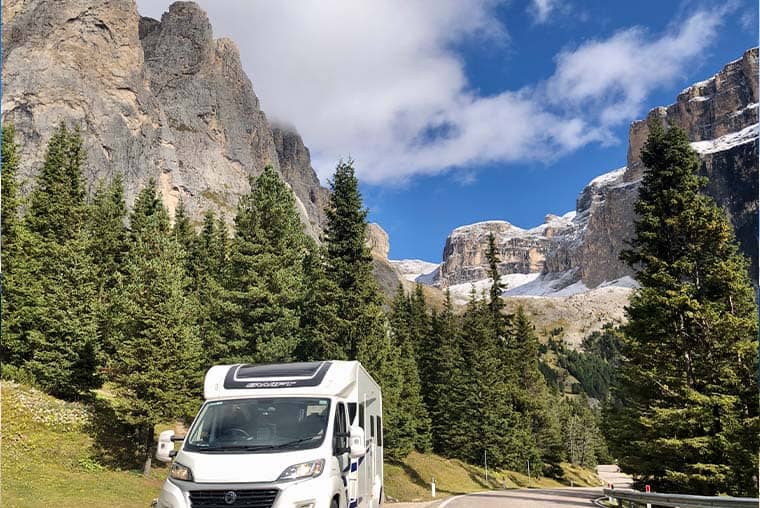
WHY are you visiting?
Another thing to bear in mind is WHY are you visiting Europe (or wherever you’re heading)?
In our example, we’re going to Germany to explore and see some history, some incredible German castles and ride our motorbikes in the Black Forest
For you, it might simply be as easy as “I’ve never been there before” or “I like the wine/ food/ weather and I want to go back.”
There doesn’t need to be a serious and impressive reason to go anywhere. After all, it (hopefully!) isn’t going to be your last motorhome or campervan trip to Europe – there’ll be many more to enjoy!
WHEN are you planning your campervan or motorhome trip?
Being forced to travel during school holidays is tough and far from ideal. If you can avoid that time period, I highly recommend it.
However, I know many people are stuck within these constraints, so think about your WHEN and consider that you may need to book things in advance and have a little less flexibility than you might outside high season.
HOW do you want your Motorhome holiday to go?
If you are going in the heart of August, it will be useful for you to decide at this stage how you want your motorhome holiday to go.
- Do you want to stay at a campsite which has loads of activities for the kids to do, or a beach/ playground/ kids club?
- Would you prefer an adult only campsite with a restaurant so you can relax and don’t need to cook?
- Do you want to wild camp in your motorhome and stay at a new place each night?
- Do you want to use aires/ free overnight motorhome parking spots in Europe and stay 2/3 nights in a place?
- Would you like to explore some incredible cities in Europe , or would you rather spend time in nature??
Motorhome campsites in Europe
The reason this is important to decide early is the motorhome campsites in Europe get busy! They can get booked up VERY early- especially the ones with a beach/ pool/ kids club/ surf school.
If you want to stay on one of these campsites for a week/ two-week European break, you need to pick your dates, pick your place and book it asap.
Then figure out how long it will take you to drive your motorhome to the campsite from the ferry/ tunnel, and book that up too. (Not sure if the ferry or tunnel is best? See below)
That’s you (nearly!) done. Lucky you- and that is one of the reasons campsites are SO popular- they’re easy, everything is laid on for you and it doesn’t take much planning as long as it’s done well in advance.
However, if you don’t have kids or want to use aires and move locations regularly, things can still be looking a bit more complicated.
Route Planning for a Europe motorhome or camper trip
Hopefully, your Google search will have created a list of places you want to visit. I like to plot these into a Google Map , either on a laptop or my phone.
I add all the Places of Interest in as I find them, and then I start to see a rough route and itinerary developing.
I like Google Maps because it’s easy and it keeps all my ideas organised so I can find them again, but you can just as easily use a paper map, a printout or even a list on the back of an envelope! Whatever works for you.
Using Google Maps for route planning a European motorhome trip
I use the map to show me how far apart places are. From there, I can estimate how long it might take us to drive between them. I try to give us no more than 4/5 hours driving per day (unless we agree to do some long driving days to get to an area, such as when we visited Norway with our motorhome .)
One thing I will say is that although we try to make a plan, we are pretty flexible in our timeline too.
Which is good, as we often end up in places that we didn’t mean to, like the time we set off to Norfolk and ended up road tripping in Cornwall …
We allow ourselves time for chilling in the van on a rainy day, or finding a place that we didn’t even know existed and going to visit that- such as Tre Cime di Laveredo in the Dolomites (totally worth a visit if you’re passing- it’s one of the most spectacular places we have ever stayed with our motorhome.)
At least every 3/4 days we have a ‘no driving the motorhome’ day. Mr WB currently does all the driving (his choice!) and it’s not fair for him to constantly be at the wheel, so we make sure to allocate a day or two for relaxing (or catching up on his work!)
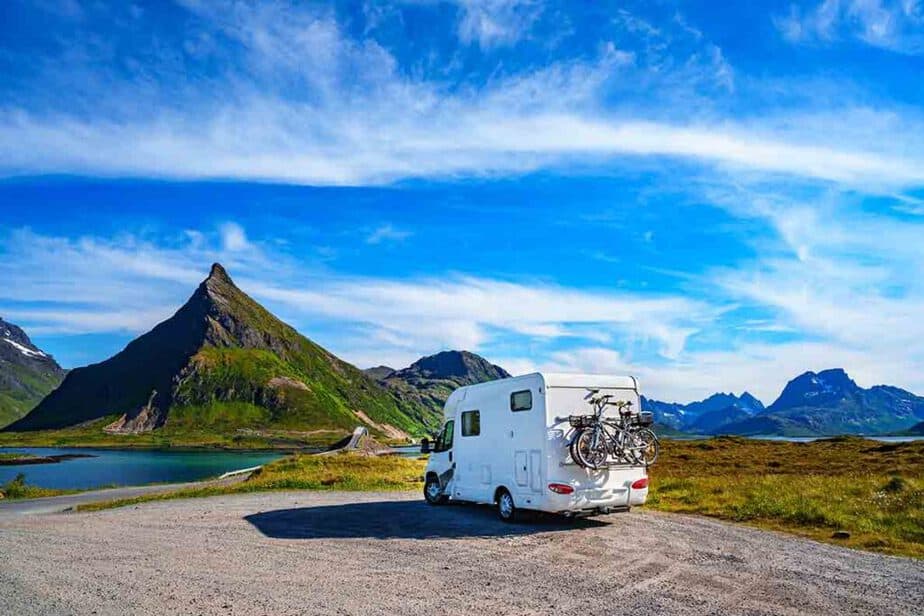
Taking a Motorhome to Europe from the UK
If you live in the UK or on some other island, you need to find a way off it!
From the UK, there are two main options to take your Motorhome to Europe from the UK- a ferry and the Channel Tunnel. Both have their pros and cons but it mainly comes down to cost, time and pets . (Of course, if you’re flying somewhere to hire a motorhome in Europe, then, of course, you’ll fly!)
- If you don’t want to leave your pet in the motorhome for hours on their own as you undertake a ferry crossing, then the tunnel is the only option (unless you get some of the ferries where pets are allowed in the cabins, like the Portsmouth to Caen ferry.)
- If you don’t want to drive all the way to the Tunnel from wherever you live, the ferry is the only option.
- The tunnel is often MUCH cheaper- especially in summer. You can also use Tesco club card vouchers to reduce the cost further, or buy a frequent traveller pack which is well worth the money if you’re going to do 3/4 trips a year.
Read our indepth guide into Ferry vs EuroTunnel here
Things to bring
Before you leave, make sure you have the appropriate kit.
You need your :
- motorhome essential gear
- European required kit for motorhomes/ campers/ cars
- Appropriate paperwork and motorhome insurance
- If you’re hiring a motorhome or camper , paperwork for that too
Europe motorhome trip planning- more things to consider
So, you’re doing well!
You’ve decided on where, when, for how long and how you’re going to get there.
The weather/ time of year
The next thing we look at is the weather. For example, it would be pointless doing the trip we want to do in Germany in the middle of winter when they experience high snowfall- many roads are closed in the mountains during winter. You also need additional kit, like snowchains and winter tyres.
One of our favourite times to explore popular places is Autumn- there are so many areas where Autumn in Europe is magical – changing leaves, stunning scenery, fewer people but still warm. Europe in October is definitely one of the best times to explore, but then we’ve also enjoyed some wonderful trips in winter- especially when trying to find the Northern Lights or visiting some of the biggest Christmas markets in Europe .
Also, make sure you check the weather a week or so before you go and bring appropriate clothing. I always recommend taking something warm even if you’re going on a sunny holiday- or when you end up climbing Mont Blanc, you’ll freeze just like we did!
Finding overnight places as you go
There are a couple of options for overnight stops for motorhomes in Europe. We usually use aires or wild camping spots. Some countries in Europe make wild camping very difficult (like Italy and Slovenia), while others are much more tolerant.
A lot also depends on WHERE you are within the country- the French Riviera is one of the worst places for wild camping in France , but there are plenty of campsites in the area, whereas taking a motorhome to the French Alps is wild camping heaven.
French Aires
Couple of things to remember about aires:
- Europeans LOVE motorhoming. Europe WANTS you to bring your motorhome there. Europe ENCOURAGES motorhome parking and motorhome travel.
- They make room for them and often provide dedicated parking areas that ARE NEAR PLACES you actually want to visit. I’m serious. No more being stuck miles away from the nearest town and made to feel utterly unwanted wherever you go (I love the UK, but seriously, we can do SOOOOO much better in this regard)
- These places are called aires and most don’t cost more than a few pounds a night.
- We prefer to use aires like this, as they often have services like fresh water and waste disposal, but are cheaper than proper campsites.
- They are first-come, first-served, but we’ve hardly ever had a problem finding a space for the night- even in the middle of August at the Italian lakes.
Read more about how we find aires in France and Europe and how to use them best.
Motorhome trips- final tips to make life easier
CONGRATULATIONS!
I hope you’re feeling much happier with yourself and your upcoming camper or motorhome trips.
A couple of final things to remember to check/ sort out before you go:
- Is your vehicle road legal? Do you have insurance, MOT and your driving licence/ paperwork? Remember to take all the essential paperwork with you, along with your passports.
- Do you have the safety equipment required by each country you will be DRIVING THROUGH , not just the final one you are visiting?
- Make sure you have gas and possibly an adaptor for your gas bottle if it’s refillable. (Do NOT forget this like we did!! If you need to, this is how to find motorhome gas in Europe )
- Do you have a freshwater hose? Most places expect you to provide your own. It’s one of the essential motorhome accessories every van should have!
- If you have a drone, check the rules and requirements for each country you might fly in. Ideally, print them out so you can remember.
- Pack some easy food to prepare for the first night. I’m a big believer in eating local food. It’s one of my favourite parts about travelling. BUT, when you’ve been driving all day and all you’ve seen are service stations, something easy, hearty and familiar is a great comfort as you settle in to your epic motorhome adventure. Here are some great easy road trip meal ideas.
- Whilst we’re on the subject of food, be prepared for kids who don’t share your excitement for the local cuisine. Most kids, including ours, like something familiar. Our daughter used to be a particularly fussy eater and, unfortunately, she would rather not eat than eat something she doesn’t really like. So, in order to make life easier and less stressful, I tried to make sure there was food on board I know that she will eat. Little things like this make a motorhome road trip far more fun – for all the family!
And that’s it. Nothing difficult but the first (second, third, seventh and eleventh) motorhome trip (to anywhere!) can take a lot of planning and you can easily feel out of your comfort zone.
Remember, it’s supposed to be fun . You’re supposed to look forward to it. If you find yourself dreading it, figure out ways to make things easier for yourself – or change the plan entirely.
Also, it’s normal to be nervous- even after all this time touring Europe in our motorhome , I’m often nervous as we set out, wondering where we’ll end up and what I’ve forgotten. That’s why this Europe motorhome trip checklist is so useful- it allows you to remember those silly things you’d otherwise have forgotten!
To make sure your roadtrip goes as well as possible, here is also a list of things NOT to do on your roadtrip .
How else can I help you today?
- Travelling to Europe- you NEED to bring these 15 things
- Show me the best Europe road trip ideas
- How do I pack a motorhome without rattles?
- Read these Europe road trip tips to make the most of your adventures

Kat never planned to buy a motorhome. She also never planned to quit her job as an air traffic controller, go touring around Europe in said motorhome, start one of the UK’s largest motorhome travel websites… or get a cocker spaniel.
Find out how she went from stuck in the rat race to being a digital nomad and inspiring thousands of people to have their own epic adventures here.
If you’d like to connect with Kat, send her an email or follow her adventures on social media.
Sharing is caring!
Similar Posts
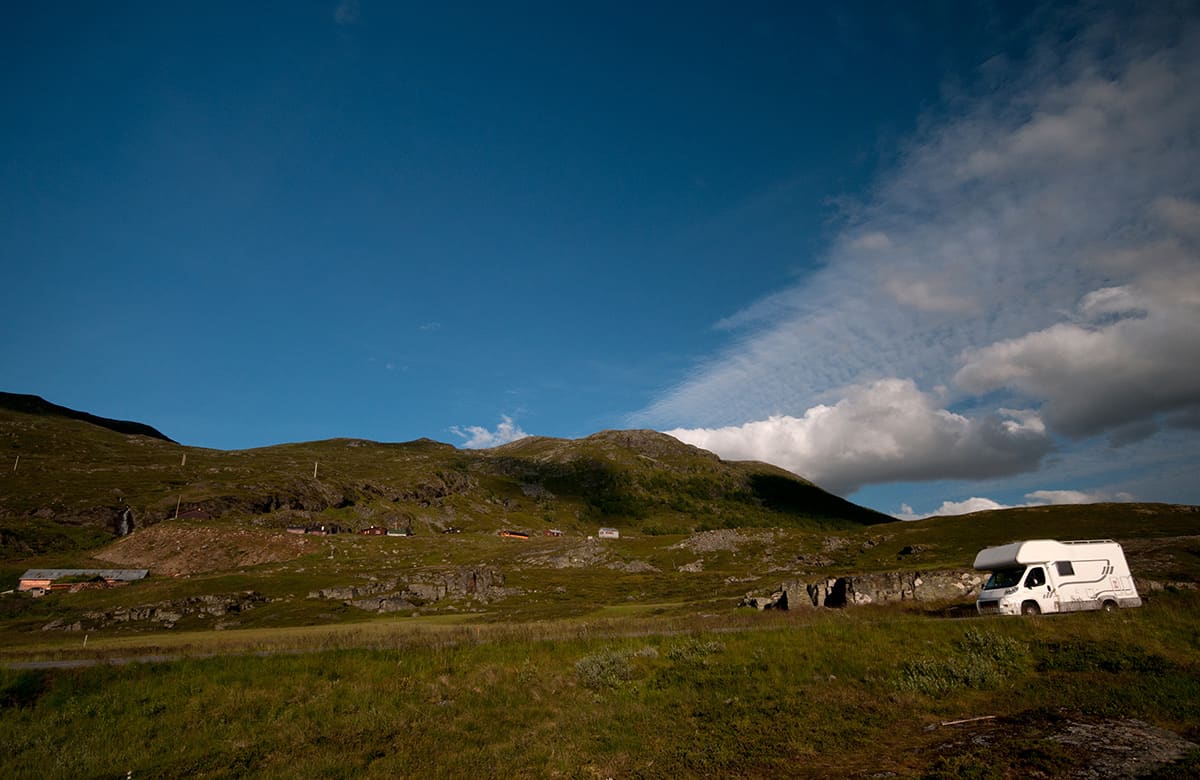
Motorhome Wild Camping in Scotland- Essential things you need to know
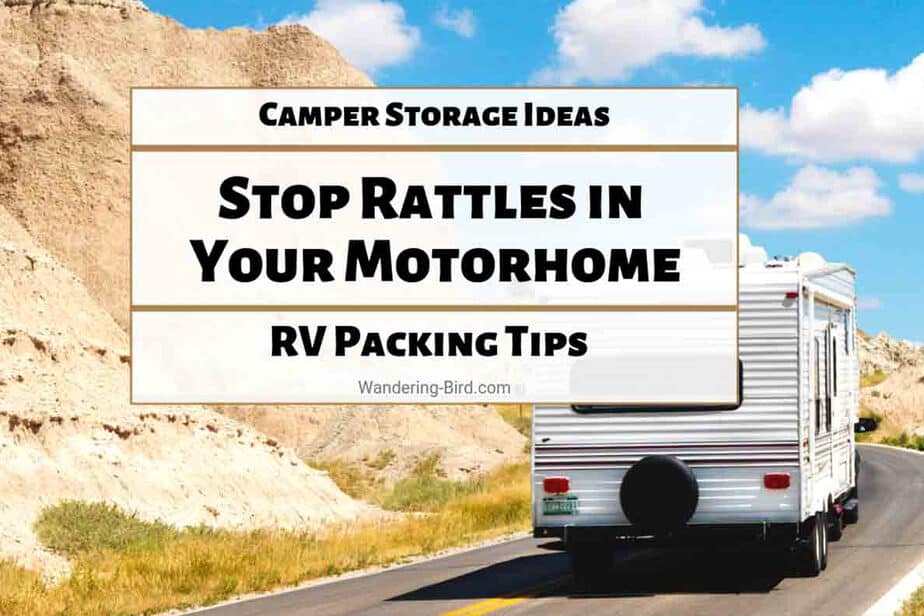
19 Easy Camper Storage Ideas to Stop Rattles in your Motorhome
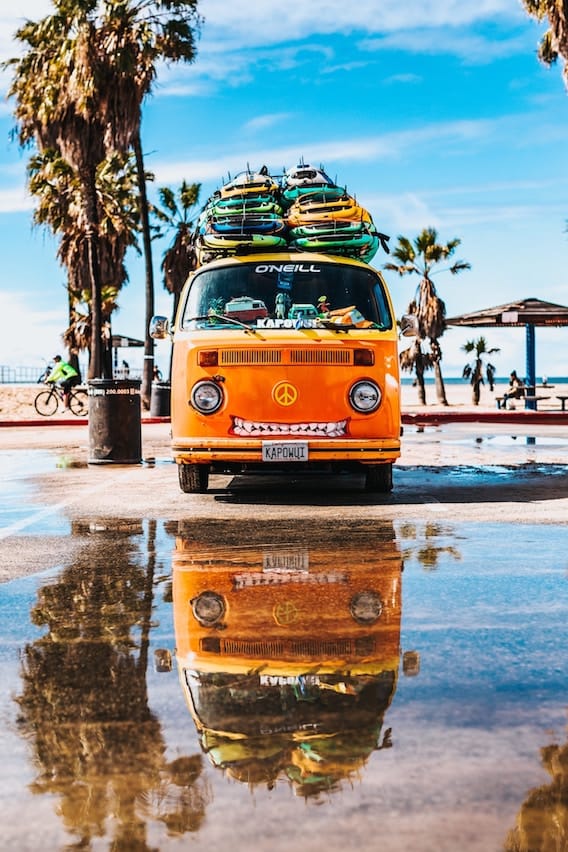
Motorhome & Campervan Essential Kit- Clothes Packing list
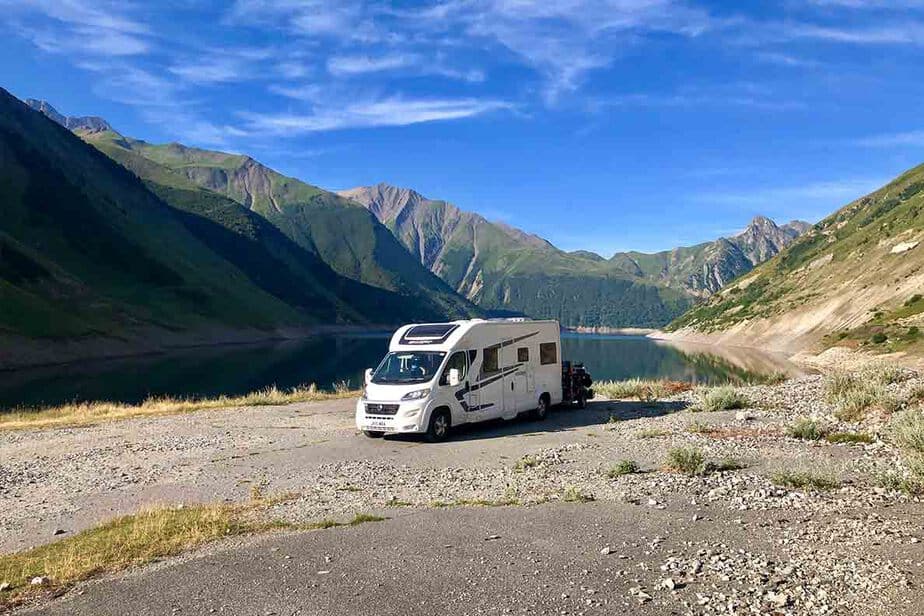
Motorhome insurance- 5 essential things to check before you buy
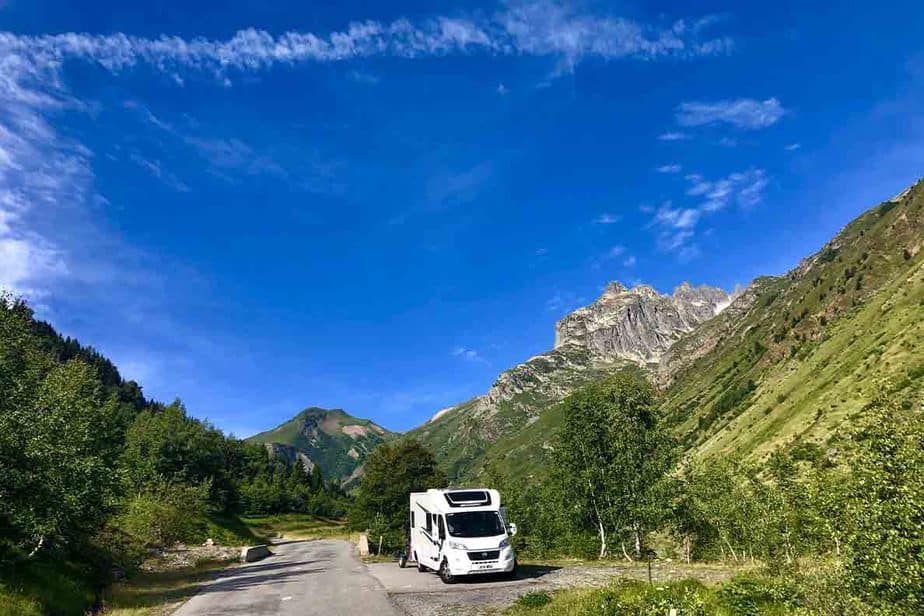
Wild Camping for motorhomes- essential kit for off-grid camping
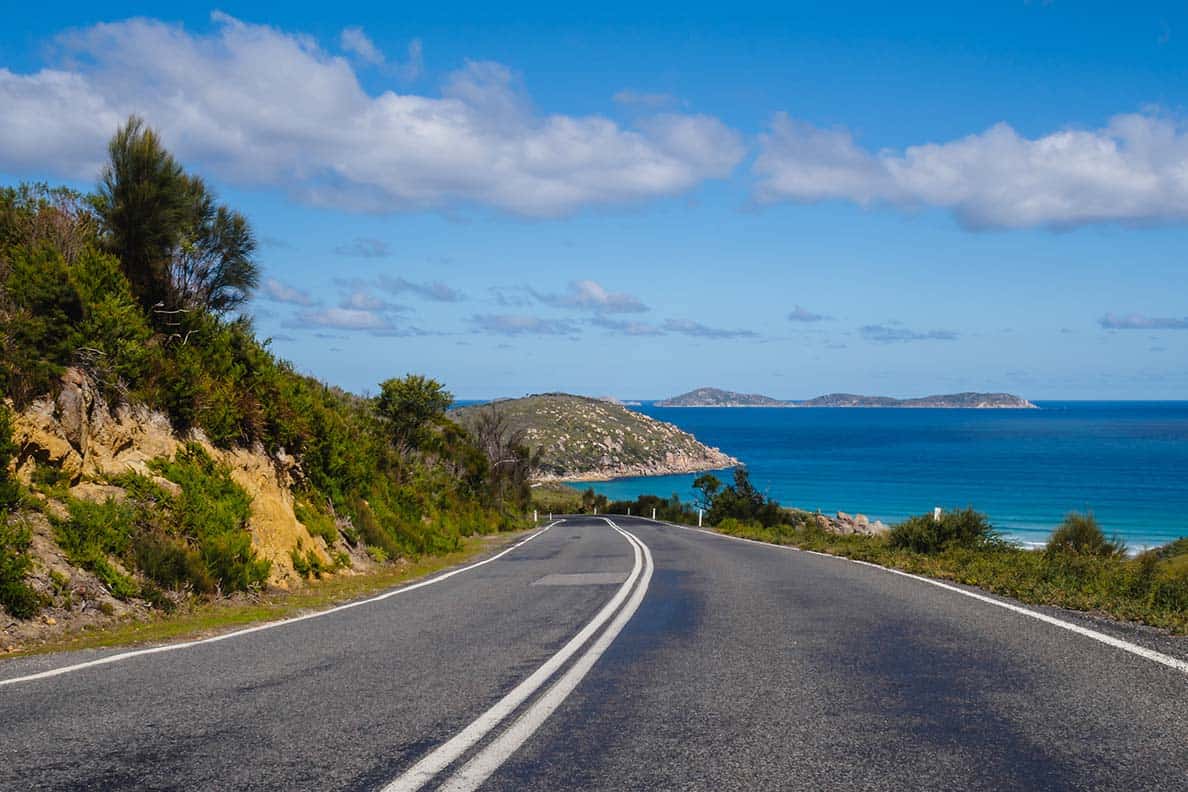
Left hand drive vs Right hand drive – which is better for Europe road trips?
Leave a reply cancel reply.
Your email address will not be published. Required fields are marked *
Save my name, email, and website in this browser for the next time I comment.
5 Routes for Taking Your Campervan Around Europe

1. La Route des Grande Alpes
This route, officially known as D902, is definitely a must-visit! Stretching from Lake Geneva to the Mediterranean Sea, this road trip would grant you the chance to compare and contrast lifestyles in the mountains and the Mediterranean. This route is one you cannot miss if you’re taking an RV around Europe. The best part? The route has several mountain passes, and sections of the road have been used in the Tour de France. These spectacular views don’t have to be viewed from behind the windows of your car- you can ride a bike along these beautiful paths and get lost in the beauty of mountainous nature.
Distance: 617 km
Start: Thonon-les-Bains
End: Menton
Day 1: Start in Thonon-les-Bains, and drive to Annecy through Morzine. Although Annecy isn’t along La Route de Grande Alpes, it’s fairy-tale-like aesthetic is something that cannot be missed.
Driving time: 41 minutes
Day 2: Head from Annecy to Bourg Saint Maurice, a small town nestled in the heart of the French Alps. Although notorious for skiing in the winter, this quaint town offers numerous outdoor summer activities, such as watersports. It is also a popular destination for hiking and biking.
Driving time: 1 hour 32 minutes
Day 3: From Bourg Saint Maurice, drive down to Lanslebourg. Here, you can take a hike along Mont Cenis, where you can follow a pass that leads you to Italy! This pass was built by Napoleon in the early 19th century, so be sure to appreciate the history of the path as you enjoy the scenic views!
Driving time: 2 hours 25 minutes
Day 4: Leave Lanslebourg and drive down to Briançon, the highest city in France at an altitude of 1,326 meters! This commune is rich with history, and boasts of 18th-century structures and UNESCO world heritage sites around the city, something you should not miss!
Driving time: 1 hour 30 minutes
Day 5: Head to Barcelonnette from Briançon. Although small, Barcelonnette is a town present for centuries, dating back to the Roman Empire, so be sure to ask locals about the history of the town! Barcelonnette also lies on the Ubaye Valley, making it an area rich with plants and animal species.
Driving time: 1 hour 37 minutes
Day 6: Arrive at Valberg, a small resort village. Although the village is rather small, there is much to see and do within the area. If you’re in the mood to continue to explore nature and hike through breathtaking trails, pay a visit to Mercantour National Park. For those of you that wish to explore historical sites, Entrvaux is a medieval village that’s an 11-minute drive away. You’ll get to see some remaining structures and appreciate the historical architecture.
Driving time: 1 hour 46 minutes
Day 7: Drive down to Saint-Martin-Vésubie from Valberg. This small commune is a hotspot for nature lovers, hosting a range of parks. If you wish to learn more about the native wolves that roam around the surrounding forest, Parc Alpha is the perfect place to expand your knowledge about them. Ski resorts are a short 10-minute drive away from this small town, providing you with the chance to engage in numerous outdoor summer activities, such as ziplining.
Driving time: 1 hour 25 minutes
Day 8: End your road trip in Menton, a town known for its beautiful beaches and gardens with rare plants. Here, you can appreciate the Mediterranean culture France offers, and enjoy the stunning architecture the city has to have, whether it may be the pastel-coloured houses or the 17th-century church.
Driving time: 1 hour 55 minutes
- Roads in France are often subjected to tolls, so be sure to read about French motorway tolls and keep some change with you at all times!
- The roads are often closed during winter, meaning they only open from June-October, after all the snow has melted completely. However, roads may close earlier if snowfall comes earlier than expected.
- Although you may be travelling during the summer, it can get chilly in the mountains so be sure to pack an extra sweater!
2. Road trip along the coast of Portugal:
If you’ve ever wished to drive along the Atlantic coast and have the chance to visit a beach whenever you please, then this is the route for you! Portugal is home to some of the most beautiful beaches in the world, providing visitors with views they will not see anywhere else. This scenic drive along the Atlantic coast is arguably one of the most scenic motorhome routes in Europe. Aside from the fantastic nature, Portugal offers a unique culture influenced by empires that previously occupied the land. So pack your bags and get ready to explore Portugal’s wonders and eat (lots of) pastel de nata!
Distance: 818 km (roughly)
Start: Viana do Castelo
End: Tavira
Day 1: Start in Viana do Castelo, and drive down to Porto. This coastal city is known for its production of port wine, so be sure to try some while you stop by! The city is rich with iconic sites, including palaces, churches, and aesthetic streets. Be sure to stop by Praia do Senhor da Pedra, a beautiful beach known for its small chapel built on a rock outcrop!
Driving time: 1 hour 10 minutes
Day 2: Leave Porto and drive down to Leiria, a city that is rich in history. Stroll through the Leiria Castle, which had 3 distinct building phases, and as a result, boasts of architecture from different time periods! Batalha Monastery is also a UNESCO World Heritage Site, so be sure to stop by for a visit. Once again, sandy beaches are just a short scenic drive away from the city.
Driving time: 1 hour 48 minutes
Day 3: Drive your motorhome to the iconic Lisbon, home to pastel-coloured buildings and historic monuments. There’s so much to see and do in Lisbon, so you can always walk to iconic sites and explore the cobbled streets on your way there. Stunning coastal views can be found along the city, so be sure to grab some warm pastel de nata from a local bakery and sit down to enjoy the views!
Driving time: 1 hour 35 minutes
Day 4: Head down to Lagos. Because this is a longer drive, it would be recommended that you stop by Parque Natural do Sudoeste Alentejano e Costa Vicentina on your way to admire the nature Portugal has to offer. Soon after, you’ll arrive at Lagos, a town known for its Atlantic beaches and historic watchtowers. Be sure to enjoy the beaches around the area and soak up the rays of sun!
Driving time: 2 hours 50 minutes
Day 5: Drive east towards Tavira, a small on the Algarve coast. Aside from its famous beaches, Tavira is also home to many historic sites. Not unlike other parts of Portugal, it is home to churches, watchtowers and castles dating back as early as the 12th century. Be sure not to miss out on seafood and local meals while you’re there!
Driving time: 1 hour 10 minutes
- Portugal is relatively warm, with its average low temperatures reaching 15°C in January-March. This means you can take a road trip anytime throughout the year, and avoid the peak seasons in summer
- Sometimes having a motor vehicle isn’t necessary. Since public transportation is cheap, you can always leave your motorhome parked at a campsite and take a bus or train to the city centre!
3. Road trip across Netherlands and Belgium:
The best part about taking your campervan around Europe is travelling between countries with ease. In fact, travelling across countries makes you truly appreciate the uniqueness of each country’s culture, because although countries may be located similarly geographically, their lifestyles may vary drastically. The Netherlands and Belgium are prime examples of that. Both countries lie next to each other, and Flemish and Dutch are more similar than you would expect. However, you’ll encounter completely different experiences when visiting either country. And what better way to experience this than by taking this stunning motorhome route in Europe?
Distance: 331 km
Start: Amsterdam
End: Bruges
Day 1: Kick off your road trip by driving from Amsterdam to the Hague. Aside from being the political heart of the country, The Hague boasts of historic monuments and art museums. If you haven’t visited enough museums in Amsterdam, then be sure to visit those offered in The Hague! Should the weather permit, be sure to tour the canals of the city by boat! You can also pay a visit to Scheveningen Beach if you’re hoping to spend some time by the water and get a tan!
Driving time: 45 minutes
Day 2: Cross over to Belgium and stop by Brussels, the capital of Belgium, and another politically influential city. If you grew up reading the classic Asterix and Obelix, then don’t forget to visit the museum dedicated to the iconic comic series! The Grand Palace is yet another iconic monument you should not miss. Be sure to have a picnic at one of Brussels’ many parks and gardens!
Driving time: 1 hour 54 minutes
Day 3: Step away from the big city life and drive to the quaint city of Bruges. Here, you’ll find medieval buildings dotting the cobbled streets. This UNESCO World Heritage City has captured the heart of all its visitors with its historic charm. That being said, walking around the streets and appreciating the monuments you stumble upon is a great way to explore the city.
Driving time: 1 hour 17 minutes
- Amsterdam, The Hague, and Brussels are rather large cities. If you really hope to explore as much of each city as possible, extend your stay at each stop!
- Although it sounds too good to be true, there are campsites close to the city centre in most of the cities. However they are not the largest and may be booked out quickly, so be sure to make reservations well in advance.
- Do keep in mind that the streets (especially in the Netherlands) may be difficult to navigate with a larger vehicle, so it may be best to look for a campsite on the outskirts of the city and take a bus to the city centre.
4. Atlantic Roadway, Norway:
Although this road is only 8.3km long, it has been labelled as the world’s most beautiful drive. Known for its winding paths and scenic views, driving along this road is something you must check off your bucket list. However, because it’s only a short drive, you can always take your out for a few extra kilometres in Norway to truly enjoy the natural wonders Norway has to offer along one of the most underrated motorhome routes in Europe.
Distance: 305 km
Start: Åndalsnes
End: Oppdal
Day 1: Start in Åndalsnes, and drive down to Molde. This lakefront town has a lot to offer for visitors. At Varden- the Molde Panorama, you’ll have the opportunity to marvel at the sight of 222 mountain peaks. If you’re interested in visiting museums and experiencing the history of the town, be sure to visit the museums in the area!
Driving time: 1 hour 29 minutes
Day 2: Leave Molde and start driving along the Atlantic Road, where you’ll arrive in Kristiansund. There are designated places along the Atlantic Road where you can park your motorhome and take a moment to hike along designated paths and become one with the nature around you.
Day 3: Keep following Norweigan National Road 70 and head to Ålvundfjord. Along the way, you can admire the scenic views of the Norweigan Sea and elevated lands. If you’re in the mood to go for a pleasant hike, be sure to stop by Herresdalen for guided paths. Visit the old Tingvoll church on your way, which boasts of a beautiful interior.
Driving time: 1 hour 20 minutes
Day 4: Head down to Oppdal, a scenic mountain village rich with nature. Although the town is notorious for being a skiing destination, there is still much to be done during the summer. There is no shortage of hiking paths in the area. In fact, there are designated paths for hiking for those of you with children! If you want to admire nature without walking long distances, you can go on a safari and spot some native oxen or reindeer herds. Needless to say, there is no shortage of outdoor activities in this village.
Driving time: 1 hour 16 minutes
- Designate an extra day in case you encounter bad weather, even during the summer.
- Keep in mind that roads may be closed during the winter, from September until June.

5. Road trip across Germany on the autobahn:
Germany is a country rich with history and culture dating back thousands of years. If you’re taking an RV around Europe, make sure you don’t skip over this stunning country. Germany is famous for its autobahn, and what better route to follow? Contrary to popular belief, the autobahn is safer than you’d think- it’s even safer than freeways in the US! Police also have little tolerance for reckless drivers along the road, and are sure to make the roads safe for everyone. This means that you can travel along German safely at your own pace.
Distance: 936 km
Start: Cologne
End: Berlin
Day 1: Start your trip in Cologne and drive down to Düsseldorf, a city known for its art scene. The city is dotted with art museums, so be sure to pay a visit to a couple of them! If you’re in the mood for a beer or a cup of coffee, then be sure to visit Burgplatz.
Driving time: 43 minutes
Day 2: Leave Düsseldorf and head to Münster, a city famous for its 13th-century cathedral. Prinzipalmarkt is the historic marketplace of Münster shaped by historic buildings. Even if you aren’t a fan of shopping, it’s definitely worth a visit. If you’re interested in the Renaissance period, pass by the historic Burg Hülshoff, a castle that’s just 10 kilometres out of the city.
Driving time: 2 hours 5 minutes
Day 3: Head out to Bremen, the city that built Germany’s first coffee house in the 17th century. That being said, it’s only fair that you enjoy a cup of coffee at the Marktplatz, the central market square, where several monuments have been erected, one of which has been labelled as a UNESCO World Heritage Site under the same listing as the town hall.
Driving time: 2 hours 8 minutes
Day 4: Travel to Hamburg, a city crossed with hundreds of canals. The historic monument that dot the city are something you cannot miss, so feel free to wander along the streets and explore what the city has to offer. But be sure to pay a visit to Planten un Blomen, arguably one of Europe’s finest urban parks, which has a Botanical Garden from 1821 nestled at its centre.
Driving time: 1 hour 22 minutes
Day 5: After leaving Hamburg, start driving towards Rostock, a city situated around the Warnow River. During warmer seasons, be sure to stop by Warnemünde Beach and enjoy the sun! If you’re hoping to see some historic sites, then you’ve come to the right place! The defensive city walls were first built in the 1100s, and more than a kilometre of the wall remains intact. There are also historic cathedrals that dot the city, in addition to many museums that discuss the history of the area.
Day 6: Drive to Potsdam, a World Heritage city rich with palaces and royal parks dating back to the Prussian Kingdom. Sanssouci Palace is arguably one of the most iconic sites in the city, boasting beautiful architecture. In an unusual twist of events, you can view Dutch architecture in the Dutch quarter of the city, built in the mid-18th century.
Driving time: 2 hours 18 minutes
Day 7: Berlin, the capital of Germany, lies just a short drive away from Potsdam. Not unlike the rest of Germany, Berlin is rich in history. Be sure to pass by the Berlin wall memorial, and the German historical museum to better understand the stories of Germany’s past. The bathing lakes also provide visitors with a chance to step away from the bustle of city life and enjoy the sound of lapping waves.
Driving time: 44 minutes
- If you visit Germany in December, be sure to visit the Christmas markets each city has to offer!
- Traffic can build up on the autobahn at times, so be sure to head out early to avoid getting stuck on the road.

What are you waiting for? Pack your bags and hit the road for the trip of a lifetime. Europe is a continent consisting of established countries that have played important roles in the history of the globe, so don’t miss out on the chance to visit such places! Driving with a motorhome is the cherry on top of your road trip, so be sure to check out Goboony for campervan hire in Europe . In just a few clicks, you’ll be ready to go on a road trip of a lifetime!
Download the free e-book
All of these routes are covered in more detail in our free e-book, 5 Routes for Taking Your Campervan Around Europe , including a unique bonus route! Download this free e-book to discover our day-by-day itineraries and campsite recommendations.
Get this e-book

Campervans Available to Go Abroad

Rafaella Karadsheh
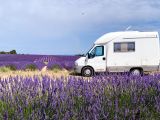
- Discover new destinations
- Learn about motorhome travel
- Receive exclusive discounts
Goboony uses cookies and similar technologies to provide our service to you. They also help make our communication to you easier and more personalised. With these cookies Goboony (and third parties), can track your internet behavior inside and outside Goboony. Some are necessary to help our website work properly and can't be switched off, and some are optional but support Goboony and your experience in other ways. Using cookies, we (and third parties) adapt our website, advertisements and communication to better suit your interests. You can accept the cookies by clicking on the button below. If you cookie-modal#acceptNecessaryCookies">refuse them we will only use functional and analytical cookies. Read our cookie policy .
- Sign up\Login

6x the most beautiful motorhome routes of Europe
Looking for inspiration for your next motorhome-trip? Take a look at one of these popular motorhome routes in Europe! From a motorhome-trip filled with castles and idyllic landscapes to the highlights of the French coastline, there's something for everyone. These are the six most beautiful motorhome routes in Europe!

The Romantic Road
Fan of castles, romantic landscapes and medieval towns? Then the Romantic Road is the perfect motorhome route for you! In 460 kilometers, you drive from Würzburg to Füssen. To admire everything, a duration of about 14 days is recommended, but of course you can take as long as you want. Along the way you will admire the medieval village of Rottenburg ob der Tauber. Time has stood still here, because cheerfully colored half-timbered houses are everywhere! Augsburg is also a must, it seems as if you've landed in Italy! You can admire the beautiful architecture from the Renaissance. The motorhome route through Germany is rounded off with a visit to the country's most famous castles: Neuschwanstein Castle and Hohe Sloss.
Here you will find a complete free itinerary of the Romantic Road .

- During the Romantic Road you come across beautiful castles!
North Coast 500
The North Coast 500 is the ideal motorhome route for those who want to discover the most beautiful spots of the Scottish countryside. And not only that, along the way you will also pass the most beautiful Scottish castles and various breweries where you can enjoy a local whiskey. The motorhome route is about 830 kilometers long - converted to just over 500 miles. A duration of 5 to 7 days is long enough to discover the most beautiful places along the route with the motorhome, but those who want to enjoy the beautiful landscapes for longer, can of course take longer. You start and end the route in Inverness, the 'capital of the Scottish Highlands'. Along the way you pass, among others, the hiking paradise Durness and the northernmost point of Britain: John o'Groats.
View the complete motorhome route here .

- In Scotland, you're bound to encounter a Scottish Highlander during your motorhome tour!
The best of Spain
Spain has so many beautiful locations, it's hard to choose which to visit during your motorhome journey! So why not visit all the highlights? This motorhome route will take you past all the country's beautiful spots: from the metropolis of Barcelona to the romantic city of Seville and the northern city of Santander. You literally cross the whole country! It is therefore recommended to take at least seven weeks to complete this itinerary. It is of course also possible to divide the route into two parts. One thing is certain: after driving this route by motorhome, you won't have missed a single highlight in Spain!

- Spain is full of beautiful sights, like the Plaza de España in Seville!
Margrietroute
The Margrietroute takes you along the most beautiful of Denmark. The route was named after Queen Margrethe II of Denmark's favorite flower, the daisy. The route is therefore clearly marked with the flower. The route is 3700 kilometers long in total. There is no fixed starting and finishing point. Very convenient, because if you come from Sweden with the motorhome, for example, you can jump in at Copenhagen! Copenhagen is one of the many highlights on the motorhome route. Here you can admire, among other things, the Little Mermaid, a statue as a tribute to fairy tale writer Hans Christian Andersen. And of course Legoland, Denmark's number one theme park, is not to be missed. Or visit historic Ribe, the oldest town in Denmark. Here you can read all about the most beautiful locations along the motorhome route.

- In Denmark you can admire the harbor in the capital Copenhagen during your motorhome tour.
The Grand Tour
If you want to enjoy the most beautiful Swiss landscapes, you can do so on the Swiss Grand Tour. The route is divided into 9 stages which in total make up a route of 1643 kilometers. You drive the route therefore in at least 9 days. Along the route you will find several (unexpected) highlights, including the wine region Lavaux. This is the largest wine region in Switzerland. 99% of the wines are destined for the interior and only 1% go abroad. So it is advisable to take a nice bottle of wine home with you! In addition, the sky-blue Lake Brienzer and the medieval city of Fribourg are a must to visit during the motorhome route.
Read all about the best stops along the motorhome route here . Would you rather go for a short motorhome route that can be driven in a couple of days or even a day? Then check out these five short motorhome routes : from the Grossglockner Hochalpenstrasse in Austria to the Trollstigen in Norway.

- The Grand Tour takes you past the most beautiful locations in Switzerland.
Normandy and Brittany
Normandy and Brittany are among the most beautiful regions of France. No wonder these regions are popular with motorhome owners! In Normandy you will find, among other things, the impressive gardens of the famous painter Monet. The house is also very colorful. No wonder his paintings are so colorful! On the way you will also pass by the Venice of Normandy, namely Pont-Audemer. Because of the many canals and half-timbered houses, you imagine yourself here for a moment in Italian spheres. If you travel on to Brittany, you will come across the impressive coastline of the Côte de Granit Rose. Rennes is also recommended, this is the bustling capital of Brittany. Here you will find a complete, free motorhome route through these beautiful regions, including motorhome stopovers!

- In Normandy and Brittany you will find several idyllic locations.
Would you like to visit an island with your motorhome during your visit to France? That's certainly possible! These 6 European islands can be visited by motorhome, including the French Île d'Oléron.

Related Products

Camperstop Europe - Motorhome guide
(Detailed) information about hundreds of motorhome stopovers throughout Europe, including travel & routing tips!
Related Articles

Fall in love with undiscovered Salzburg!

Motorhome and bicycles in Lower Saxony: a golden combination!

Motorhome route through Montenegro: the undiscovered pearl of Europe

Where to go with your motorhome in June?

Motorhome route Scandinavia: discover Denmark, Sweden and Norway!
As a registered user you can make use of all the functionalities of Camperstop.com. Create an account or log in.

The Holiday Road Network
The top 20 motorhome routes.
Here you will find the 20 most beautiful and most travelled routes and their best sights. No matter whether you want to be on the road for just a weekend or several weeks.
Would you like some more inspiration? You will find many more routes in the country selection.

Brittany Road Trip by Motorhome
Discover one of the best-organised areas for travelling by campervan or motorhome in France. Let yourself be surprised by a varied landscape and numerous charming seaside villages where you can enjoy the culinary specialities of the region.

Harry Potter Filming Locations Scotland
Explore the iconic filming locations in Scotland on this motorhome tour. From various lochs and locations in the Scottish Highlands to the famous Glenfinnan Viaduct and many places in Edinburgh, you will always feel the Magic of Harry Potter.

Harry Potter Filming Locations England and London
Following the story from one of the most notable and popular series of books and films enjoyed across many generations, this tour will take you through many of the iconic filming locations within England that paved the way to creating the magical world of Harry Potter.

Ireland’s Wild Atlantic Way Route
One of the most striking coastlines to travel, Ireland’s Wild Atlantic Way stretches over 2,500 kilometres from the tip of County Donegal down to County Cork. Discover breathtaking landscapes and cultural highlights by motorhome and stay at the most beautiful campsites.

German Alpine Road
The German Alpine Road runs for 484 kilometers from Lindau on Lake Constance to Schönau am Königssee. The oldest holiday route in Germany offers driving pleasure, grandiose views and connects the most famous sights of Bavaria with each other: This makes it one of the most popular travel destinations in Germany.

The Peak District Circular Route
Located at the heart of England the Peak District countryside runs across the borders of 4 counties: Derbyshire, Yorkshire, Staffordshire, and Cheshire.

Romantic Road
A triad of nature, culture and hospitality has been the hallmark of the Romantic Road since 1950. It is the best known and most popular German holiday route and runs from the river Main to the Alps.

Lake District Highlights
A beautiful National Park in the northern region of Cumbria, England. A popular holiday destiniation that draws visitors with its scenic lakes, tarns and dramatic fells.

Camino del Cid
Exciting battles, medieval knights, epic songs and much more. On this route you will explore the same path travelled by the legendary Cid, mythical character of the Reconquest, only you will probably be comfortable in your motorhome, enjoying the music and not getting lost with the help of a navigation system. Explore the old Islamic kingdoms, the cultural and natural heritage in the ancient no man's land, conquer Valencia and defend the south from a beautiful campsite overlooking the sea.

Cotswolds & Surrounding Area
At almost 800 M 2 the breath-taking Cotswold countryside runs across the borders of 5 counties: Gloucestershire, Oxfordshire, Warwickshire, Wiltshire and Worcestershire.

Route of Rhine Romanticism
The Rhine Valley, one of the most beautiful landscapes in Europe, has over 2,000 years of history and countless legendary stories.

Loire Valley Castles
Embark on an enchanting journey to the castles of the Loire Valley in your motorhome. From shining Orléans to charming Nantes, each stop is a chapter in the history of French monarchy. Discover the majestic cathedral of Orléans, explore the Renaissance in Amboise, be enchanted by the narrow streets of Tours and marvel at the splendour of the castles of Huismes, Saumur and Angers.

Marguerite Route
Whether it's the wild North Sea or the peaceful Baltic Sea, with 7,300 km of coastline and almost 500 certified, dreamy campsites, Denmark offers the best conditions for a successful holiday.

Grand Tour of Switzerland
Switzerland offers an enormous variety of experiences and a breathtaking landscape: Admire the mirroring of the unique Alpine panorama in turquoise lakes.

Moselle Slate Road
The Moselle Slate Road leads through a varied and charming landscape. Through vineyards on the lovely Moselle, across the volcanic landscape with the connected volcano park to the heights of the Eifel.

German Fairy Tale Route
„Take me with you to your bed," says the spooky frog. The fact that it is kissed is probably the greatest mistake in Grimm's fairy tale history.

German Wine Route
Gentle wine country, lush orchards, the Palatinate Forest with quiet valleys and murmuring brooks and a Mediterranean climate - that is the German Wine Route.

Green Road/Route Verte
The Green Route encompasses three regions in two countries and offers travellers thematic offers that are attractive without borders: the winegrowing in Alsace and Baden, the culinary "stars" and "étoiles" of the region on both sides of the Rhine and the scenic beauties and differences.

German Half-Timbered House Road
The German Half-Timbered House Road - one of the most important holiday and cultural routes. This was established in 1990 when the establishment of the first regional route “Von Hann. Münden to Alsfeld ”was launched.

Austrian Romantic Road
14 enchanting towns and villages have joined together to form the Austrian Romantic Road. Away from the motorway between Salzburg and Vienna, castles, palaces, museums, monasteries, mountains and lakes are waiting to be discovered.

German Volcano Route
Mighty volcanoes and magical maars - experience the fascination of geological history in the Vulkaneifel.

UNESCO World Heritage Routes Germany
Only the best among the outstanding testimonies to human and natural history are allowed to bear the title of UNESCO World Heritage. And you will find many of the best in Germany.

Baden Wine Route
There are many ways to cross "Germany's most beautiful corner of pleasure" - but hardly any more enjoyable than by car, motorhome, bicycle or on foot along the Baden Wine Route.
Routes by Countries

United Kingdom

Switzerland

- Legal Notice
- Privacy Policy
- Terms of use

Our Two Week Europe Roadtrip Campervan Itinerary – Switzerland, Italy + Slovenia
Two weeks in europe.
This past May/June, we spent two weeks travelling from the UK through Europe with the goal of ending up in Slovenia (before sadly, heading home). I’ve wanted to visit Slovenia for SO long, but to me, it always needed more than just a long weekend trip to the capital, Ljubljana, as there’s so much more to explore in the country. So, we decided to head there in the campervan instead.
We didn’t know if we’d be pushing it to head down there in just a few days, and yes, some of the drives from each place were around 4hrs long, with the average being about 2.5hrs of driving each day. But it was so worth it, and we got to see everything we wanted!
We’ve shared more in depth posts about each place we visited which you can find here , but I thought we’d recap it for anyone just wanting a quick read!
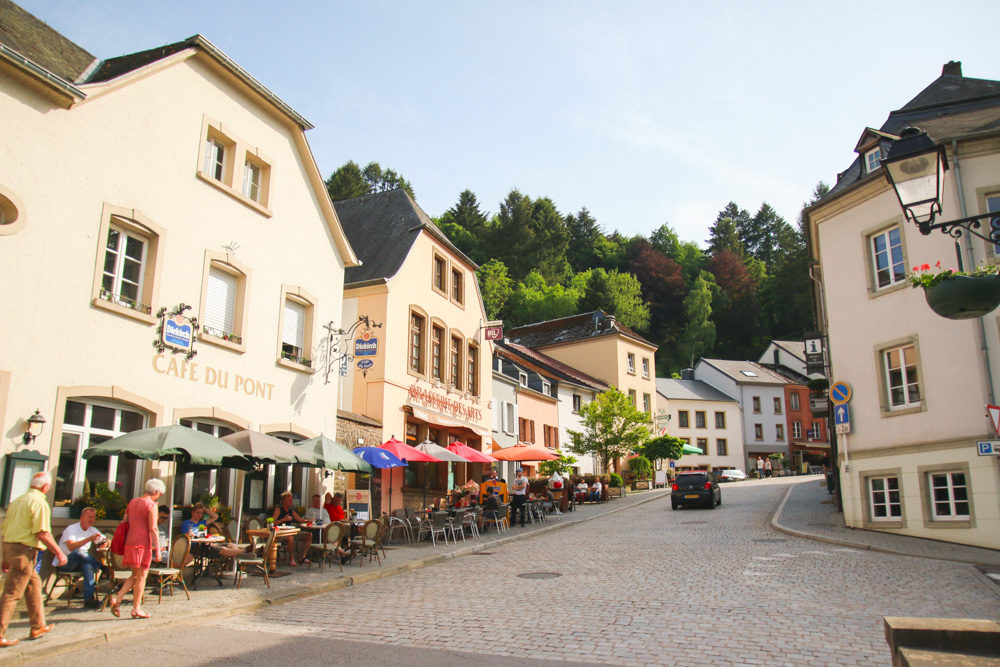
Day 1 – Vianden, Luxembourg
We got a late night ferry from the UK, arrived at 2am to our campsite nearby and woke the next morning with a 4hr drive to Vianden in the north of Luxembourg. We arrived late afternoon after a late start recovering from the tiring day we’d had finishing the van the day before and arriving so late that morning.
The town was filled with quaint, pastel coloured buildings that we wandered the streets for a while exploring, before heading up to the viewpoint on the chairlift. We definitely recommend that, where you can see both views of the town below, and Vianden Castle. If you have time, you can take a walk over to the castle too! We headed back down, had some drinks at a bar by the river while we found a campsite for the night.
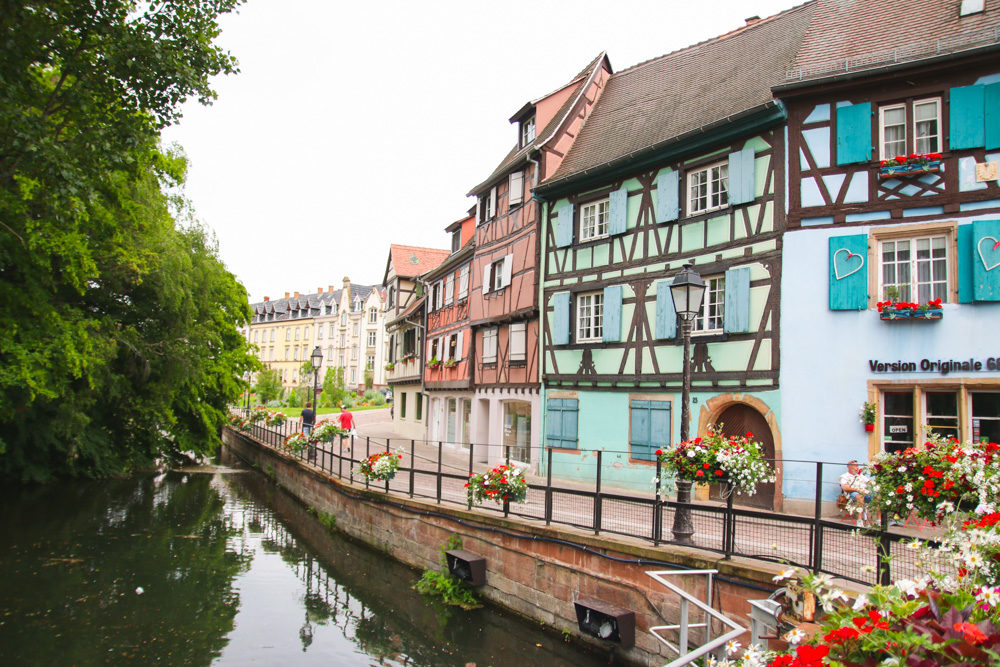
Day 2 – Colmar, France
The second day saw us driving 3.5hrs south into France to visit the old Alsacian towns of Colmar and Eguisheim. We spent the first part of the afternoon exploring Little Venice, before heading to explore more of the Old Town and stopping for some lunch. It’s such a cute little town to explore, lined with the river and definitely worth a stop.
Afterwards, we drove 10 minutes outside of the town to visit the old cobble-stone village of Eguisheim. Built in a circular style, the village was filled with colourful wooden beamed houses, just like Colmar but on a much smaller scale. We definitely preferred it over Colmar, and although it’s not in Provence, reminded us of a real life Beauty and the Beast style village!

Day 3 – Interlaken, Switzerland
The drive from Colmar to Interlaken was one of the easiest and most scenic drives of the trip, passing through hundreds and hundreds of tunnels (don’t Switzerland love their tunnels?!). It was also the most expensive 24hrs of the trip, and although it was so beautiful to explore, we couldn’t wait to leave because we just hadn’t budgeted for that level of spending haha!
We headed straight for Grindelwald, and took the (super expensive) cable car up to First. We hung around for a little while, admiring the views and watching all the activities you could do up there, wishing we had the $ to afford some of them, like the karting down the mountain, but we just stuck to the only free one up there of the cliff walk. The views were nice, but I actually preferred them from below the mountain, filled with ski shacks and greenery, with towering mountains all around!
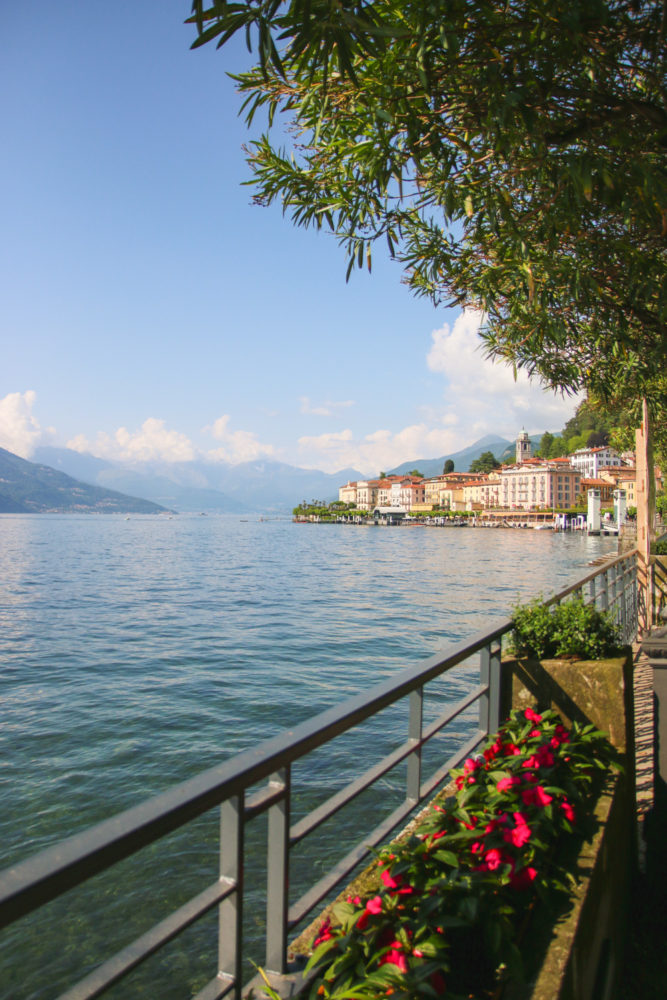
Day 4 – Bellagio, Lake Como
We headed into Italy on the 4th day, and those Italian roads and drivers are insane! We took the winding cliff and lakeside roads from Como to Bellagio, where we explored the town, treated ourselves to some gelato, and found a cute little campsite for the evening with a traditional trattoria with it’s own private beach area at the side of the lake where we settled down for the evening with a freshly baked proper Italian pizza, while we watched the sun set.
We didn’t really do much this day, but the views were amazing, and that campsite and pizza were honestly so good! It was a nice chilled day after all the walking we’d been doing the previous few days.

Day 5 – Sirmione, Lake Garda
This was one of my favourite stops of the trip, and somewhere that I’m dying to head back to at some point to see more of, because we just didn’t have long enough to see all of the things that we wanted to in the day that we spent there. Ideally we’d have spent 2-3 days driving along the lake, but with the two weeks that we had we could only really stop at one town.
So we chose Sirmione, as it’s one of the larger towns with so much history and so much to see. From beaches to swim in the warm lake water (and thermal springs), to old castles and ancient ruins to wander around. We spent a good few hours here, and then had the most chilled evening spent parked up for the night in the carpark right on the shore of the lake!
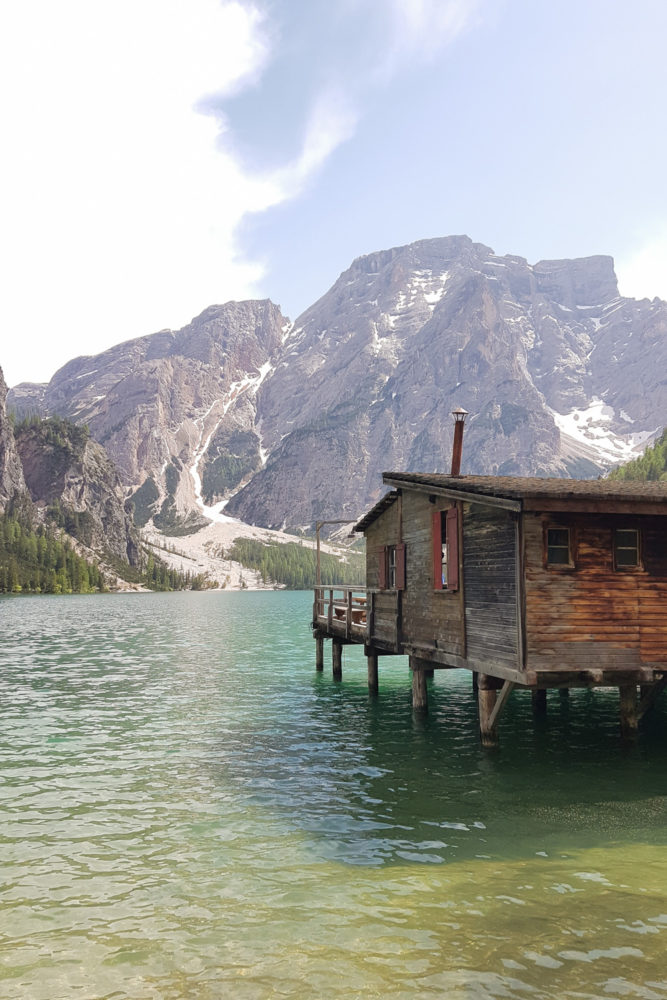
Day 6 – Lago di Braies, The Dolomites, Italy
Day 6 was another chilled day headed north from Lake Garda to Lago di Braies in the Dolomites of Italy. We got stuck in major traffic just outside of Garda because of a huge accident, but we finally arrived in Lago di Braies (also known as Pragser Wildsee) in the afternoon. Sadly, half of the lake was closed off for filming so the famous boathouse wasn’t open and we were quickly shuffled away by security so that filming could start.
By the time we walked to the far end of the lake, which was closed due to safety reasons from landslides, they’d shut off a whole other section of the lake for filming as we were headed back so we didn’t have the best experience here. That along with mega expensive parking for the campervan left us in a pretty bad mood about the whole thing. But, we found a campsite and spent the evening having a good clean up of everything, got all of our clothes washed and just chilled in the van with the rain rolling in.
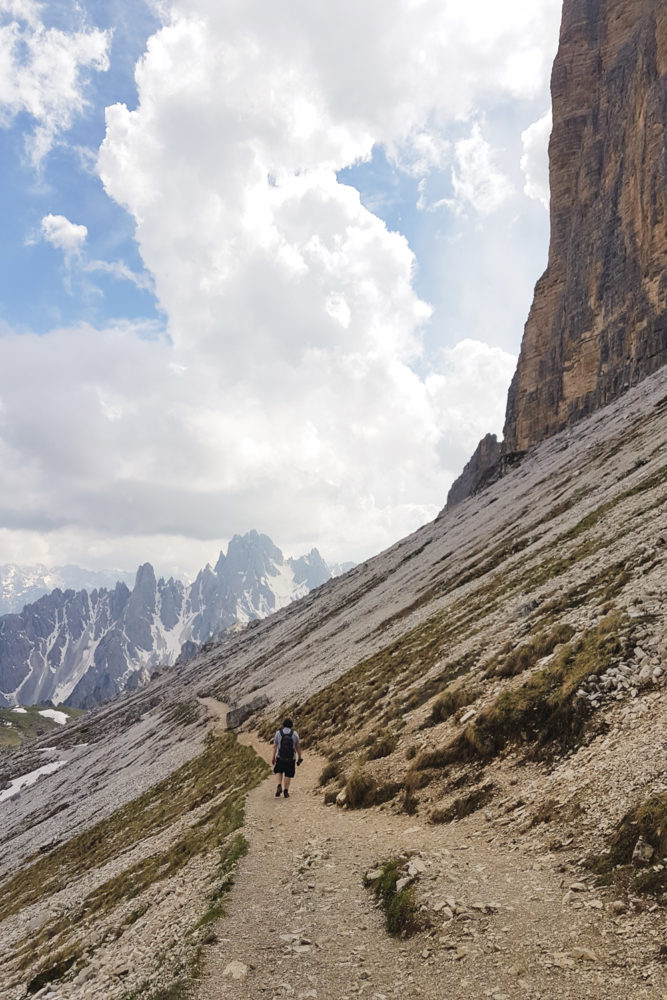
Day 7 – Tre Cime di Lavaredo
So we kind of did a huge detour on the whole trip because I really, really wanted to head to Lago di Braies, and the Tre Cime di Lavaredo, which was a good few hours north of the rest of the journey. But it was SO worth it. Tre Cime di Lavaredo turned out to be our favourite stop of the entire trip, and a night that we’ll never forget. And we *almost* didn’t head up there because we found out that morning while researching about it, that the road to the carpark was a toll road and would cost us €45 for the campervan!
We headed up anyway, and man was that road steep! I hated it, but the views from the top were amazing and I’m so glad we did it. We headed straight out to do the circular walk, which is actually pretty flat for the most part, but as the trail had only opened 5 days before we arrived, the snow hadn’t been cleared on the second part of the trail yet, and so to me, it was too dangerous to traverse the tiny slushy path that everyone else had made to get across, so we turned back. The views were incredible though, and you can stay overnight in the carpark, so we did just that to get our moneys worth! We couldn’t get over those views!
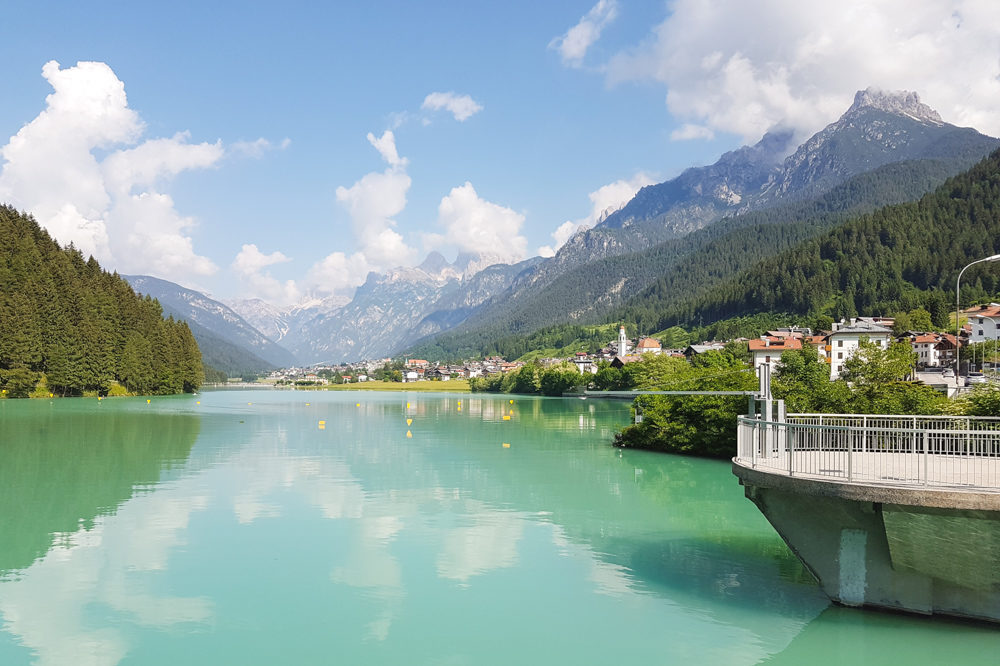
Day 8 – From Italy to Slovenia
Not every day goes to plan while you’re travelling right? Well, our day driving from The Dolomites of Italy to Slovenia didn’t quite go to plan. The roads up there in the Dolomites are insane, so the journey took double the amount of time than Google told us, but we did drive past some amazing views! It was crazy hot and humid and we were so over driving for the day. We headed to the coast of Slovenia, but as we arrived at Koper, they were shutting all the roads off into the main town faster than we could get in, so we scrapped that idea and headed to Piran instead.
Well that was a disaster too, because Slovenia is not very campervan/motorhome friendly, and all the parking was height barriered or full. So we scrapped that and headed to an aire that we found at the Marina. Well, go read the blog post to see how that one turned out haha!
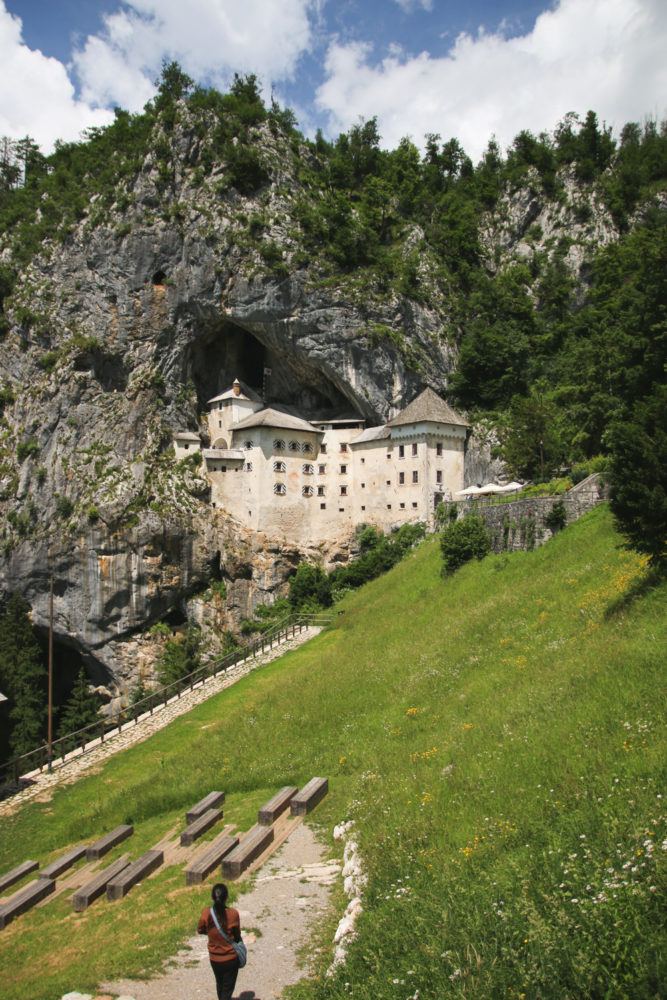
Day 9 – Predjama Castle & The Soca Valley
We headed back inland to explore more of Slovenia, and our first stop was to Predjama Castle. An old castle built into a huge cliff face and cave system. It was definitely worth a stop, and although we were unsure of whether to go inside the castle, because of mixed reviews online, we’re so glad we did (get the audio guide – it’s free)!
We then headed to somewhere I’ve been dying to visit for years! The Soca Valley. Just look at the colour of that river! We found a campsite right by the river, chilled out for a while and then went for a short walk to the Slop Kozjack waterfall, which passes right by the river. Definitely worth stopping by if you get the chance!
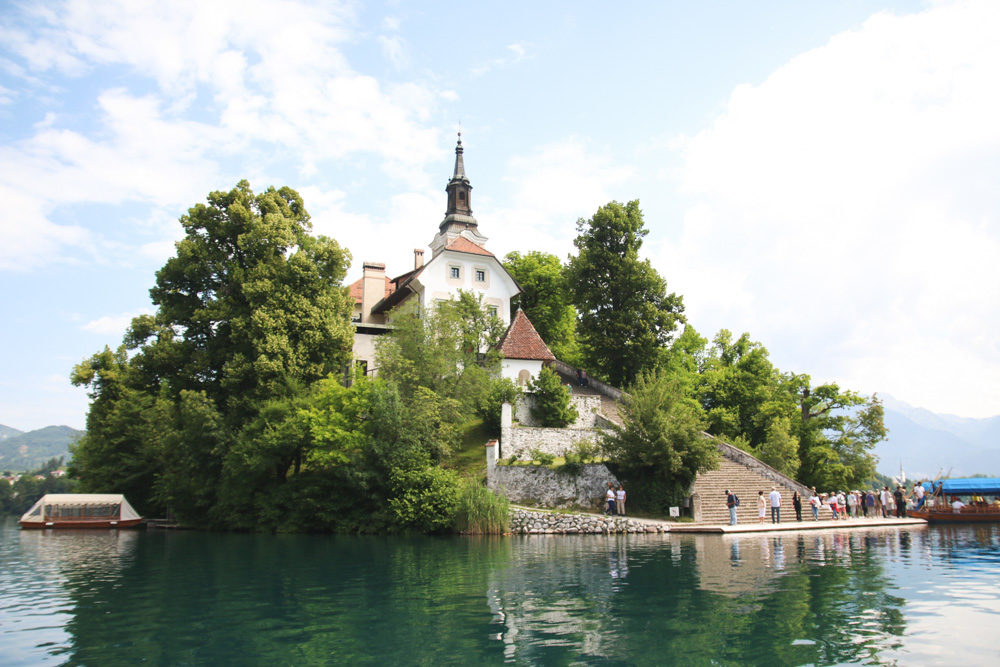
Days 10 + 11 – Lake Bled
This was the main reason we headed to Slovenia on this roadtrip! Ever since I first saw photos of the tiny island sitting in the middle of the lake, I knew we had to go there. It definitely didn’t dissapoint! We spent the afternoon walking around the lake (it’s only 6km) and taking in all of the views, before crashing for the night. It was SO hot and humid that we basically just didn’t want to move!
The next day, we hired a row boat and paddled out to the famous island. What an experience that was haha! There’s not much to do on the island, but it’s well worth a little paddle out and around it if you have time. There’s quite a bit to do at Lake Bled, so you can easily spend a couple days here.
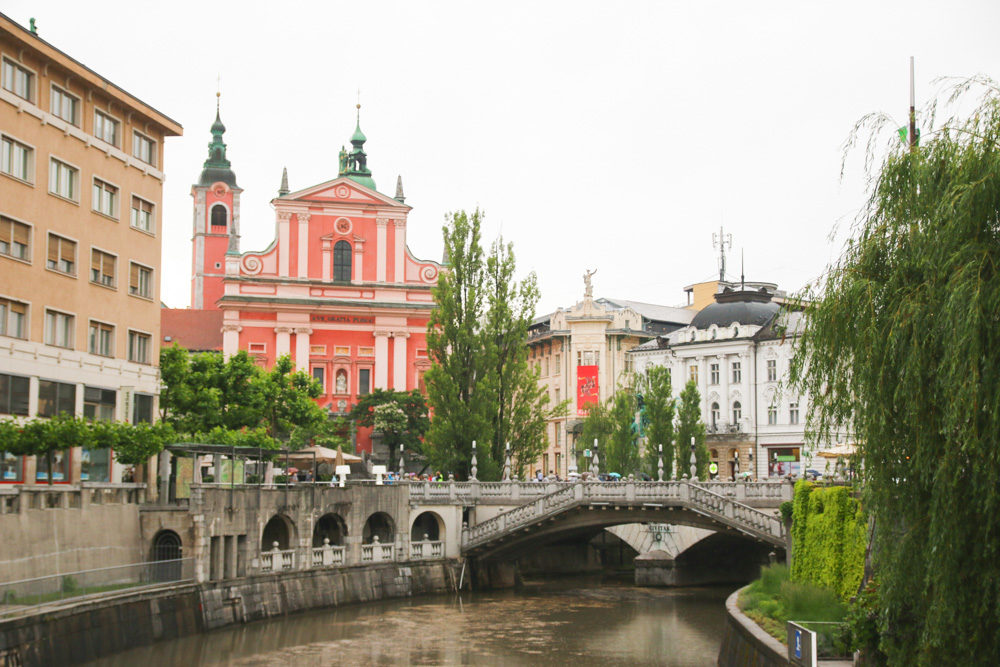
Day 11 – Ljubljana
After hiring a rowboat to paddle out to Bled Island, we hopped in the van and drove to the nearby train station to head to Slovenia’s capital, Ljubljana (pronounded Loo-blee-ah-nah). Being a city, we knew parking the van would be difficult, so we decided the best and easiest option would be to head there on the train. It only took an hour, and Shane got a nice rest from driving (he fell asleep). We arrived to torrential rain and the worst thunderstorm we’d ever seen.
It eased off after a while of hiding under the train platorms, so we headed out in search of food and sights. It’s such a lovely city to explore, and being so small, it really doesn’t feel like you’re in a city centre at all. We didn’t get to see everything we wanted though, as we found our missing cat (she was missing for just over a year), and my mum called to confirm it was her. So we cut our day there short and headed back to the van to make a start on heading home early to see her! So after this point the trip was a bit of a rush, with long, long driving days. But we would have had a few extra days exploring Austria and Germany.
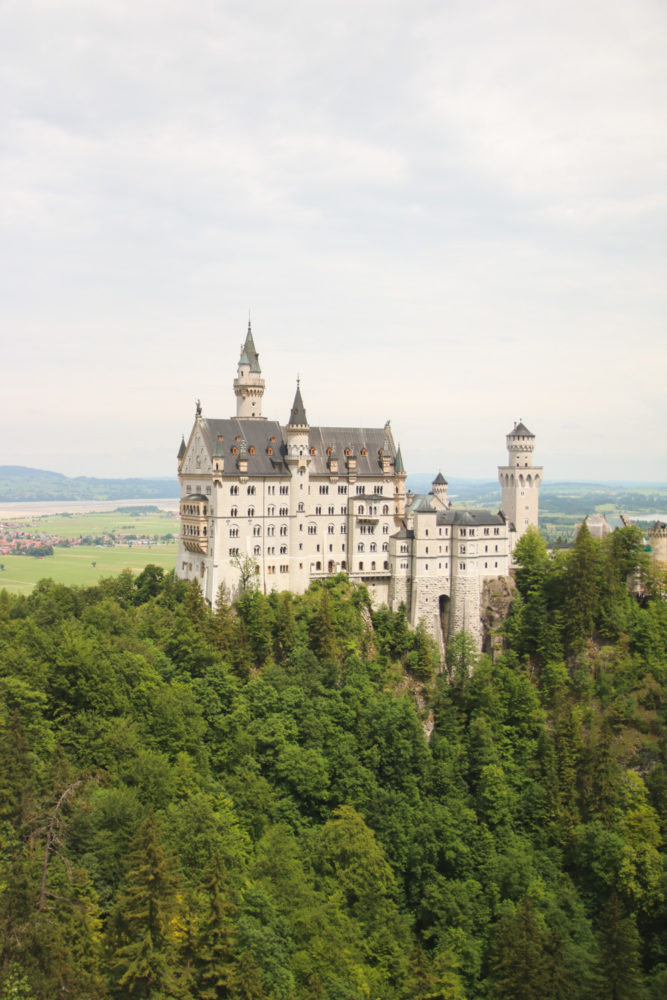
Days 12-14 – Hallstatt, Neuschwanstein + the Journey Home
So ideally, day 12 would have been us driving from Lake Bled to Hallstatt in Austria, exploring the town for a couple hours, heading up the gondola and then taking a slow drive towards a campsite near Neuschwanstein. But instead, we drove to Hallstatt, couldn’t find parking, gave up and headed towards Neuschwanstein and just chilled for the afternoon/evening.
Day 13 was spent at Neuschwanstein Castle and the nearby town of Fussen. We loved the exterior of the castle, but honestly, the inside was a letdown. Save your money and go for a hike in the woods surrounding the castle to get the best views instead, as you can access all of the surrounding area for free (you only need to pay car parking). Fussen was such a lovely little town, filled with pastel buildings! I wish we could have stayed longer, but we had a long 8hr drive back to Luxembourg that evening, ready for our drive back to Calais the next morning for our ferry that afternoon!

So, that’s our entire two week itinerary. You can read the full posts on each day for more detail. We absolutely LOVED the trip, and although we had to cut the trip short (which we were SO ok with), we wished that we had those extra few days to see more of Austria and Germany.
I created a little Google Map below, which you can open to see the trip in more detail, including details of each campsite/parkup we stayed at throughout the trip, all of the places we visited for sightseeing and the entire journey. Just open it up for more details, or you can even save it to your own maps for future reference!
We’ll be doing a full Q&A post soon, answering loads of questions about the trip, like how much it cost us, where we loved the most, which country was the most accomodating for campervans (and which wasn’t). So, if you have any questions you want us to answer, just leave us a comment below and we’ll include it in the post!
Where’s your favourite roadtrip you’ve done in your van so far?
Watch all of the Vlogs!
You Might Also Like...

Europe Roadtrip Day 6: Lake Garda to The Dolomites (Lago Di Braies)
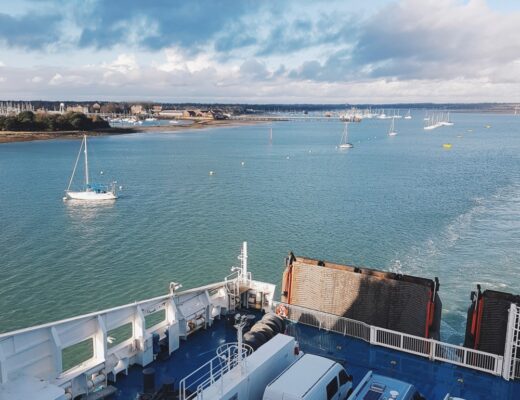
Brittany Ferries Portsmouth to Santander Review

Europe Roadtrip Day 5: Bellagio to Sirmione, Lake Garda
No comments, leave a reply cancel reply.
Save my name, email, and website in this browser for the next time I comment.
This site uses Akismet to reduce spam. Learn how your comment data is processed .
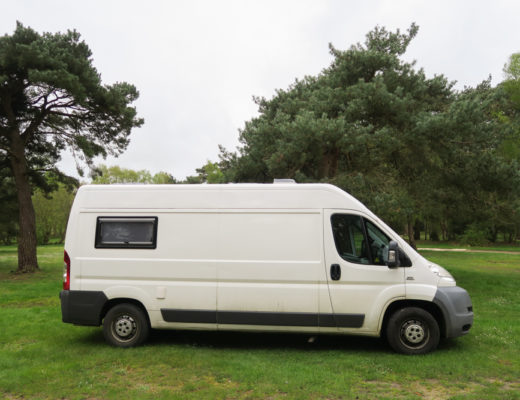
Should I build a Campervan?
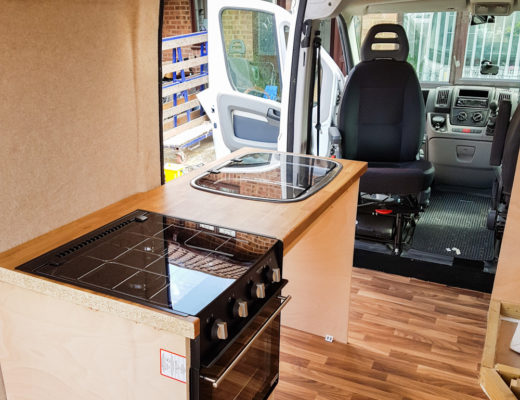
Van Conversion - Building the Kitchen

The Best Motorhome Holidays in Europe
This post may contain affiliate links, from which we earn an income.
Find the Best Motorhome Holidays in Europe
Are you planning a motorhome holiday in Europe but don’t quite know where to go? With so many countries, cultures and even climates to choose from, it can be difficult to decide which destination in Europe is right for you.
Check out our destination ideas and plan your European road trip with our helpful guides and motorhome travel tips.
Hiring a van for your Europe trip?
If this is your first motorhome trip abroad, or you’re hiring a van to explore Europe, make sure that you have all the right documentation and read about the post-Brexit travel rules (if you’re from the UK).
Our recommended European campervan and motorhome hire company is Motorhome Republic , which has hundreds of pick-up locations across Europe, all perfect starting points to see all the best bits as you road trip Europe .
An aggregate motorhome and campervan booking site, Motorhome Republic pull together all the best deals from many different rental companies, to offer you a wide choice of options alongside an excellent English-speaking expert motorhome Concierge Team.
RELATED POST: Hiring a Motorhome: Everything You Need to Know!
Documentation You Need for a Campervan Road Trip in Europe
- You must have at least three months remaining on your passport (issued in the past ten years) at your intended date of departure from Europe. Your passport is valid for travel until expiry in the Republic of Ireland. If you’re a Brit, you can no longer use the EU/EEA passport lanes.
- You may be asked at the border or airport to provide evidence of a return or onward ticket and to prove you have enough money for your stay. If you can’t provide such evidence, border control are within their rights to refuse you entry to the country.
- You must have a minumum of third party vehicle insurance. You no longer require a green card to prove you have motorhome insurance cover when travelling in Europe.
- Non-EU citizens will require an International Drivers Permit to hire a vehicle in the UK and Europe. UK citizens who have a driving licence do not require an IDP for Europe unless the licence held is paper only, or was issued in Gibraltar, Guernsey, Jersey or the Isle of Man.
- You will require an Animal Health Certificate to take your pet to the EU or Northern Ireland from Great Britain. Your pet must be microchipped and have received a rabies vaccination before the AHC can be issued by a vet.
- You must display a UK sticker on the rear of of your vehicle (if registered in the UK) instead of a GB sticker, unless you have a new style UK numberplate which displays the Union Jack flag.
- Your headlights must be adapted for driving on the right when you travel Europe.
- Medical insurance, travel insurance and breakdown cover are not mandatory, although highly advisable when you take a European motorhome trip. We recommend True Traveller for insurance purposes, alongside an existing EHIC, or new GHIC, for UK travellers,.
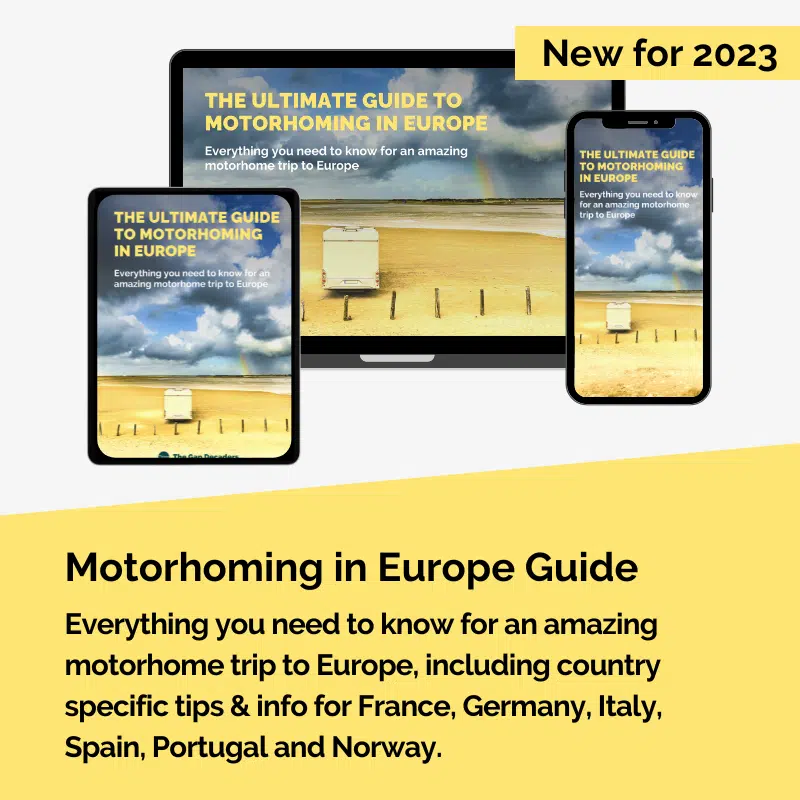
The Ultimate Guide to Motorhoming in Europe
If you’re planning a motorhome trip to Europe for the first time, our guide has tips, advice and information to help you plan your European tour.
Don’t struggle trying to plan your Europe trip, find out everything you need to know before you go + loads of motorhoming tips for when you arrive.
Getting to Europe
If you’re flying in to Europe from elsewhere in the world, you can collect your motorhome rental and head off on your road trip.
Remember to let your hire company know if you’re planning on taking your motorhome or campervan out of the country in which you hired it – some hire companies won’t allow their vehicles to be driven across Europe, or may charge extra.
Driving to Europe from UK
If you’re coming from the UK, then you have to get onto the continent – there’s no way round it! There are a number of ways of getting to mainland Europe from the UK:
- Dover to Calais ferry – the popular ferry takes around one hour thirty minutes to cross, chances are you’ll be through and on the road within a few hours.
- Channel Tunnel – the train between Folkestone and Calais is probably the quickest and most regular route to Europe, but as with the ferries, the queue can be horrendous in peak season and at peak times.
- Check out the slightly more obscure motorhome and campervan travel routes, which may be a little longer but often have great special offers. Try departing from Newhaven for example or arriving at Dieppe or Le Havre.
- The crossings from Portsmouth and Poole to St Malo and Cherbourg are convenient for western France, and there is a choice of the fast catamaran, which takes around three hours, or an overnight crossing which arrives early in the morning.
- There are longer (and more expensive) crossings from Portsmouth to the northern Spanish ports of Bilbao and Santander, which should also be considered if you’re heading south. You may find that the added ferry costs are covered by the savings in fuel, tolls and less driving time.
- For those living in on the island of Ireland , the ferries from Cork and Rosslare to Roscoff may be a good alternative, and mean only one crossing.
Driving a Motorhome in Europe
All European countries have their own driving laws and legislation covering motorway tolls, low emission zones and wild camping for motorhomes.
You can find specific information on these laws, what you need to carry in your vehicle, and what you should be aware of as a motorhomer in our motorhome touring guides, which are country specific.
We would strongly advise either a specific motorhome sat nav when you’re travelling Europe in a large vehicle. Don’t hire one with the motorhome unless it’s capable of being configured for a large vehicle. If it’s not, then it’s a waste of money and you’re better using a free navigation app like Google Maps on your phone or tablet.
If it’s your first time driving abroad, it can feel a little daunting, especially if you’re in a right hand drive vehicle. Take your time and stick to motorways and A (national) roads until you find your feet. Try not to spend too many hours behind the wheel every day, or share the driving.
Popular Motorhome Holiday Destinations in Europe
Without doubt the most popular motorhome destination in Europe, France has really embraced the culture and has a fantastic network of municipal and commercial motorhome aires , as well as superb coastal and inland campsites, and some amazing wild camping opportunities.
France is a great country for touring from place to place, but also has some of the best campsites in Europe , along both the south west wild and unspoilt Atlantic coast and the more gentle shores of the Mediterranean.
The latter will guarantee you good sunshine in the summer months, the former is perhaps a tad more exciting and perfect for families with teenagers.
Outside of the coasts, France is a huge and diverse country, offering something for everyone planning a French road trip . From hiking in the mighty Alps to the rolling countryside of Provence, and a handful of really iconic cities, whatever your holiday style you’ll find it in France.
If there are any downsides, it’s the high cost of fuel and toll roads, and the sometimes volatile nature of France’s population, who like to protest in the summer months and block roads and access to fuel.
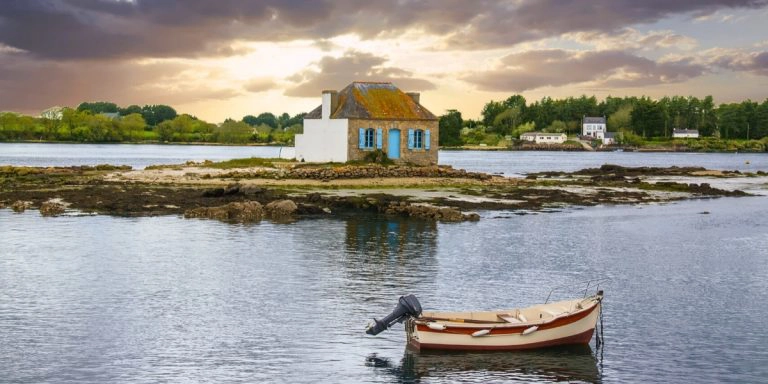
Off The Beaten Path France – 8 Unique Places
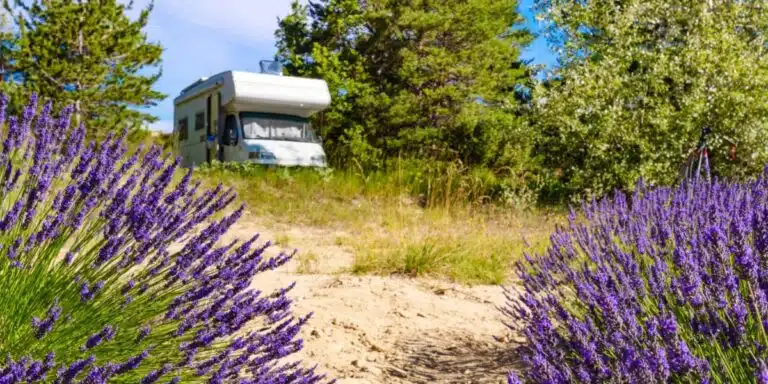
Motorhoming in France: Your Complete Touring Guide for 2024
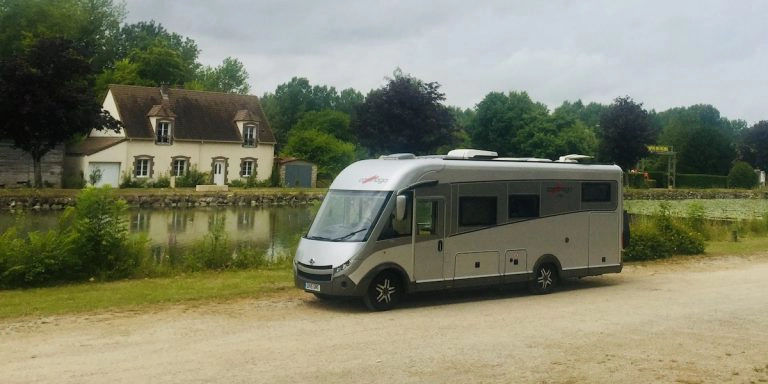
Wild Camping in France for Motorhomes – All You Need to Know
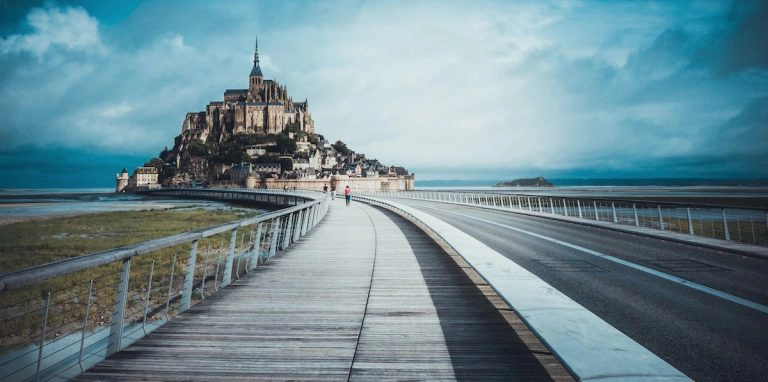
The Best Destinations for Motorhome & Campervan Holidays in France
Motorhome itineraries for europe.
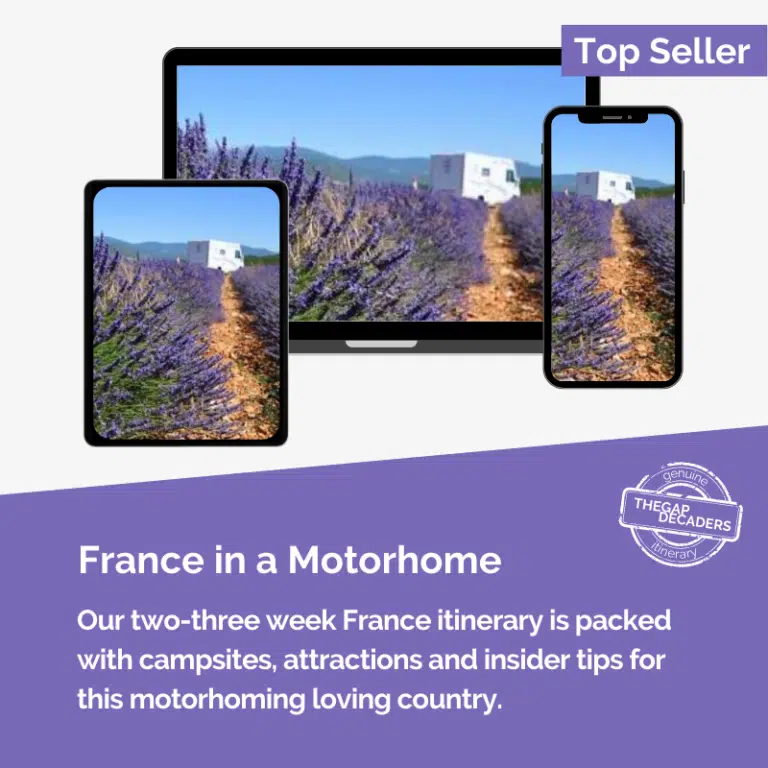
Further away from the UK, but easily accessible via the Portsmouth to Santander or Bilbao routes, Spain is a favourite of motorhomers looking for sun when northern Europe is suffering the cooler months.
But there’s so much more than sun and beaches in Spain. It’s the second most mountainous country in Europe (after Switzerland), shares one half of the Pyrenees and is home to the small, but perfectly formed, Picos de Europa.
There’s a lot of culture here too, from the castles and religious palaces of the north to the the Moorish architecture and white towns of Andalucia, in the south.
If it’s beaches and sun you’re after, stick to the eastern coasts of the Costa Brava and Costa Blanca for bearable summer heat (although air con would be advisable in July and August), lively resorts and cities, great campsites and friendly aires.
Or head inland for a taste of more authentic Spain, heart-pumping activities such as hiking and climbing, and free camping opportunities in abundance.
Spain is one of the cheapest countries in Europe in which to take a campervan trip, with fuel and LPG around a third cheaper than France and most toll roads now free.
Sadly, the coastal areas are starting to restrict where motorhomes can park overnight making wild camping much harder, and pushing people taking motorhome holidays into fee-paying sites and aires.
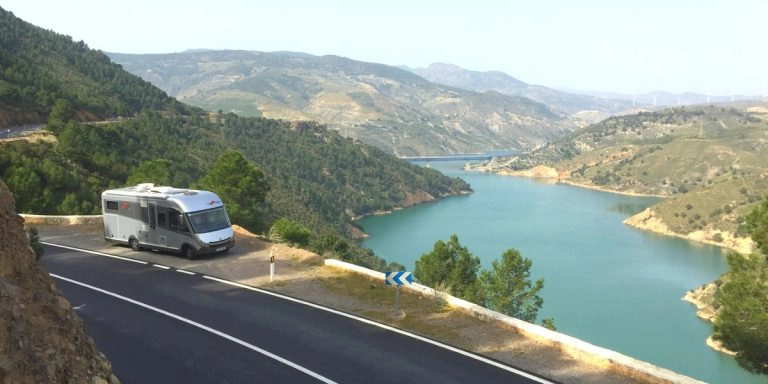
Motorhoming in Spain: Your Complete Guide for 2024
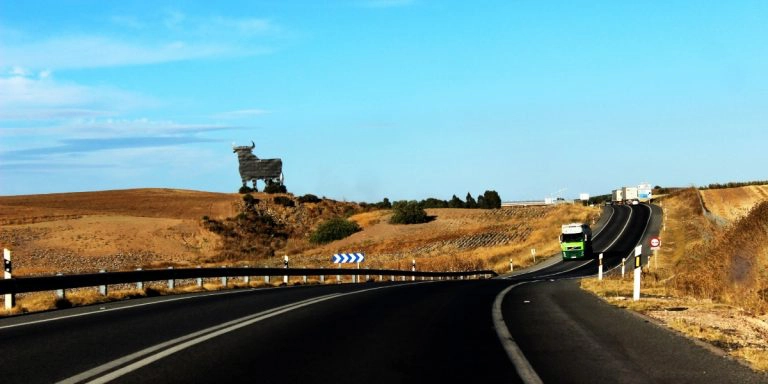
Driving to Spain from UK: Best Routes & Driving Tips
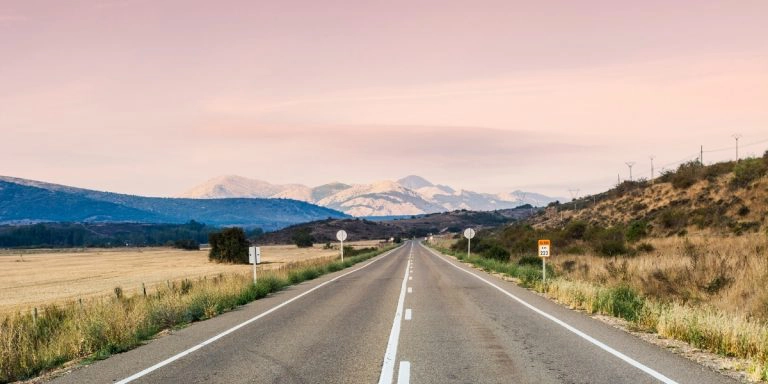
Spain Road Trip: 8 Amazing Routes for an Epic Trip
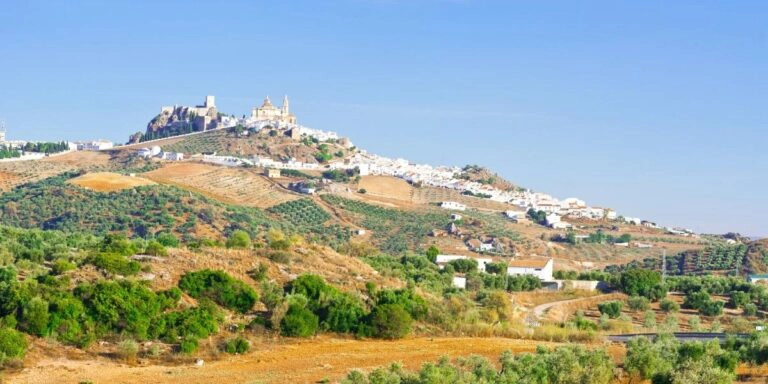
The Perfect Andalucia Road Trip: Itinerary, Map & Tips
More motorhoming in europe advice and guides.
- How to Tour Europe in a Motorhome
- The Best Campsites in Europe – For Campers, By Campers
- Tolls for Heavy Motorhomes >3.5T in Europe: Country by Country Guide
- Motorhoming in Europe After Brexit
- What is the True Cost of Touring Europe in a Motorhome?
- ACSI Camping Card – Review & Step-by-Step Guide
- EU Travel Made Easy: The Schengen Advantage of Your Irish Passport for Your British Spouse
Head for Italy if you’re feeling a tad more adventurous. It will take at least 15 hours one way from Calais, whether you choose to head down through toll free Germany or more expensive scenic France, so in reality you probably need a few weeks to do this trip justice.
But, it’s so worth it once you get there! You’ll be blown away by this sublimely beautiful country, with Renaissance cities, gorgeous landscapes and amazing gastronomy. Historic Florence , foodie Bologna , unique Venice , and even Rome are within reach.
Those with a few weeks will be able to explore the beautiful Italian lakes and dramatic Dolomites, the rolling hills of Tuscany and Umbria, or the Italian Riviera to the east.
With even longer, Sicily and Puglia become attractive (and much quieter) spots for a motorhome road trip, making the most of the Italian sosta motorhome parking network as you travel.
The further south you go, the worse the roads become, so be mindful of this if you intend to move around a lot. Italy also has some of Europe’s most expensive fuel and campsites, which can be basic away from busy tourist areas, are expensive and you usually have to pay extra for your shower!
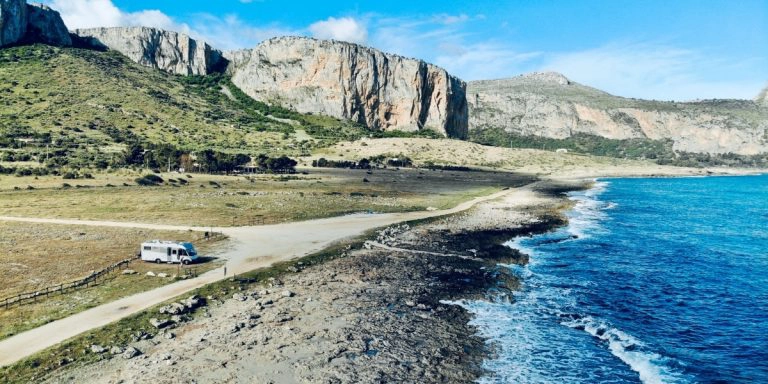
Motorhoming in Italy: Your Complete 2024 Guide
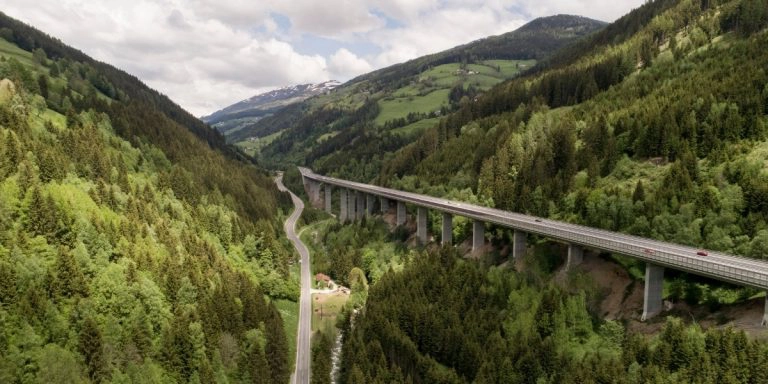
Driving to Italy from UK: Best Routes & Driving Tips
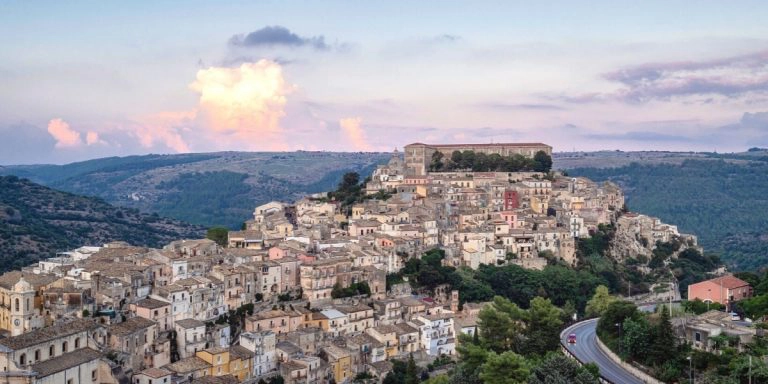
Sicily Road Trip – Itinerary, Tips & Map
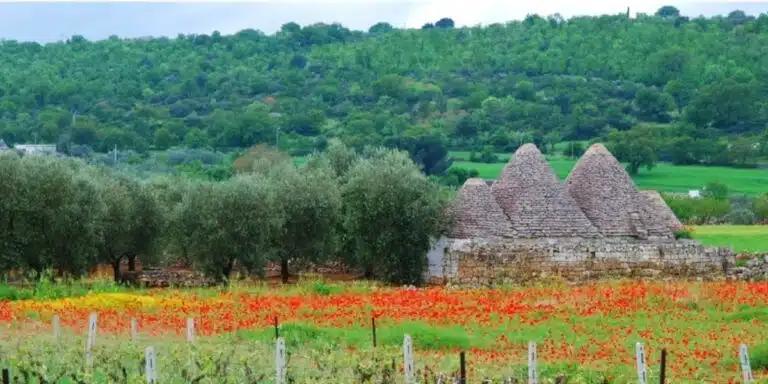
Puglia Road Trip: The Best 7 Day Itinerary + Map & Tips
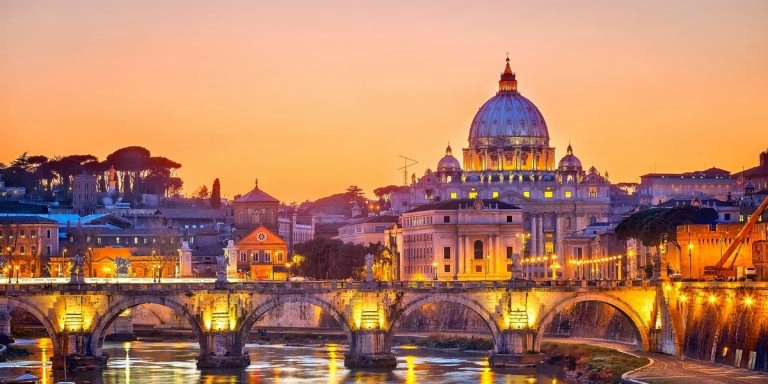
The Best of Rome in 36 Hours
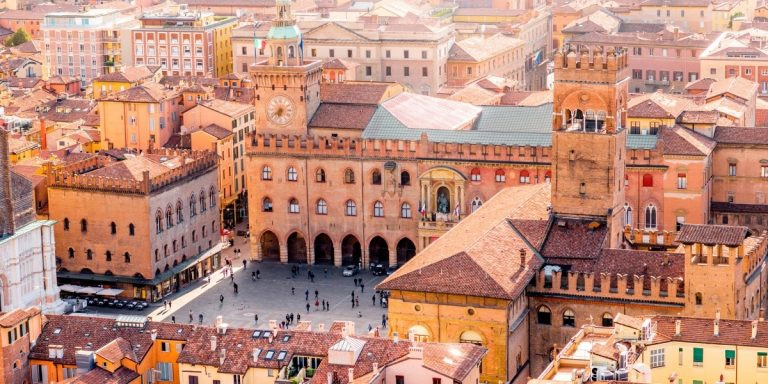
Savoring the Flavor: The Best Self-Guided Bologna Food Tour
A perfect companion when visiting Spain, Portugal is also a wonderful country to visit in its own right. Tiny, but packing a punch, Portugal’s coasts are chock full of incredible beaches, from the sultry and sheltered south facing Algarve to the the huge seas of the Atlantic, where the biggest waves in the world have been surfed at Nazare.
Inland, you’ll find granite mountains, dark skies and huge lakes, alongside rolling swathes of countryside planted with vines to support the emerging world-class wine culture. With a fascinating history of sea faring and world exploration, and some of the best sea food in Europe, don’t pass Portugal by on your way south.
If there are any downsides to this tiny country, it is that all wild camping, unless in authorised motorhome places, is now banned, since a new law was passed in January 2021. This means sites and aires will become full more quickly, and camping prices will rise.
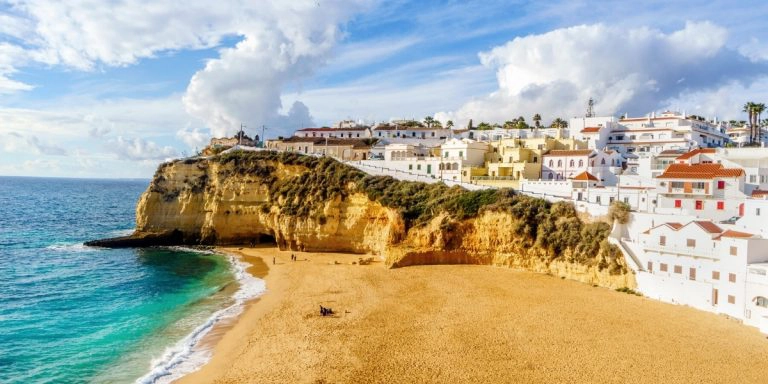
Road Trip Portugal: Two Incredible Itineraries
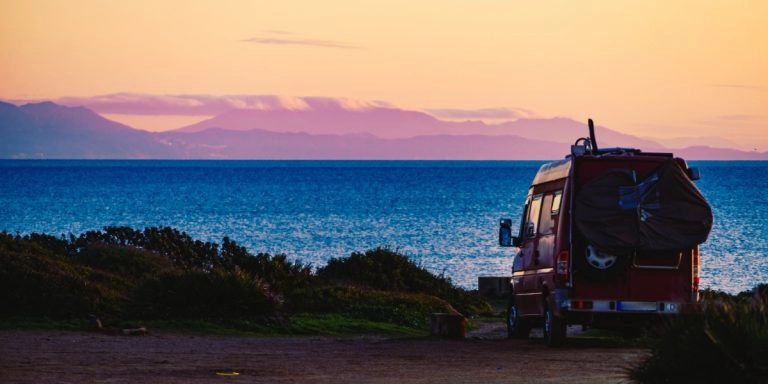
Campervanning in Portugal: Complete Guide for 2024
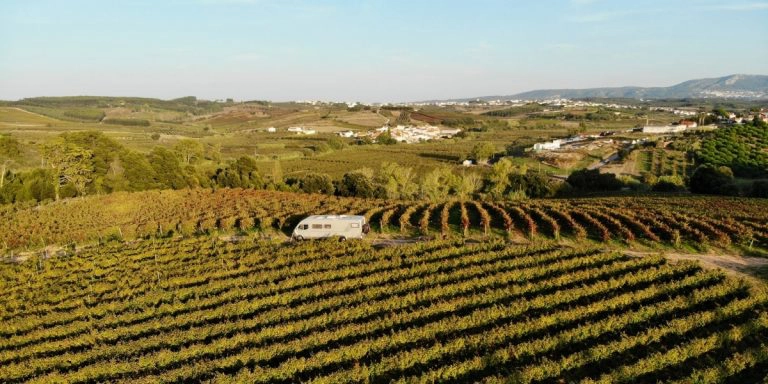
Motorhome Stays with Portugal EasyCamp
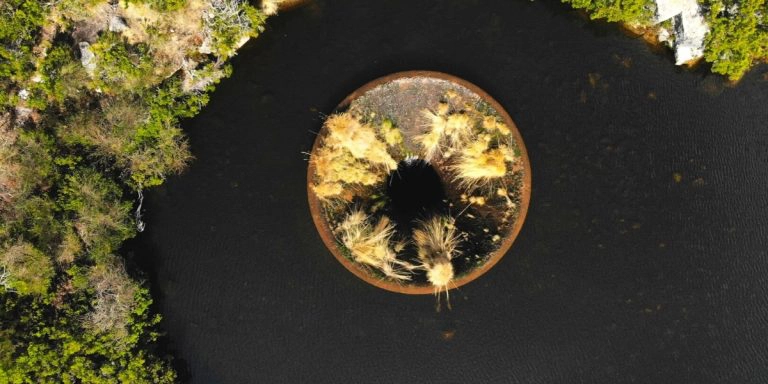
Covao Dos Conchos – Getting Up Close
Germany is a wonderful country in which to tour. With a large network of stellplatz (aires) and superb roads, you’ll love the ease of road tripping here. The locals are friendly, the food wholesome and the beer is pretty good too!
Germany is a surprising country, full of fairy tale castles and half-timbered medieval villages, alongside cutting edge industrial cities. Avoid the middle bit and head for romantic Bavaria and the Alps, or go north for the sea city of Hamburg and the beguiling and beautifully quiet northern coast, with islands that will tempt you to stay.
More adventurous motorhomers will head east, for Berlin and the gateway to the lesser travelled, yet fascinating, countries of eastern Europe. The roads will certainly be quieter as you head east, away from the busy and densely populated industrial belt, which you need to suffer to get to anywhere of interest in the country!
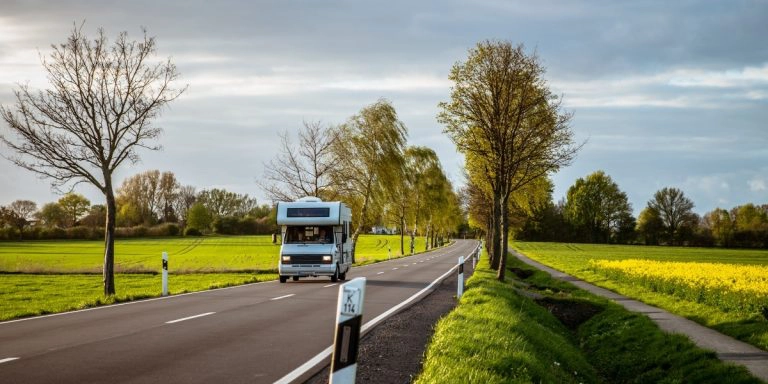
Motorhoming in Germany: Your Complete Touring Guide for 2024
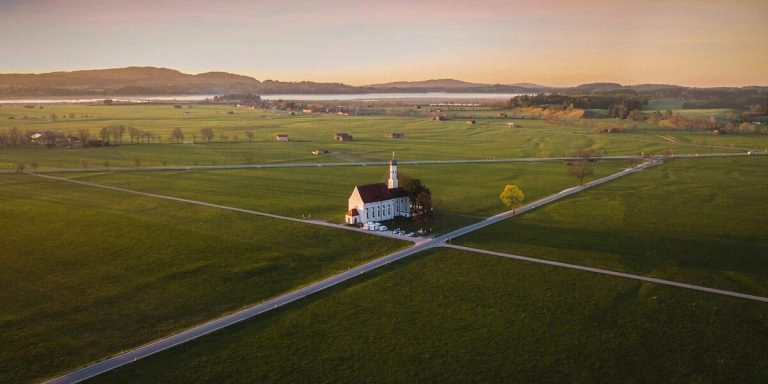
Six Unmissable Germany Road Trip Routes
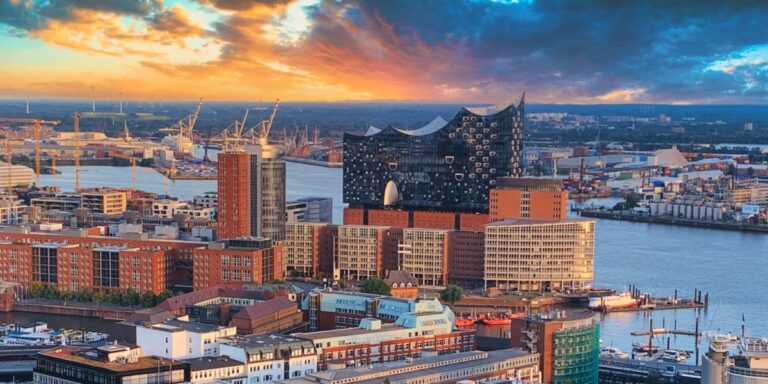
24 Hours in Hamburg – Itinerary, Map & Travel Tips
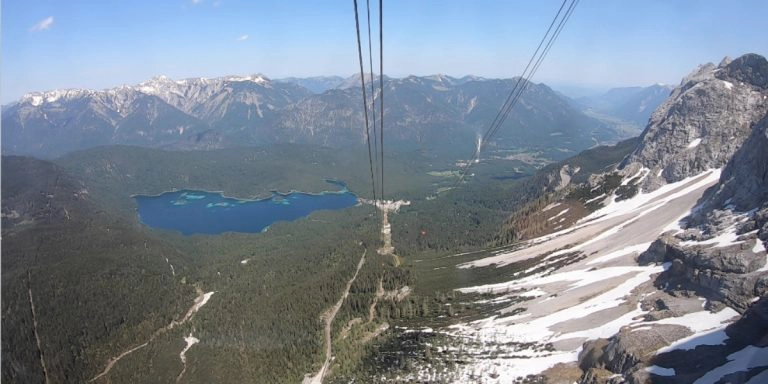
Visit Zugspitze Germany – Find Out How!
A hugely popular destination with campervanning road trippers, Norway is simply stunning. But, it’s a huge country and you’ll need time to see even a fraction of it. If you want to go the whole hog to Nordkapp in the Arctic Circle, and visit the Lofoten Islands on route, you’ll need a minimum of four weeks.
The most beautiful part of Norway is without doubt the Western Fjords. The sheer scale of the fjords and the surrounding mountains and waterfalls is breathtaking. If you love adventure and being outdoors, this is the place for you. With hiking, cycling and water sports opportunities everywhere, Norway is a great destination for families with active teenagers.
Very different to most of Europe, road tripping in Norway can feel like being on another continent. Getting to Norway takes a bit of effort, and inevitably adds to the cost of your trip, in what is widely recognised as being one of the most expensive countries in Europe. Budget wisely though and you won’t regret motorhoming in Norway.
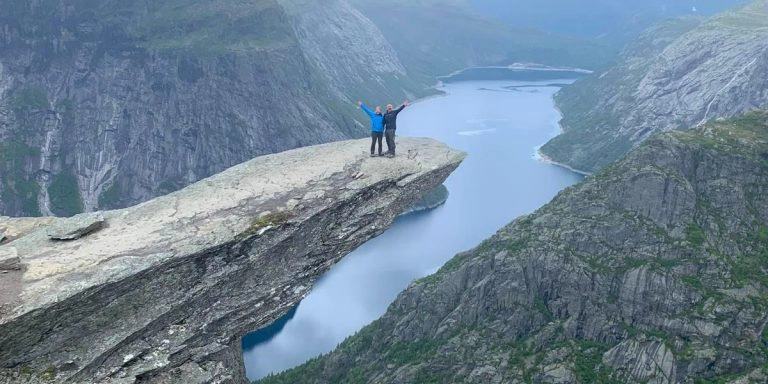
Trolltunga Hike: Absolutely Everything You Need to Know!
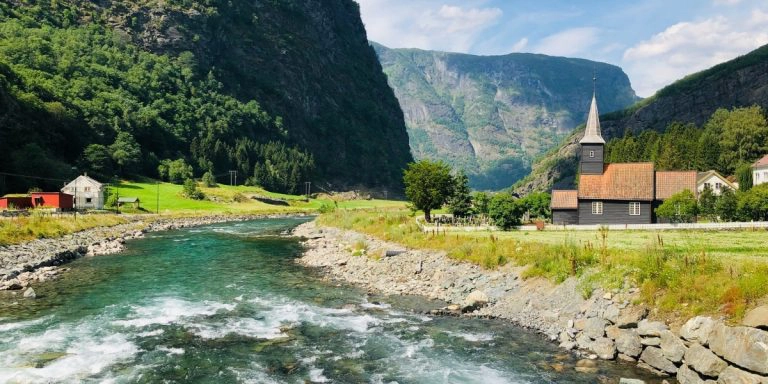
Flåm Norway: Visitor Guide & Tips
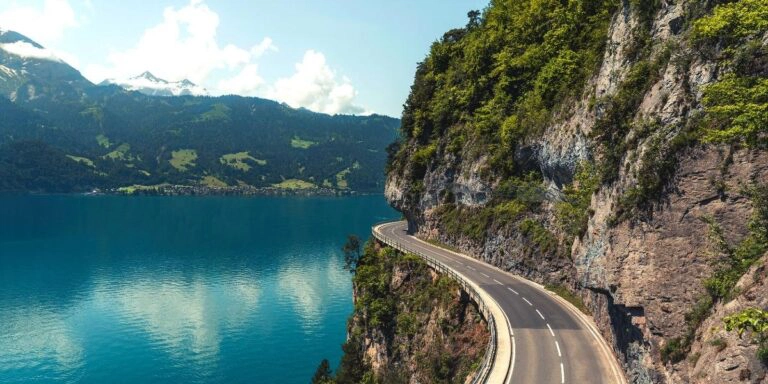
Europe Road Trip – 24 Incredible Routes
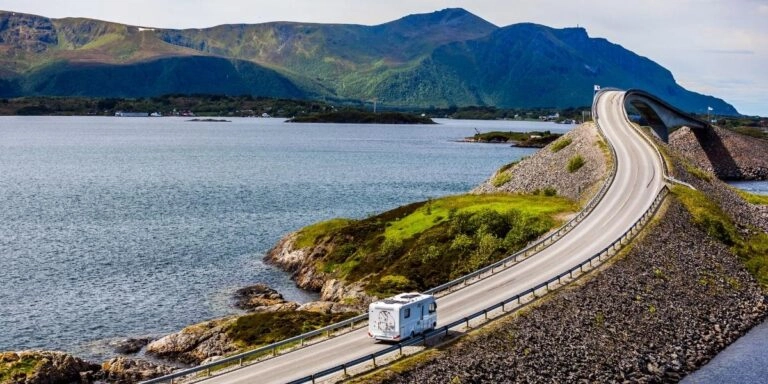
Campervanning in Norway: Tips, Routes & Destinations for 2024
Are you looking for uk road trips instead check out these top posts….
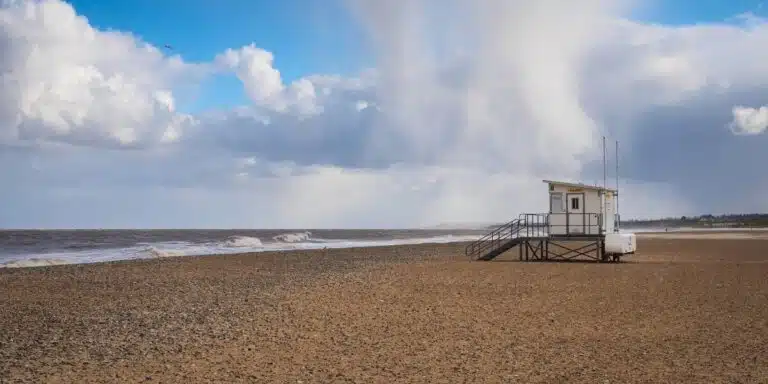
24 of the Best Things To Do in Great Yarmouth
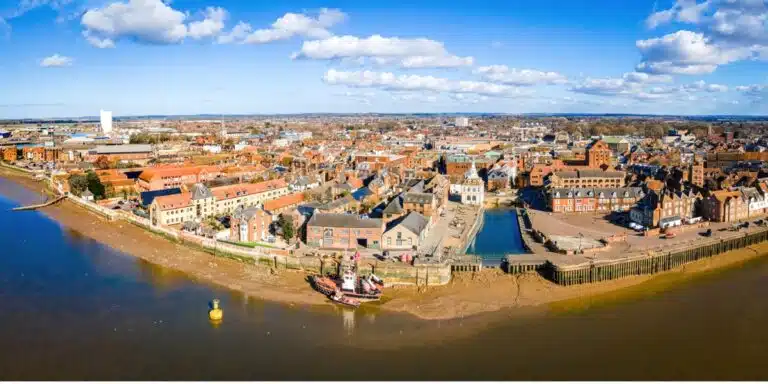
Best Things to Do in King’s Lynn: Top Attractions & Highlights
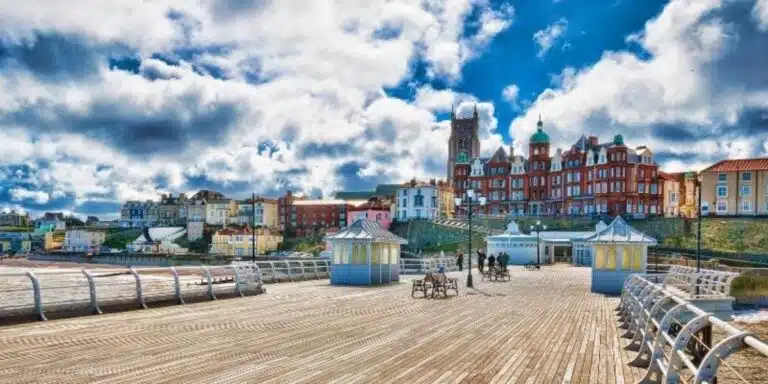
23 of the Best Things To Do in Cromer Norfolk
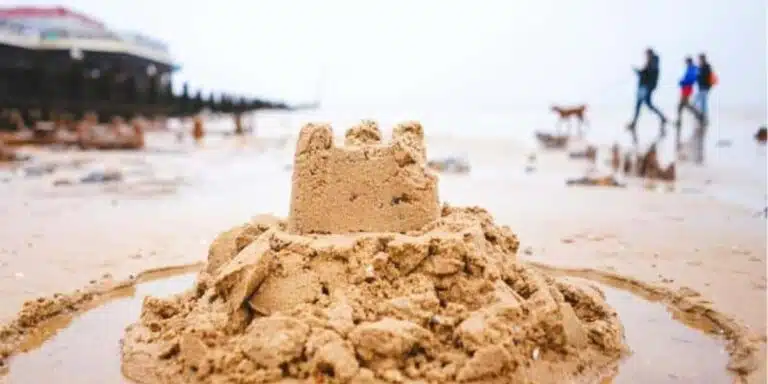
Things to Do in Norfolk: 37 of the Very Best Attractions
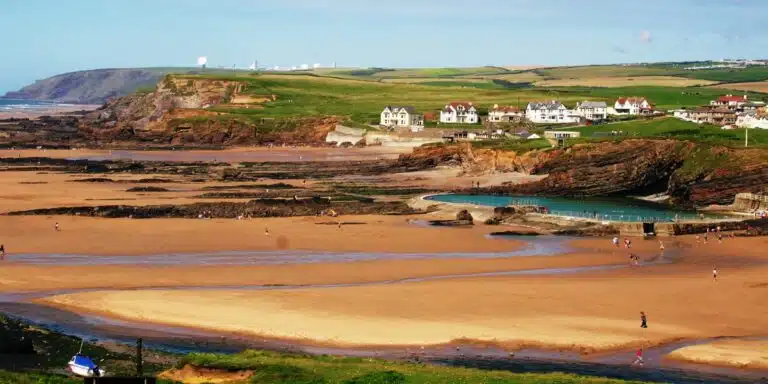
Atlantic Highway: An Epic Devon & Cornwall Road Trip
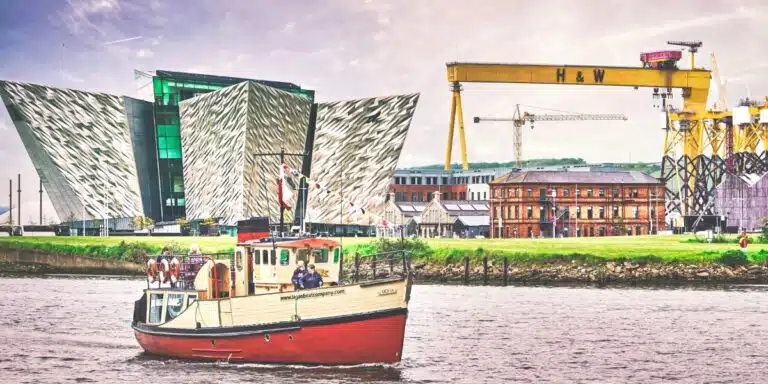
Belfast in A Day: Itinerary, Map & Tips
Love it pin it.
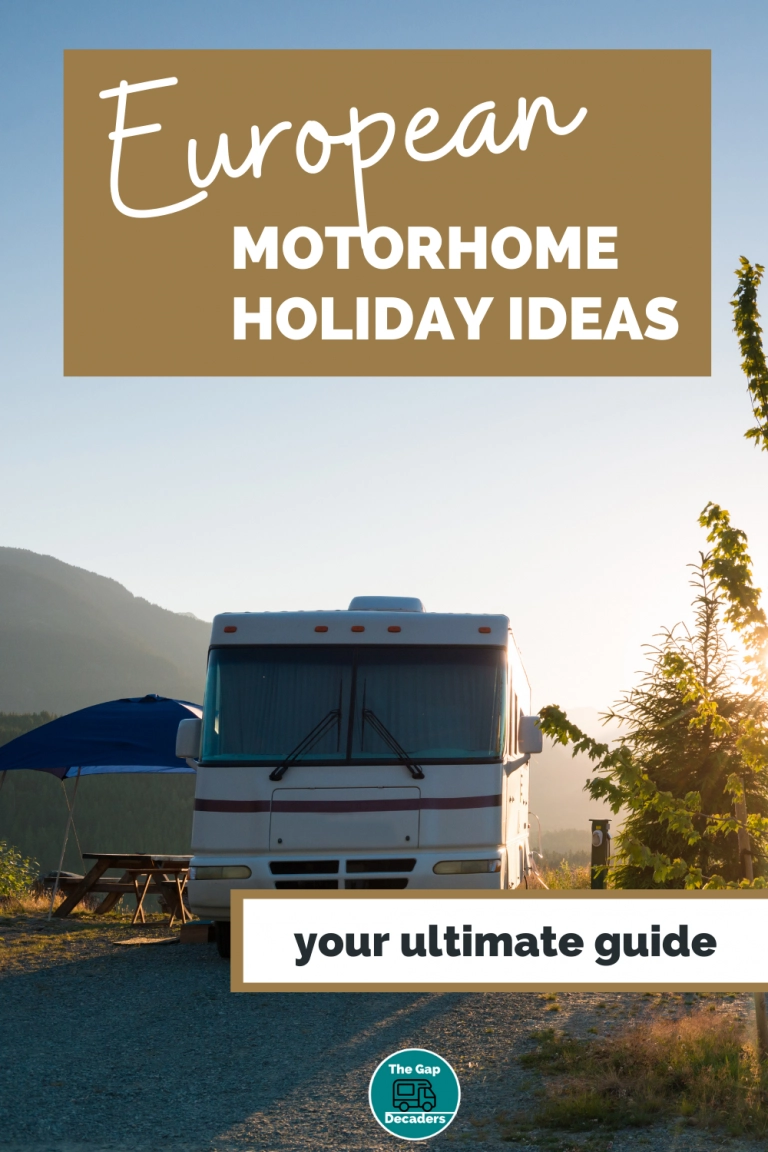
I have completed an 8-month trip across Europe by motorhome. As a former tour operator, I have traveled almost every imaginable way. I found motorhoming hard to beat. You pack once; you travel where you want when you want; you have no worries about where the next hotel room will be, and you have to try hard not to meet people.
A motorhome may not be ideal if you travel to Europe on a 2- or 3-week vacation. Some wrong turns on unfamiliar roadways can cause problems for people on a tight schedule. But it's ideal for a family exploring Europe for the summer or a retired couple with plenty of time. So why didn't I meet more Americans in over 9,400 inspected European campgrounds?
First, let’s look at the basics. There are three ways to acquire your camping van or motorhome:
The least expensive way to go on a long trip is to buy. You can buy from an outfit that will guarantee to buy back your rig at the end of the trip. For optimum savings, consider a good used motorhome with low mileage. I contacted an outfit in Amsterdam recommended to me by an experienced RVer and made my arrangements over the phone. When I arrived, my camper was ready and waiting. I even shipped several cartons of supplies in advance, which were stored in the motorhome until I arrived. There are some technicalities regarding insurance and registration, but these are handled by the outfit that sells you your camper.
I met many Americans traveling in Europe who had considered motorhoming. Still, I decided against it because they feared being stuck with the motorhome at the end of their trip. The buy-back program (see box out below for leases and buy-backs) resolves this dilemma. Many companies will agree to sell your camper on consignment at the end of your journey, but I found most people wanted the security of a guaranteed buy-back. Buy-backs vary but usually average around 65 percent of the purchase price. The longer you travel, the cheaper the cost per day. Reasonably used motorhomes and camper vans ideal for touring Europe range widely between $20,000 and $90,000 depending on size, year, condition, desired luxury amenities, and the country in which you find and purchase the vehicle. Leases often involve a smaller cash outlay depending on the length of your travel.
Europeans love to camp and there are campgrounds just about everywhere. They range from complete destination resorts with swimming pools, tennis, entertainment, bars, restaurants, and grocery stores on-premises to more rustic campgrounds with few extras. Almost all campgrounds have necessities such as bathrooms, showers, dishwashing facilities, electric hook-ups, and chemical toilets for waste. Many people find a central location they like and take day trips using the campground as a base until they move on.
If you take the cost of your camper (minus buy-back or anticipated resale price), insurance, registration, campground fees, and gas, you can get a good idea of your costs. My costs over 245 days at the time of my writing, traveling an estimated 16,500 kilometers, were 1,678 euros for gas (check current fuel prices by country here), 1,452 euros for insurance (motorhome insurance information can be found online and is often U.K.-based), and 932 euros for registration (usually handled during purchase or lease). Campgrounds averaged 15 euros and €40 per night depending on location and total family members and include electric hook-up and charge for the camper. Your mileage may vary depending on the area, the strength of your currency, and current variable costs, especially gas.
Some people save money by free camping (camping in truck stops, beaches, and along the road), but I do so only in an emergency and don't recommend it as a standard practice. Besides, you miss one of the significant advantages of camping in Europe. It's hard not to socialize and meet people when you're in a campground. Fellow campers will be intrigued by the fact that you're an American camping through Europe. I can't count when people invited me for a glass of wine and conversation. And if you are traveling with kids, you'll be amazed how they communicate through body and sign language as if talking didn't matter.
Spend Time with a Local Family
Another way to add meaning to your trip is to allow some time for visiting with a local family. Servas , an organization of 15,000 international hosts (7,000 in Europe) in over 100 countries, will provide host lists for the countries you request. The normal routine is to spend two nights at the home of a host family, usually including dinner. The objective is to learn about each other’s way of life and exchange ideas. Some hosts will give you a tour of the local area, and all can provide helpful information. Servas charges nothing except a membership fee, but the usual procedure is to thank your host with a small gift or bottle of wine. A variety of such hospitality and home exchanges exist with members worldwide.
Travel Preparation
Finding space in campgrounds is much easier than finding space in hotels (although at popular vacation destinations in July and August, it’s helpful to call ahead and reserve a spot). Not all campgrounds take reservations, so the best bet is to arrive early if the area campgrounds are crowded. I never made a reservation during my eight months of travel and was only turned away twice because a campground was full. In both cases, I got a spot at a neighboring site. I also tried to arrange my itinerary to avoid crowded vacation destinations during the summer.
A good campground guide is essential for locating places you want to stay. Another essential item to get before you leave is a Camping Card International registration. "The international ‘passport’" for campers registration provides admittance to over 3,000 campgrounds (in some cases at reduced rates). See the box out below for a listing of websites and books on camping in Europe and other services and suggestions.
Proper planning is the best insurance for a smooth travel experience in Europe.
STEVE HUNT is a professional tour operator who has traveled extensively in Europe by motorhome.
Up-And-Coming East: The Baltic Countries
Lithuania | latvia | estonia | poland | germany, 33 days - 2,610 miles, head east with us to explore the fascinating cultural variety of the baltic states with their mushroom-filled forests, unspoiled beaches, medieval castles and enterprising capital cities. plus see some highlights of amazing poland..

written by Rough Guides Editors
updated 11.06.2024
If you've got wheels, wanderlust and a spot of time, a road trip in Europe offers the chance to see the continent at a relaxed pace. From the sunny shores of Portugal to the dungeons of Dracula's castle in Transylvania in Romania , the following itineraries can be easily combined, shortened or altered to suit your wayfaring tastes. Here are 9 of the best road trips in Europe.
1. From the glamour of Paris to the glorious grit of Berlin (France to Germany)
2. surf and sun in the basque country and beyond, 3. the arctic fjords from bergen to trondheim (norway), 4. the unexplored east: bucharest to vienna (romania to austria), 5. to portugal and beyond.
- 6. High-altitude adventure on Germany's Alpine Road
7. Godly beaches and ancient highways in Greece
8. london to edinburgh and the highlands, 9. the secret shores of sicily and calabria, planning your european road trip, travel ideas for spain, created by local experts.

9 days / from 2468 USD
Andalucía Explored
Discover the best of Andalucía's breathtaking palaces, churches, museums, vineyards, and more, as you travel through spectacular scenery dotted with pueblos blancos and bordered by rugged mountains and coast en route to Granada, Seville, Ronda and Jerez de la Frontera.

4 days / from 643 USD
A culinary experience in Seville
Explore the cuisine and surroundings of Seville in Andalucia. From Iberian ham over sherry wines to the production and secrets of olive oil, this tour is an ideal weekend getaway. Decide yourself if you prefer a rental car or a chauffeur-driven car to explore the beauty of Andalucia.

10 days / from 3791 USD
Spanish Honeymoon
Discover Andalusia, starting with the cultural city of Seville, then on to Córdoba and Granada, home of the stunning Alhambra Palace. Next you'll visit Granada and the Albayzin Arab quarter, then enjoy a stunning hot-air balloon ride, before ending your trip with a luxury boat trip from Marbella!
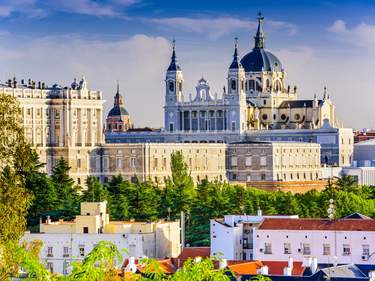
5 days / from 1480 USD
Made for Madrid
Take to the Spanish capital for art, culture and a taste of life in the city, Madrileño-style. Explore age-old churches and pretty plazas, stroll through the lovely Buen Retiro Park and visit captivating Toledo. Then, come sundown, discover the city's vibrant barrios and lively nightlife.
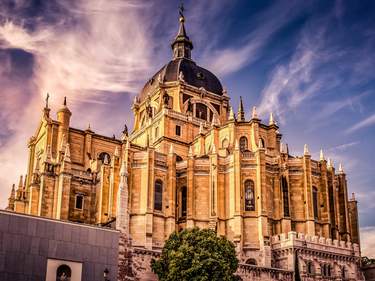
4 days / from 1399 USD
A Madrid getaway
Spend four days discovering the wonders of Spain's capital Madrid: from fascinating museums like El Prado and Reina Sofia over exploring unknown corners with your private guide to a day trip to the surroundings, this itinerary packs the best of Madrid.

18 days / from 4590 USD
Hidden Spain - From Barcelona to Basque Country
Do you want to explore highlights in Spain while staying in nature at the same time? Look no further. Start your Spanish adventure in Barcelona before heading off to the mountains - drive your rental car to Andorra and further on to Basque Country. Decide between driving yourself or guided tours.
Leaving Paris , cruise through the gentle hills of Champagne and Reims to the quaint capital of Luxembourg City, and explore the small country’s many fairy-tale castles.
Trier , Germany’s oldest city, is less than an hour’s drive north-east, where ancient Roman baths and basilicas stand marvellously intact.
Spend a night in the medieval village of Bacharach in Riesling wine country, before wandering the riverside streets of Heidelberg . Onward to Nuremberg , and then to Leipzig for a strong dose of hot caffeine with your Cold War history, classical music and cake. Make sure to check out the complete guide to the UNESCO world heritage sites in Germany to visit some of the palaces and gardens , industrial heritage sites or historic town centres along the way.
Detour to Dresden , restored after the ruinous bombing in WWII, before ending in one of Europe’s coolest cities: the creative paradise of Berlin .
For a longer trip, start in London and take the ferry or channel tunnel to France , transforming this road trip into a pilgrimage between Europe’s holy trinity of artistic hubs.
- Best for: Culture vultures looking for bragging rights.
- How long: 1–2 weeks.
- Insider tip: If you’re driving in France, you’ll legally need to keep safety equipment in your car (a reflective vest and hazard signal). Additionally, be prepared with a cash or credit card to pay the French road tolls on the way.
Thinking exclusively about a vacation in France? Start planning your trip by finding out how to get there .

Panoramic aerial view of Trier featuring the famous Trierer Dom © S-F/Shutterstock
Begin in Bilbao , where the surrounding beaches boast world-class surf, then drive along the Atlantic to San Sebastian : watersports wonderland and foodie heaven. From there venture south through the rugged wilderness of the Pyrenees to Pamplona . Climb the Roncesvalles Pass before looping back to the coast. Or continue along the Bay of Biscay to the attractive seaside resort of St-Jean-de-Luz.
Travellers with a little extra money lining their pockets will be happy to spend days lingering on boho beaches in Biarritz, while those looking for gargantuan swell can do no better than the surfer hangouts in Hossegor.
Finish the trip northward in Bordeaux – the Pearl of the Aquitaine – where café-strewn boulevards and world-class wines are your trophies at the finish line.
Bilbao to Bordeaux
- Best for: Sun-seeking surfers and foodies.
- How long: 1 week.
- Insider tip: Check seasonal surf forecasts before you go, and look into coastal campsites if you're on a budget.The Basque roads beg for a convertible – or a colourful camper van with surfboards strapped to the roof.

Biarritz City and its famous beach © Boris Stroujko/Shutterstock
Kick off in the city of Bergen , on Norway’s southwest coast, and make way past mighty fjords to Voss and the colossal Tvindefossen waterfall. Then check the world's longest road tunnel off your to-do list, a cavernous 24.5km route under the mountains.
Catch a quick ferry across the Sognefjord and carry on to the Fjaler valleys, a land of glaciers and snowy mountain peaks, to the waterside towns of Stryn or the mountain village Videster.
Work your way northward to the well-touristed towns of Geiranger, down the death-defying hairpin turns of Trollstigen (literally “The Troll Path”).
After the descent, ferry across the Eresfjord to Molde and Kristiansund. For the final stretch, drive the iconic Atlantic Road with its roller-coaster-style bridges, and conclude with some well-deserved downtime upon the still waters and stilted homes of Trondheim .
- Best for: Thrill seekers and landscape junkies.
- How long : 5–7 days.
- Insider tip : This route is best tackled from late spring to early autumn. If you plan on road tripping during Norway’s winter months, be sure to check online ahead of time for road closures due to snow and ice.
- Ready to explore Norway? Start preparing by finding out how to get there .

The idyllic surroundings of Stryn in Norway © Mikolajn/Shutterstock
Start from Bucharest , travelling northward through the Carpathian mountains to Transylvania, and make a mandatory stop at Bran Castle (claimed to be the old stomping grounds of Dracula himself).
Take the Transfagarasan mountain road, one of the most scenic routes in the world, towards the age-old cities and countless castles of Sibu, Brasov and Sighisoara. Then set course to the unexplored architectural gems of Timisoara.
Carry on towards the tranquil hot springs and hip ruin pubs of bustling Budapest, and be prepared to stay at least a few days. Depart for Bratislava – a capital full of surprises – from where it's only an hour further to the coffeehouses and eclectic architecture of Vienna .
- Best for: Anyone looking for a break from the conventional tourism of western Europe.
- How long: 7–12 days.
- Insider tip: Exercise caution when driving through tunnels. Though the weather outside may be fine, tunnels are often slippery.

Bran (Dracula) castle in Transylvania, Romania © Kanuman/Shutterstock
Start in Braga , before driving south to the medieval town of Guimarães , a UNESCO World Heritage site. Then it’s onward to the breathtaking "second-city" of Porto , though it's nothing less than first-rate. Check here for the best places to stay in Porto .
Drive east to the vineyards and steep valleys of Penafiel and Amarante before hitting the coastal road to the vast white beaches of Figueira da Foz - among the best beaches in Portugal . From here it’s on to Peniche, Ericeira and then Lisbon : the country's vibrant capital that's on course to beat out Berlin for Europe’s coolest city. Check out the best areas to stay in Lisbon as well as the best places to eat to match your taste.
Drive south to Sagres , Arrifana and Carrapateira. After soaking up the sun on the picturesque shores of the Algarve, wrap this road trip up in the Mediterranean dreamland otherwise known as Faro .
If you’ve still got itchy feet when you reach Faro, take the ferry from nearby Algeciras in Spain to Morocco . Imagine the satisfaction of parking your ride in the desert village of Merzouga, before exploring the Sahara – that's right, it would feel awesome.
- Best for: Beach bums and oenophiles.
- How long: At least 10–14 days.
- Insider tip: As Portugal is among the more affordable destinations in Western Europe, this can be an especially great trip for travellers on a budget .

Oliveira Square, Guimarães © Patricia Henriques Barros/Shutterstock
6. High-altitude adventure on Germany's Alpine Road
The Alpenstrasse, or Alpine Road, is your ticket to a bonafide Bavarian odyssey: a safe route through the unforgettable vistas of Germany 's high-altitude meadows, mountains, crystal-clear lakes and cosy village restaurants. Start lakeside at Lindau on the Bodensee and head to Oberstaufen for a therapeutic beauty treatment in the country’s “Capital of Wellness”.
Venture eastwards to the Breitachklamm gorge, where the river Breitach cuts through verdant cliffs and colossal boulders. Carry on to the town of Füssen – famous for its violin makers – stopping along the way at any quaint Alpine villages you please. The iconic Neuschwanstein Castle , the same structure that inspired Walt Disney to build his own version for Cinderella, isn’t far off either - one of those places even more beautiful in winter.
Speaking of winter, hit the slopes of Garmisch-Partenkirchen for some serious skiing if the season’s right. Stop at Benediktbeuern on your way to the medieval town of Bad Tölz, then up through the stunning wilderness scenes of the Chiemgau Alps before ending in the regional capital of Munich . If you’re missing the mountain roads already, carry on to Salzburg in Austria and stop in the ice caves of Werfen on the way.
Lindau to Oberstaufen
- Best for: Outdoorsy types.
- How long: 5–8 days.
- Insider tip: Give your road trip an extra purpose and pack your skis or snowboard. Garmisch-Partenkirchen ski season starts early December and ends early May. In the summer months, you can go hiking or climbing instead.

Church in Benediktbeuern © FooTToo/Shutterstock
Start in Athens and take the coastal roads south through the Athenian Riviera to Sounion, situated at the tip the Attic peninsula. Watch a sunset at the Temple of Poseidon, then drive northward through mythic mountains to the fortress of Kórinthos before posting up in the legendary city of Mycenae (home of Homeric heroes).
If you’re craving a luxurious seaside stay, look no further than the resort town of Nafplio. If not, carry onwards through the unforgiving landscapes to Mystra, the cultural and political capital of Byzantium.
Want more? Then it’s on to Olympia, sporting grounds of the ancients, and the mystic ruins of Delphi. Loop back towards Athens, approaching the city from the north.
- Best for: Sun-worshippers,and anyone who’s ever read Homer or watched overly action-packed flicks such as Troy and 300 .
- How long: 5–10 days, though it’s easy to trim a version of this road trip down to a long weekend.
- Insider tip: If you’re parking in central Athens keep an eye out for coloured parking spaces – these are reserved for locals, so if you park here you’ll get a ticket.

Aerial view of Nafplio city in the summer © Olga Kot Photo/Shutterstock
Leave the hectic pace of England ’s capital London behind. Make for Oxford, home of the world’s oldest English-language university, and a place of storied pubs where the likes of J.R.R Tolkien and Lewis Carrol regularly wet their whistles.
If you’ve got the time, it’s a quick drive to the cottages of the Cotswolds - check our guide to the prettiest villages to visit . If not, cruise up to Stratford-Upon-Avon, birthplace of Shakespeare.
Take the two-and-a-half-hour drive north to Manchester for a city fix and watch a football match. Carry on north to the Lake District National Park, one of the most beautiful places in England . Drink in the scenery that inspired England’s finest romantics, then head across the Yorkshire dales to the quirky medieval lanes of York, founded by the Romans nearly 2000 years ago.
From there it's north again past tiny villages to the majestic wonders of Edinburgh . If you’re craving the rugged comforts of the highlands go to Stirling, Inverness, or the Western Isles – worth the drive indeed. And if you are going by electric car, check out this great guide to plan your electric car road trip in Britain .
London to Inverness
- Best for: Locals that want to feel like foreigners, and foreigners that want to feel like locals.
- How long: 5–10 days.
- Insider tip: Destinations like Stratford-Upon-Avon and York (not to mention London) are true tourist hotspots in the summer. Plan your road trip for spring or autumn and you’ll enjoy the beautiful scenery along with fewer crowds.

Catbells in The Lake District © Michael Conrad/Shutterstock
Hit the gas in the Sicilian capital of Palermo, the biggest historic centre in Italy after Rome and arguably the country’s most chaotic metropolis.
Adventure onwards along the Tyrrhenian coast to the golden sands of Cefalù – a great holiday spot for families, with a mellow medieval town centre to boot.
Get to the island’s heartland and the ancient city of Enna. Surrounded by cliffs on all sides, and built atop a massive hill, you'll feel as though you've walked on the set of Game of Thrones . Head southeast to the shores of the Ionian Sea and dock in Siracusa, once the most important in the western world while under ancient Greek rule with much of its historic architecture intact.
Then it’s up to Catania for a trip to molten Mount Etna, the tallest active volcano on the entire European continent.
Finish the trip in Messina, or ferry across into the Italian province of Calabria where rustic mountain villages, friendly locals and the idyllic sands of Tropea and Pizzo await – refreshingly devoid of foreigners.
- Best for: Anyone looking for a truly authentic Italian experience, and of course, hardcore foodies.
- How long : 6–12 days.
- Insider tip: Remember that southern Italy can get very hot in July and August. Avoid the heat of the day with a leisurely lunch (go easy on the wine if you’re driving!) and travel in the early morning or evening instead.
Want to explore Europe even more? We have prepared the most convenient European itineraries for you to explore the continent.

Cefalù on a beautiful day with clear skies © Cezary Wojtkowski/Shutterstock
Planning for the perfect trip to Europe can take hours of research. Why not allow us to take can of the planning and booking, allowing you to make the most of your trip? Our tailor made trips are created by local travel experts and are completely customised to your preferences.
- Nature & Wildlife
- Coasts & Islands
- National Parks & Reserves
- Off the Beaten Track
- History Culture Heritage
- Architecture
- Inspiration
- Travel Tips
Planning your own trip? Prepare for your trip
Use Rough Guides' trusted partners for great rates
Find even more inspiration here

Ready to travel and discover Spain?
Get support from our local experts for stress-free planning & worry-free travels.
- Skip to main content
- Skip to search
- Skip to footer
Products and Services

Making AI work for you
Cisco AI is where the AI hype ends and meaningful help begins.
Certifications
Cisco Validated
Announced at Cisco Live
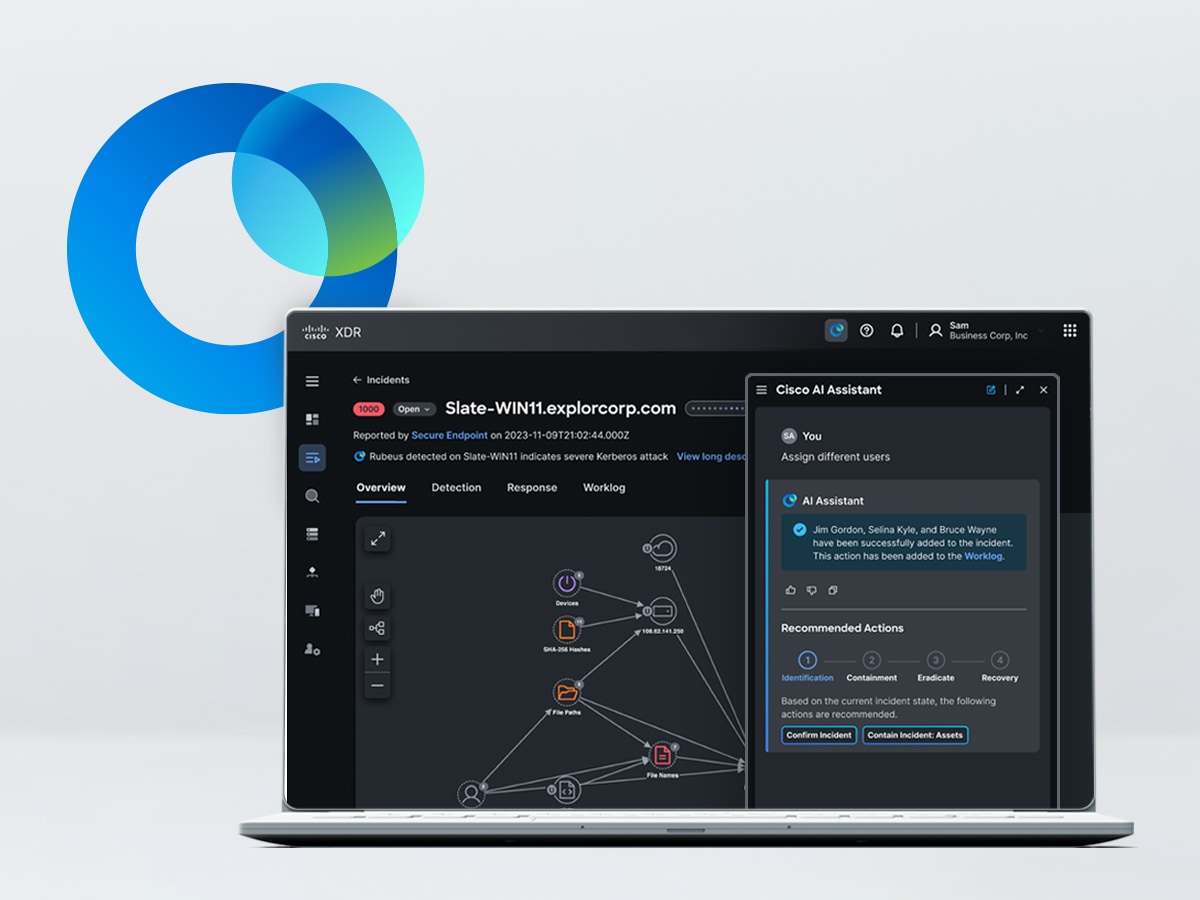
Cisco XDR with AI Assistant
Remediate the highest-priority incidents with an AI-first XDR solution.

Cisco Networking Cloud
One platform experience. Assured, secured, and simplified.

Secure Firewall 1200 Series
Compact, all-in-one SD-WAN firewall for your distributed enterprise branch.
Catch up on what you missed
Keynote: Vision for the Future
CEO Chuck Robbins addresses how to connect and protect your business in the AI era.
Keynote: Go Beyond
Learn about Cisco, Splunk, and reaping the benefits of the AI revolution.
Deep dive sessions
See tech announcements and strategic direction from Cisco's senior tech leaders.
View keynotes and tech sessions in the on-demand library.
Press release
Cisco Live puts AI center stage and more.
Cisco launches $1B global AI investment fund.

Validate your AI skills with certifications
Join all Cisco U. Theater sessions live and direct from Cisco Live or replay them, access learning promos, and more. It's time to Go Beyond the basics and level up your learning.
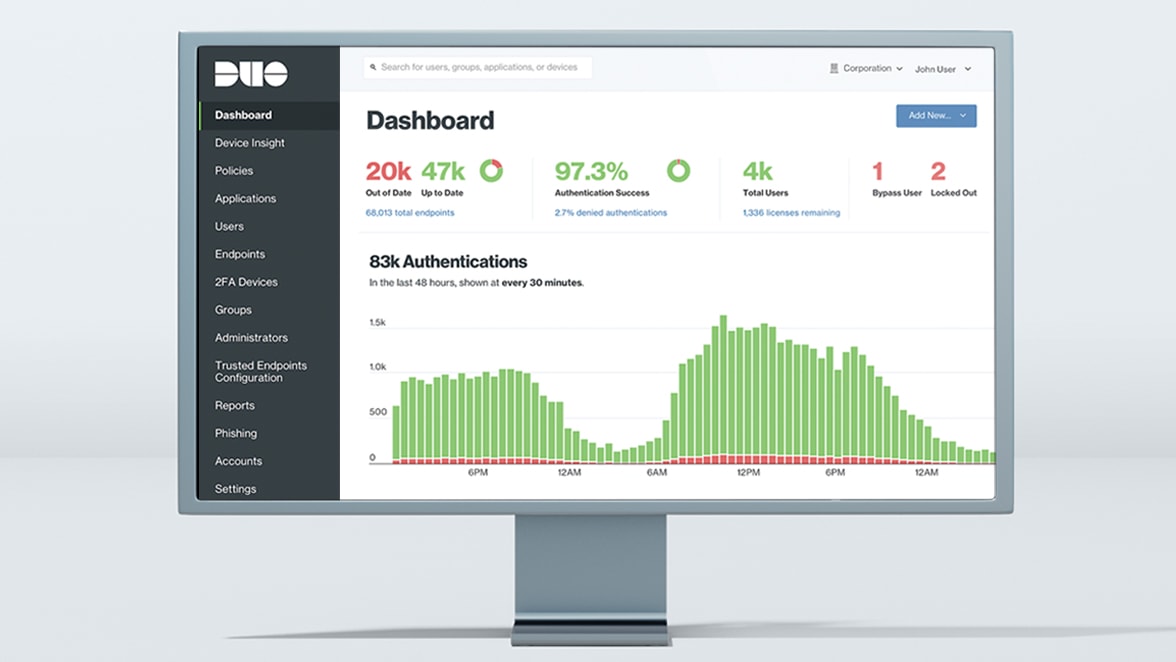
Identity is the new perimeter
Stop identity-based attacks while providing a seamless authentication experience with Cisco Duo's new Continuous Identity Security.
Inside Cisco
- More events
Analyst report
Forrester names Cisco a Leader in OT cybersecurity
Cisco and splunk launch integrated full-stack observability experience, 2024 global networking trends report, cisco reveals nexus hyperfabric, 2024 cisco cybersecurity readiness index, thousandeyes digital experience assurance shifts it operations.

IMAGES
VIDEO
COMMENTS
If you are planning to go motorhome skiing or tour Europe in a motorhome in the Winter, think about your tyres and snow chains. It's compulsory in most countries with Mountains (France, Germany etc) to have winter tyres fitted and to carry snow chains which will fit onto your tyres. This is usually enforced between 01 November and 15 April.
With one of the best winter climates in Europe and friendly locals, Spain is a perfect country for a motorhome road trip. We've spent over 18 months travelling in a motorhome in Spain, and in this campervanning and motorhoming guide you'll find lots of practical and helpful information.
The cost of hiring a motorhome in Europe varies depending on the size of the motorhome, rental duration, and season. On average, prices can range from €100 to over €200 per day. It is advisable to shop around for the best deals and consider off-peak season rentals for lower prices. 16.
Guided RV tours through Europe and the British Isles Truely experience the diverse European cultures, history and food 24 years of fun filled tours and great memories! Travel with the experts with hundreds of happy customers Let us make your overseas motorhome adventure the trip of a lifetime!
Whether you're in a motorhome, campervan or even a car with a tent, our flexible three month European itinerary will take you on an incredible road trip around the continent. From dramatic mountains, the Adriatic and Mediterranean seas, crystal clear lakes, lively and cultured cities and some spectacular driving roads, this journey will share ...
The first step to touring Europe in a motorhome is to prepare your van. It's essential to ensure your vehicle is in tip-top condition and adequately prepared. Here's a comprehensive guide to getting your van road-ready for the big adventure: 1. Mechanical Check-Up.
FUEL £4200. Diesel to cover 10k non-motorway miles at an average cost of 1.80p per litre and assuming 22mpg. LPG (refillable) for heating, hot water, cooking & fridge. INSURANCES £1680. 365 European motorhome insurance including breakdown cover. True Traveller annual backpackers insurance.
Europe by campervan: Travel Routes and Itineraries Where to begin your road trip, or hire your campervan or motorhome . Where you begin your trip and collect your camper is up to you. It makes sense to fly in to Europe and collect your camper from the same place. The exciting thing is that the best place to begin depends on your itinerary.
Travelling through Europe in a campervan or motorhome is one of the best ways to see these beautiful countries at your own pace. So if you've been reading my detailed motorhome articles, you should now be well and truly prepared, and "in the know" to get yourself ready for your big trip.. Many people have commented on the level of detail in these articles, and the amount of planning that ...
13 The Fairy Tale Road, Germany. Germany is one of the largest countries by area in Western Europe, so exploring it in a campervan is a great way to see the natural beauty usually missed when sticking to cities like Berlin or Munich. Rent a campervan and drive the Fairy Tale Road in Germany, which starts in Frankfurt.
Route Planning for a Europe motorhome or camper trip. Using Google Maps for route planning a European motorhome trip; Taking a Motorhome to Europe from the UK; Things to bring; Europe motorhome trip planning- more things to consider. The weather/ time of year; Finding overnight places as you go. French Aires; Motorhome trips- final tips to make ...
Arguably, taking a motorhome is the first step in making your road trip unique- campsites are a hotspot for meeting locals and learning about the hidden gems of each area. Now that motorhome hire in Europe is increasing in popularity, campsites offer visitors the unique experience to meet people from all over the continent.
Margrietroute. The Margrietroute takes you along the most beautiful of Denmark. The route was named after Queen Margrethe II of Denmark's favorite flower, the daisy. The route is therefore clearly marked with the flower. The route is 3700 kilometers long in total. There is no fixed starting and finishing point.
German Fairy Tale Route. German Wine Route. Green Road/Route Verte. German Half-Timbered House Road. Austrian Romantic Road. German Volcano Route. UNESCO World Heritage Routes Germany. Baden Wine Route. Show all TOP 20 Routes.
Day 2 - Colmar, France. The second day saw us driving 3.5hrs south into France to visit the old Alsacian towns of Colmar and Eguisheim. We spent the first part of the afternoon exploring Little Venice, before heading to explore more of the Old Town and stopping for some lunch.
On the road. We often go on local roads and you will see picturesque European villages, lovely countryside and old towns right from the driver's or co-pilot's seat of your comfortable rental RV. On our tours we only have 2 to 3 long driving days (about 300 miles). On those days we will drive parts of our route on the Autobahn (freeway).
With one of the best winter climates in Europe and friendly locals, Spain is a perfect country for a motorhome road trip. We've spent over 18 months travelling in a motorhome in Spain, and in this campervanning and motorhoming guide you'll find lots of practical and helpful information.
Reasonably used motorhomes and camper vans ideal for touring Europe range widely between $20,000 and $90,000 depending on size, year, condition, desired luxury amenities, and the country in which you find and purchase the vehicle. Leases often involve a smaller cash outlay depending on the length of your travel.
Days 25 & 26. We drive back to Lithuania and also take a short ferry ride to our RV park in the Curonian Spit National Park. In the afternoon we take a cruise on a boat to marvel at the tallest sand dunes in Europe from the Baltic Sea. The next day you can walk up to the sand dunes and enjoy the little seaside town of Nida.
We rank the 25 Best Places to Visit in Europe for 2023-2024. See which places our readers like the best, and vote for your favorites.
If you've got wheels, wanderlust and a spot of time, a road trip in Europe offers the chance to see the continent at a relaxed pace. From the sunny shores of Portugal to the dungeons of Dracula's castle in Transylvania in Romania, the following itineraries can be easily combined, shortened or altered to suit your wayfaring tastes.Here are 9 of the best road trips in Europe.
Here is a list of the top 10 things to do in the interesting city of Khabarovsk, Russia! 1. Start your trip from the Cathedral of the Transfiguration. Standing beside the scenic River Amur, in the city of Khabarovsk, the Cathedral of the Transfiguration stands in glory.
Things to Do in Khabarovsk Krai, Russia: See Tripadvisor's 26,045 traveler reviews and photos of Khabarovsk Krai tourist attractions. Find what to do today, this weekend, or in June. We have reviews of the best places to see in Khabarovsk Krai. Visit top-rated & must-see attractions.
Europe. Russia. Far Eastern District. Khabarovsk Krai. Khabarovsk. Things to Do in Khabarovsk. Things to Do in Khabarovsk, Russia - Khabarovsk Attractions. ... Tunnel of Hope + 5 locations Road Trip to Mini-Gobi Elsen Tasarkhai Private transfer Dubrovnik <-> Hvar with boat Flavored Hookah Tasting and Lounge in Puerto Vallarta Private Gondola ...
1. Khabarovsk Regional Museum Named After N.I. Grodekov. 454. Speciality Museums. By ShiningSchnee. Very detailed and well-kept artifacts and specimens of everything about this region — from geology to natural sciences... 2. Lenin Square.
Cisco is a worldwide technology leader. Our purpose is to power an inclusive future for all through software, networking, security, computing, and more solutions.